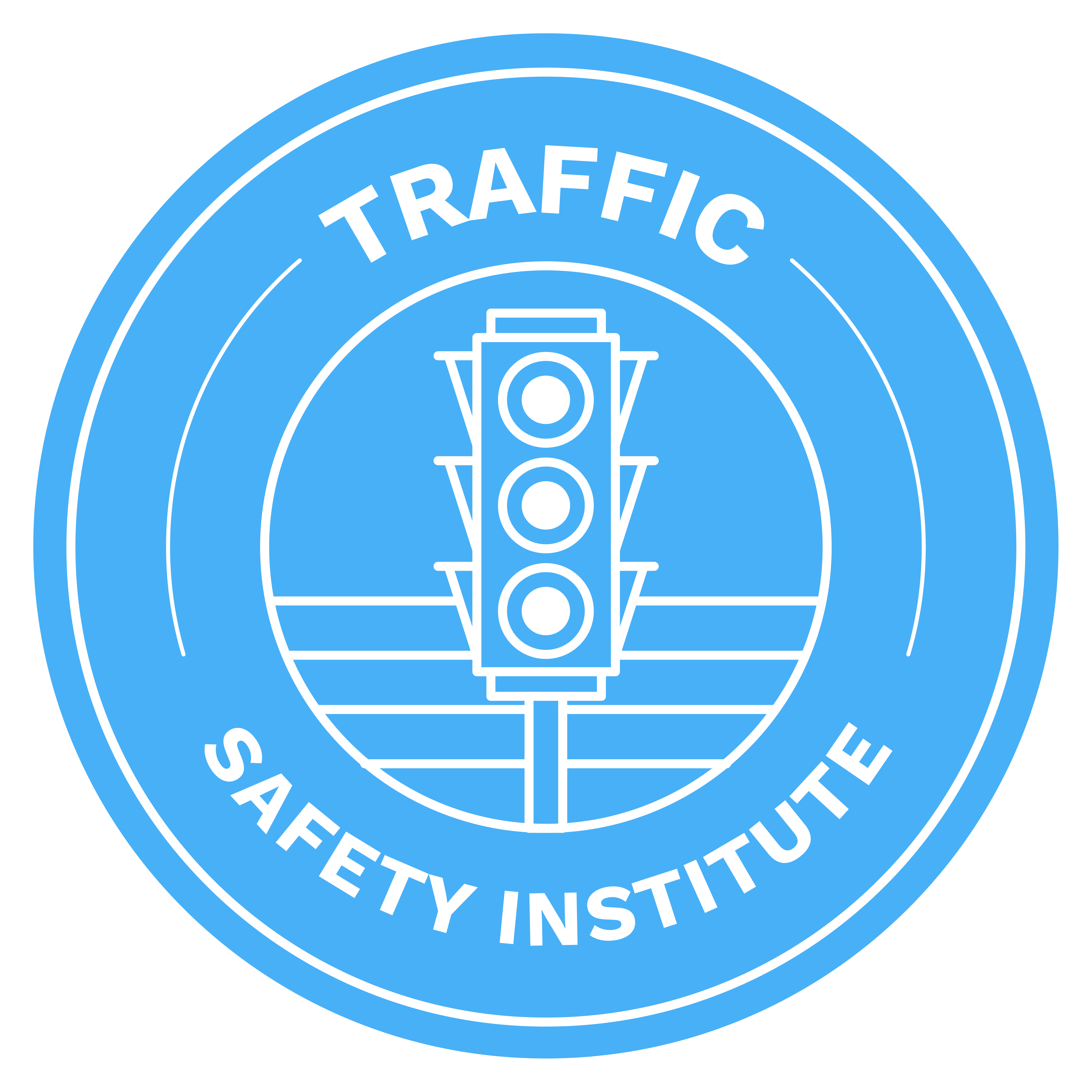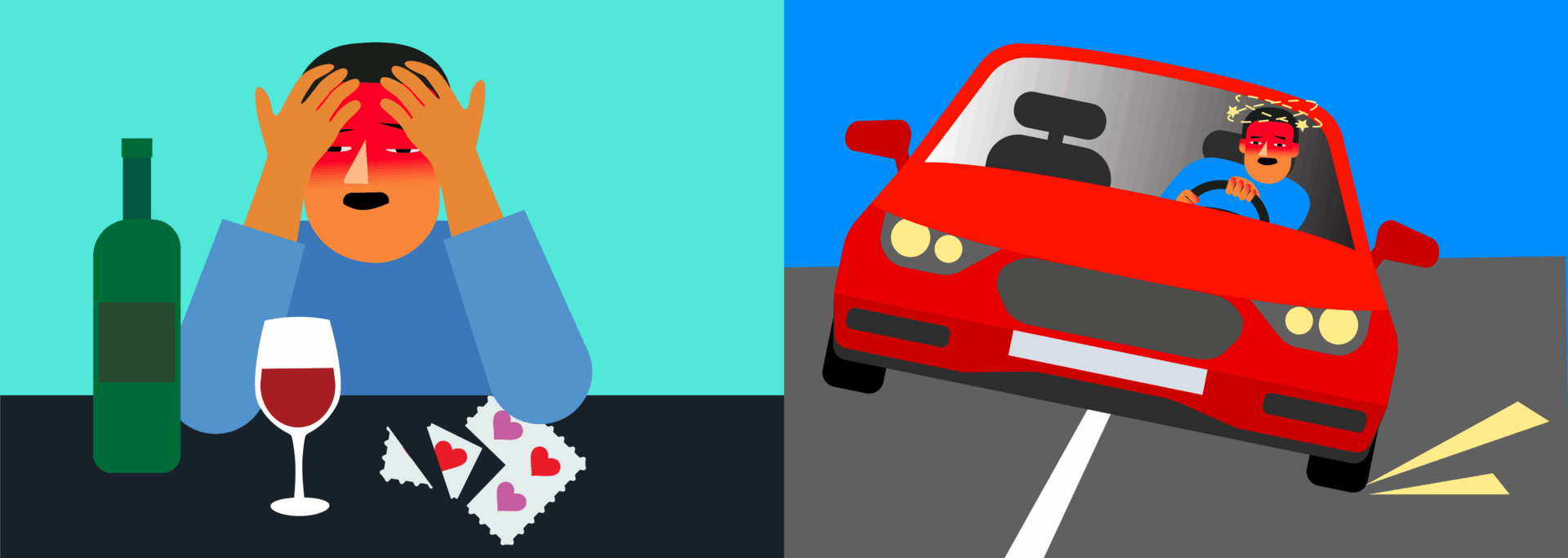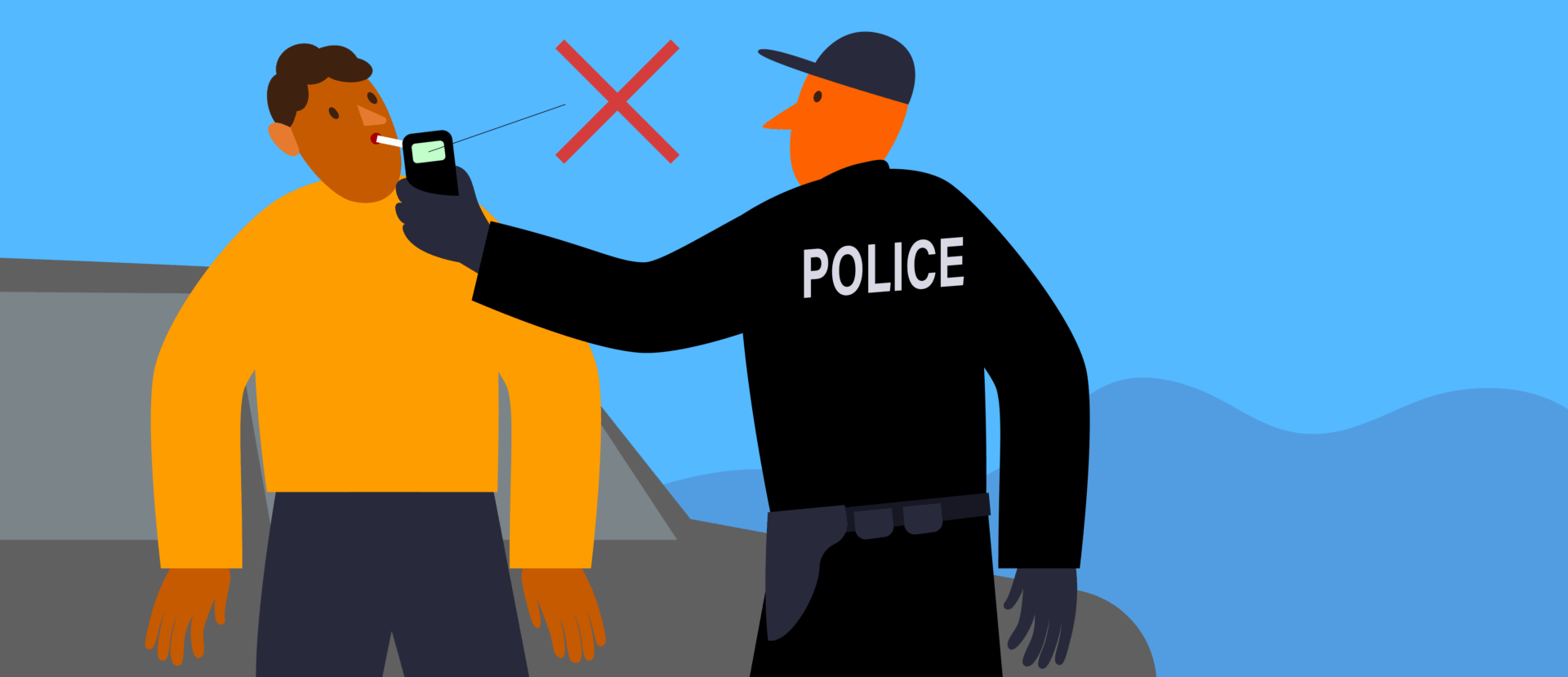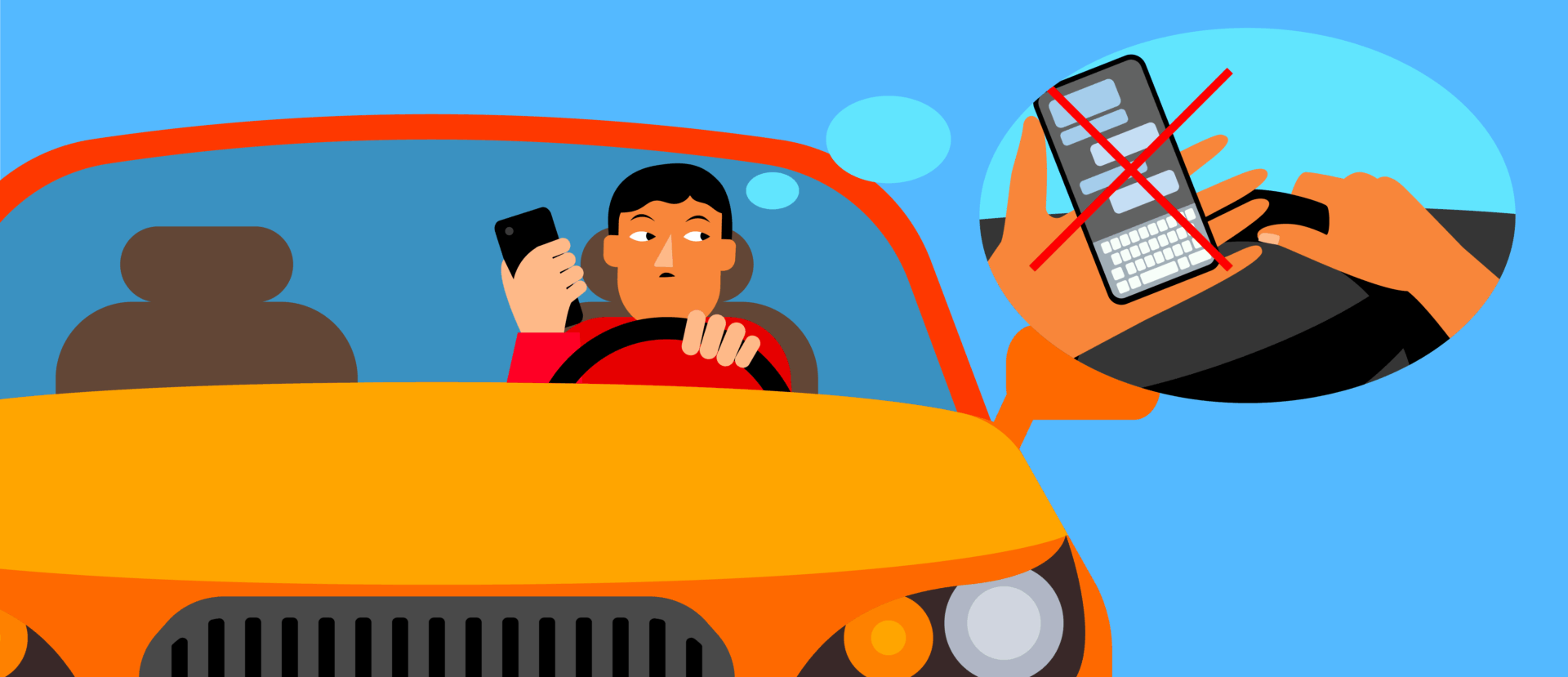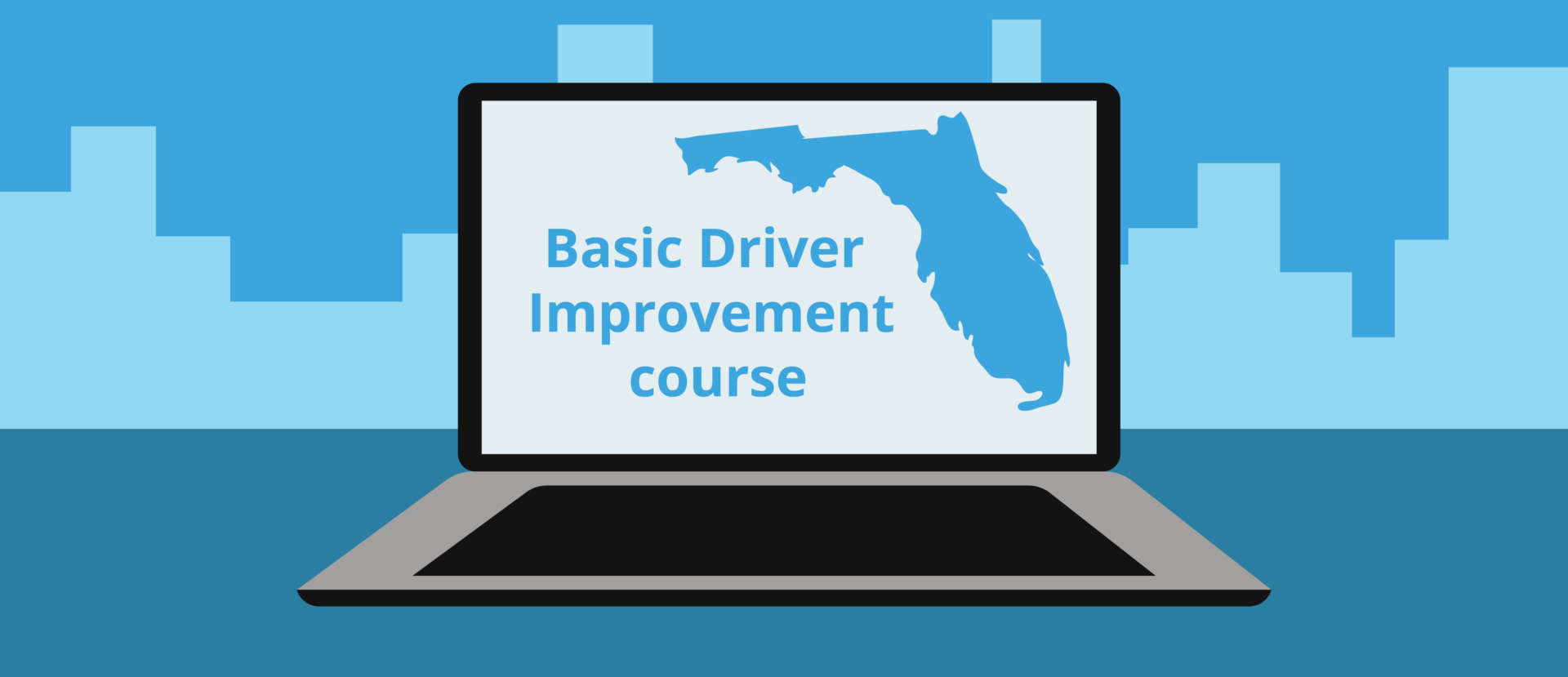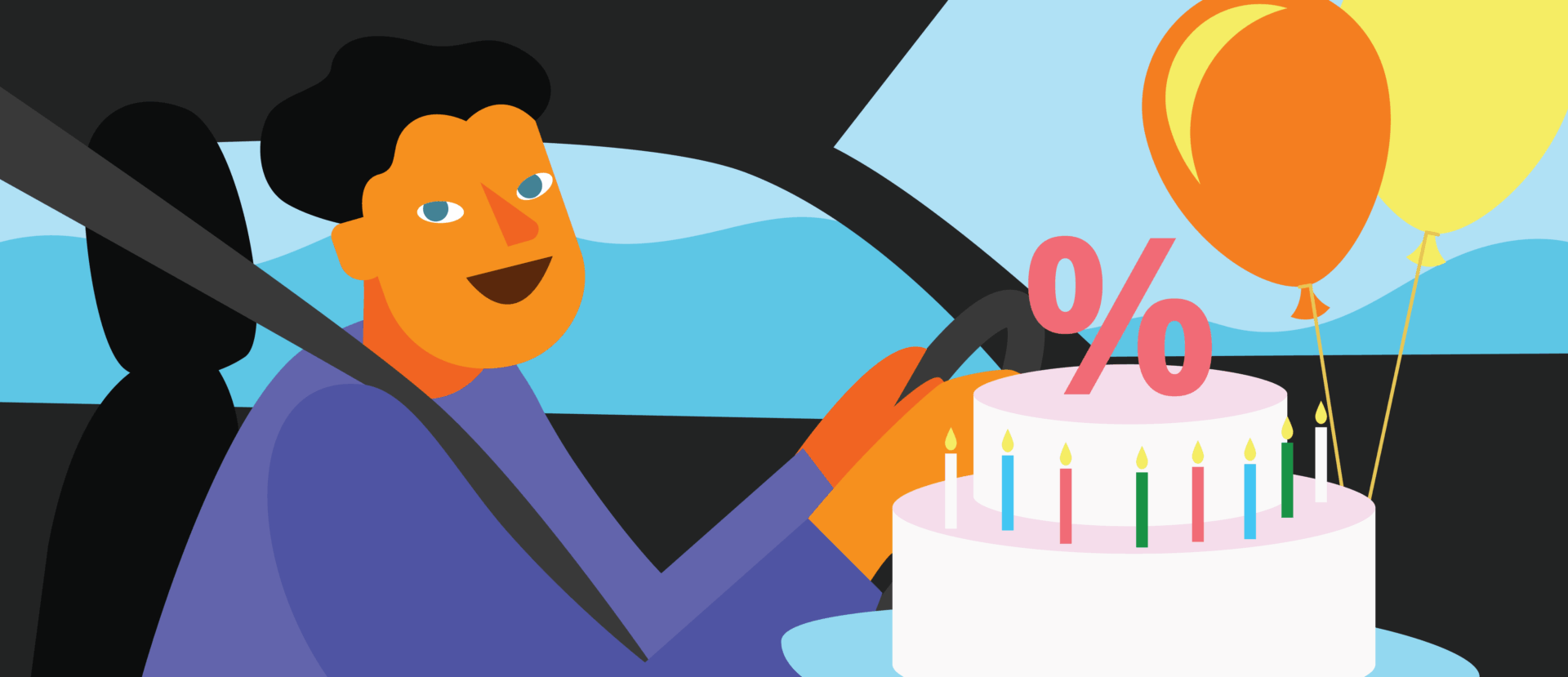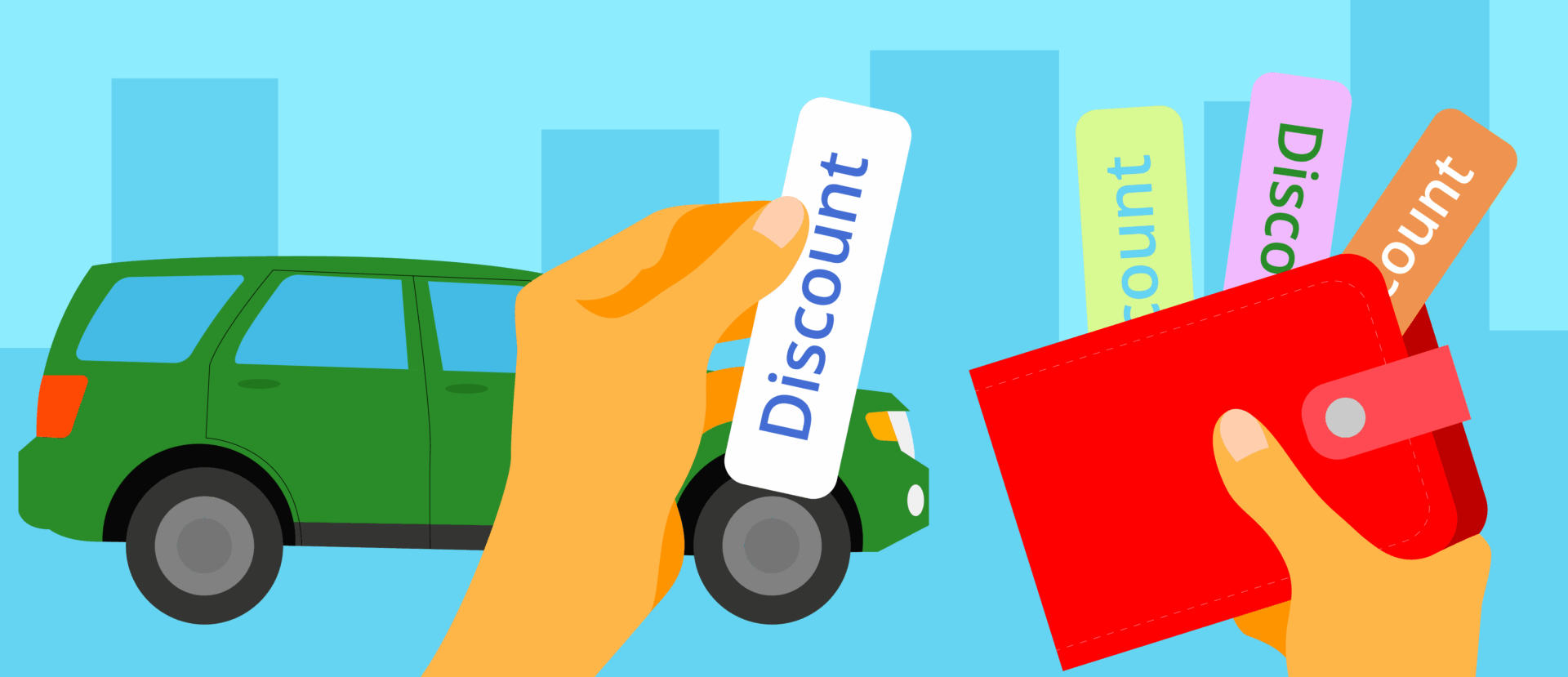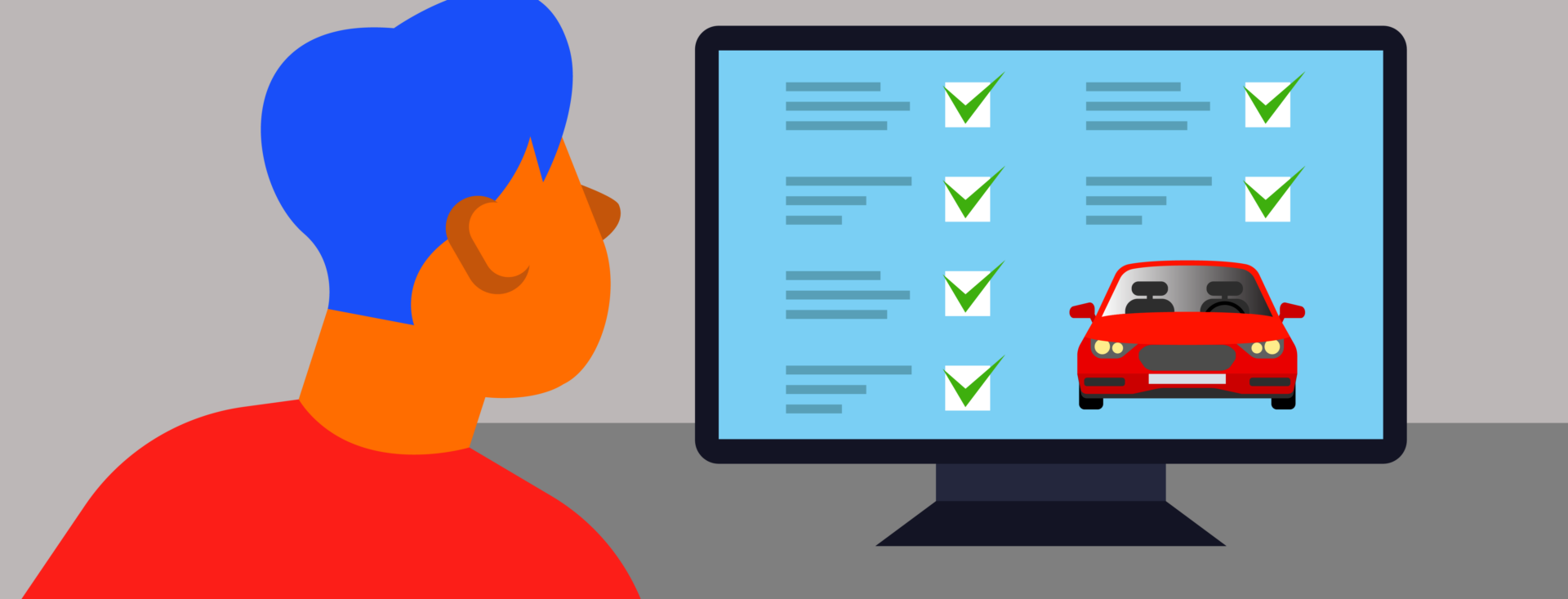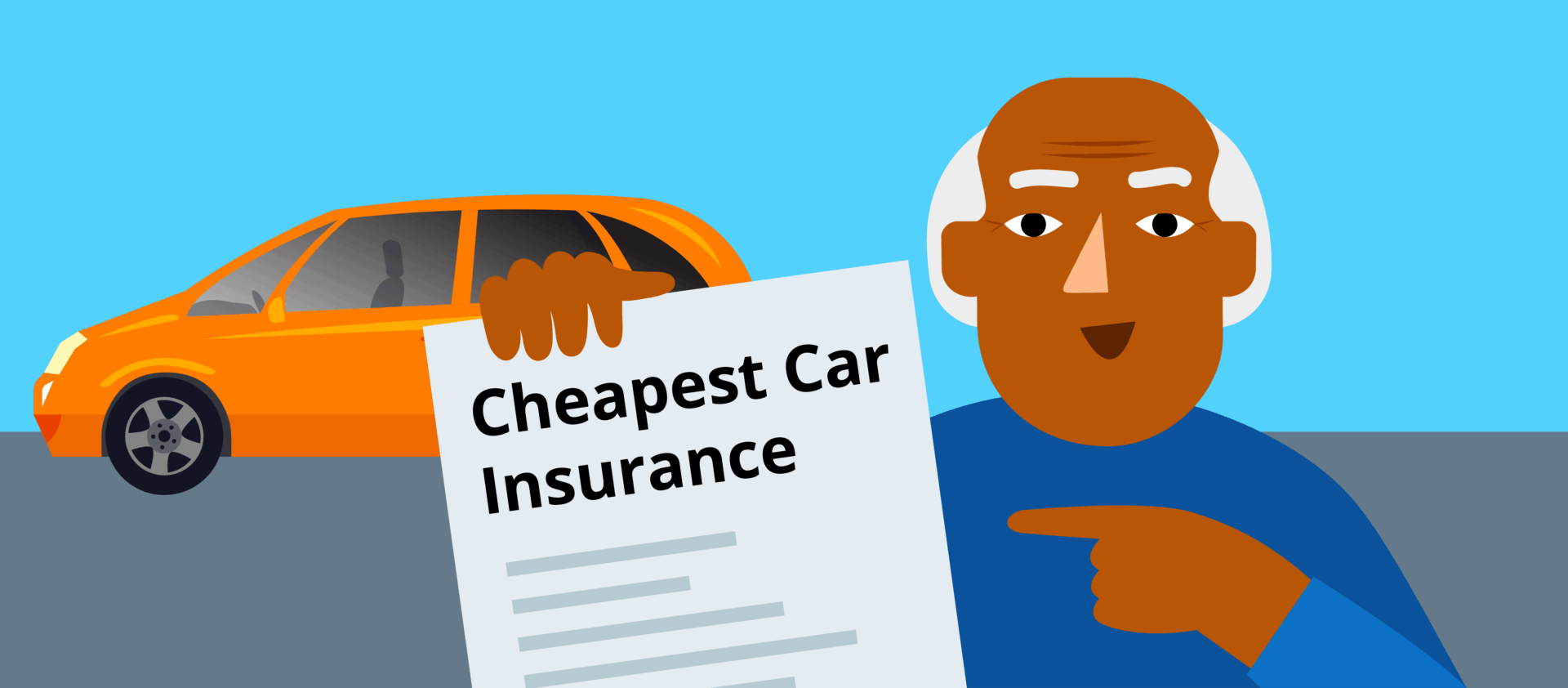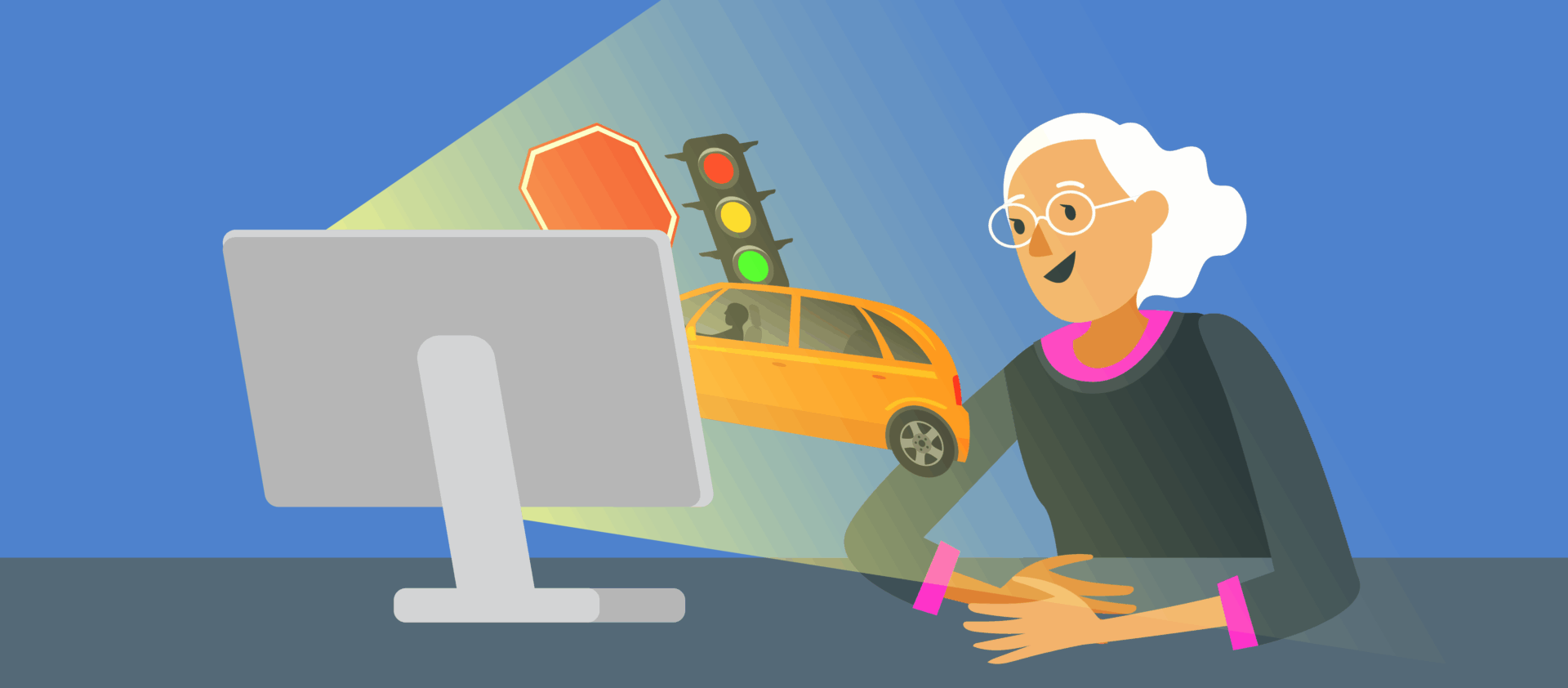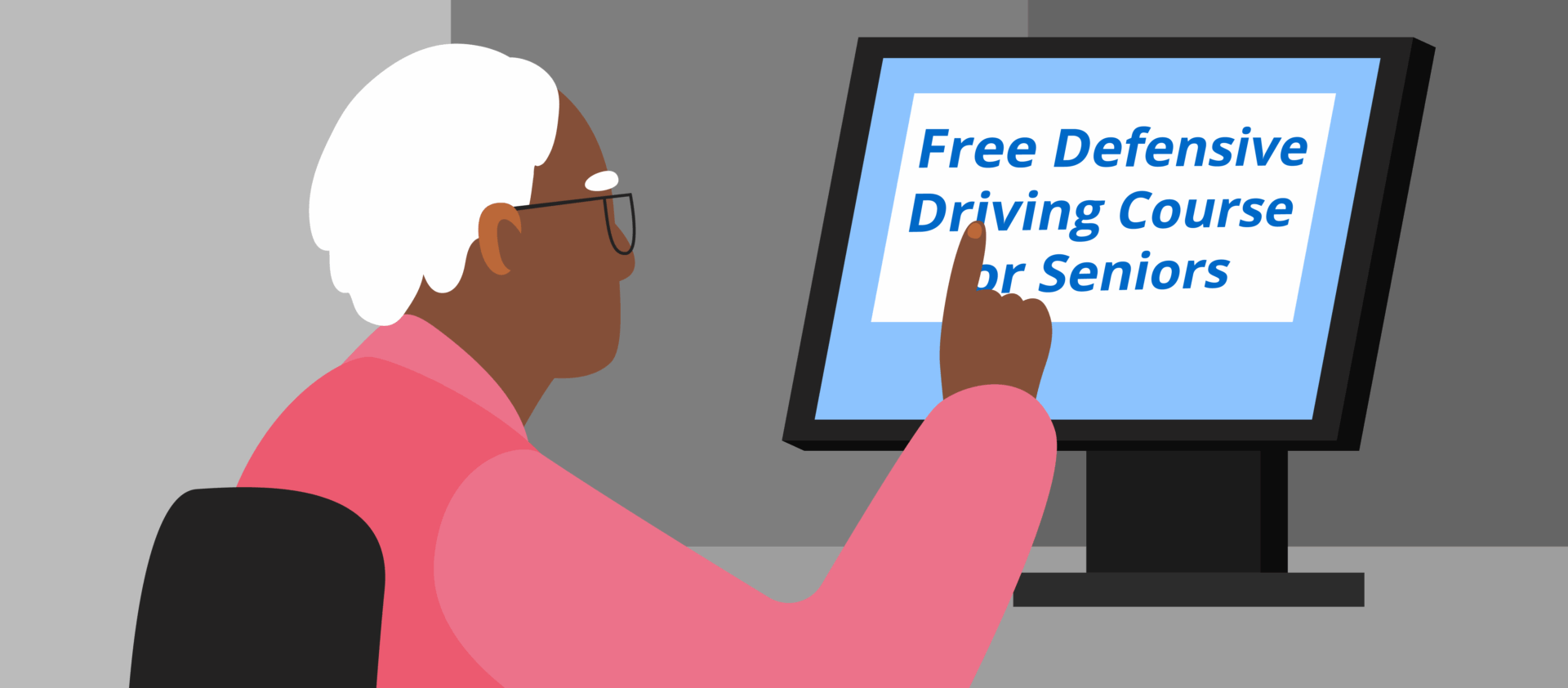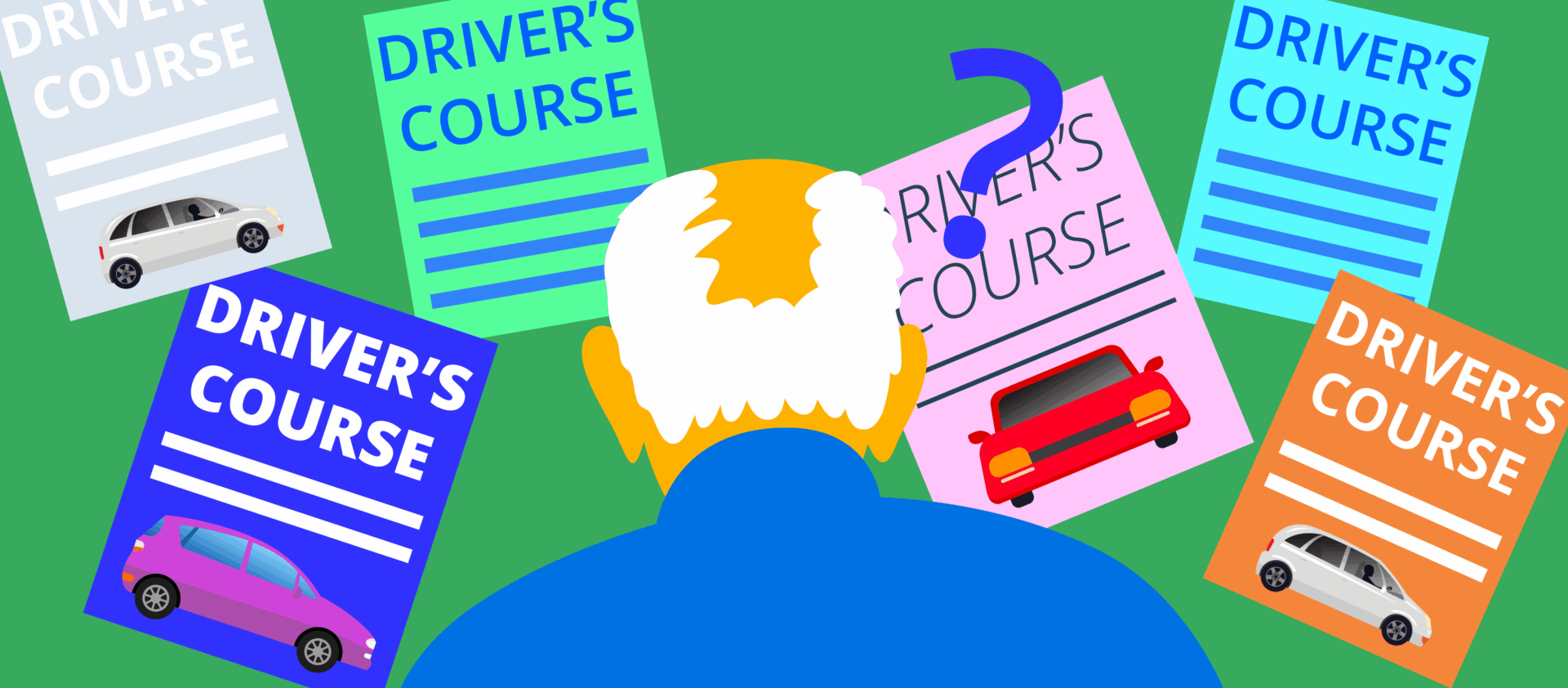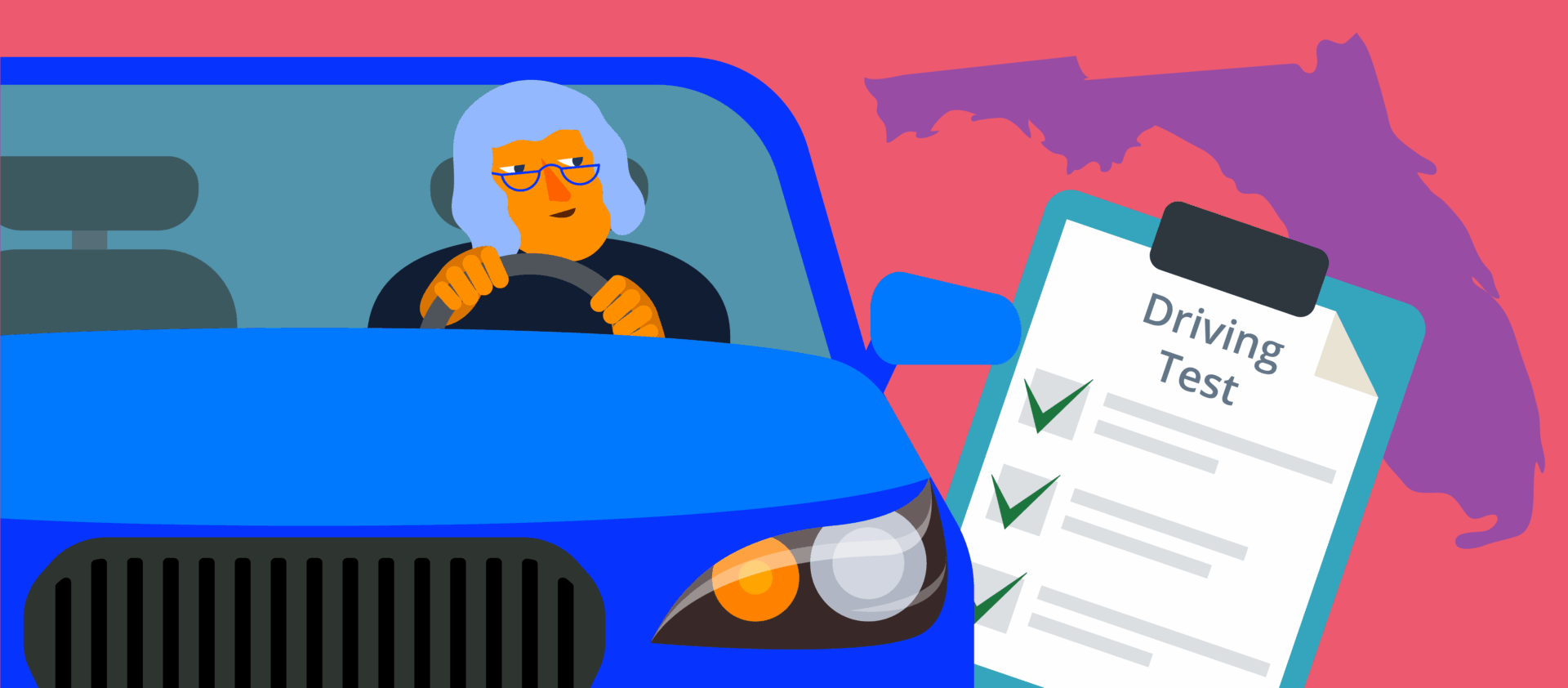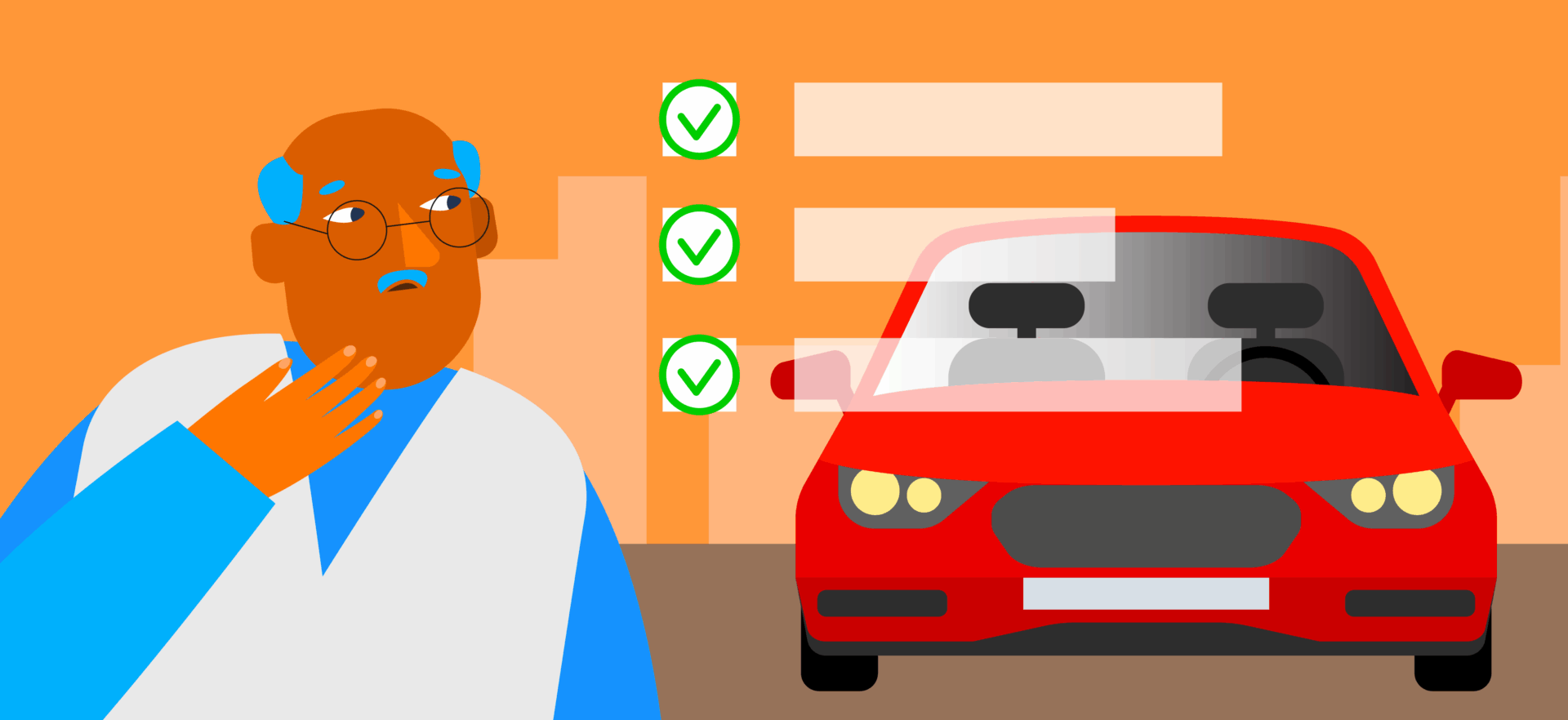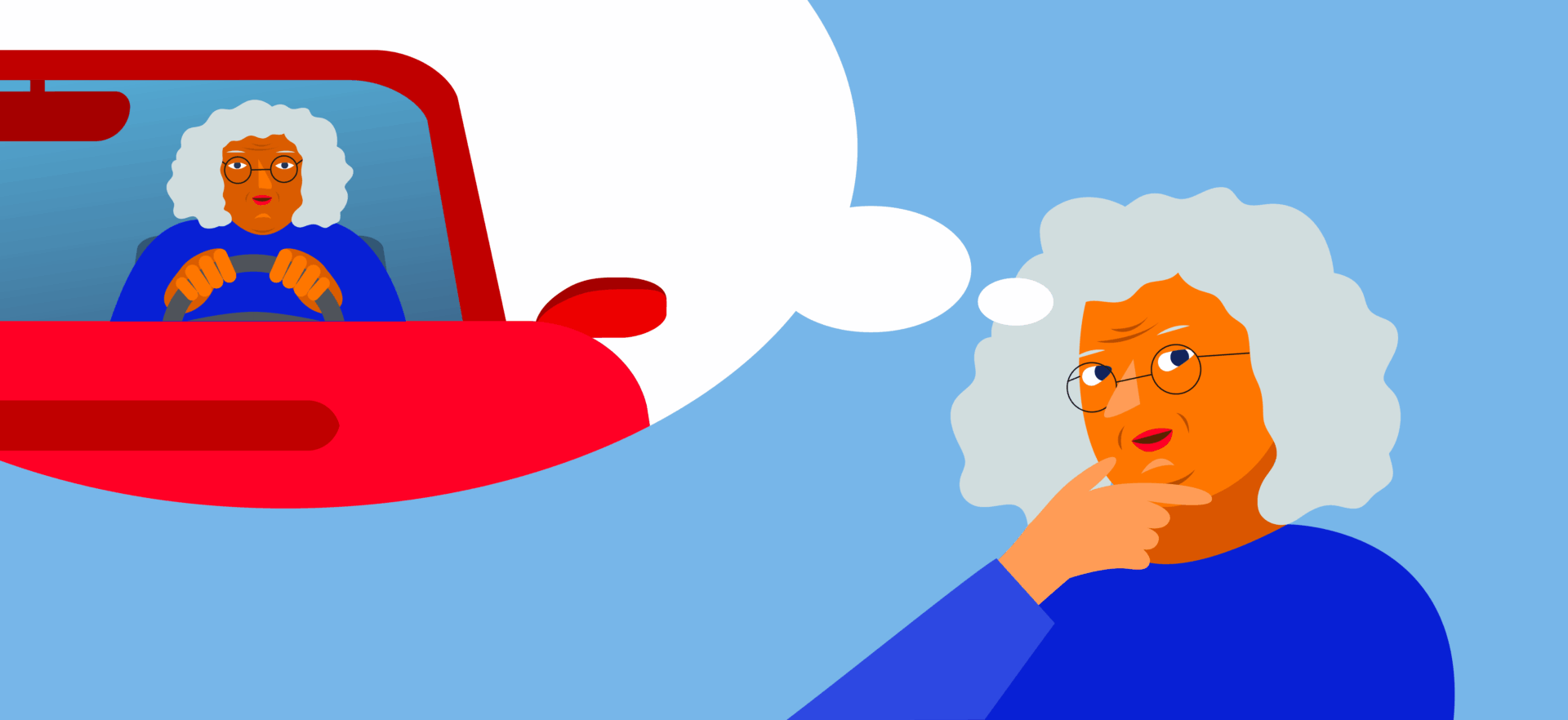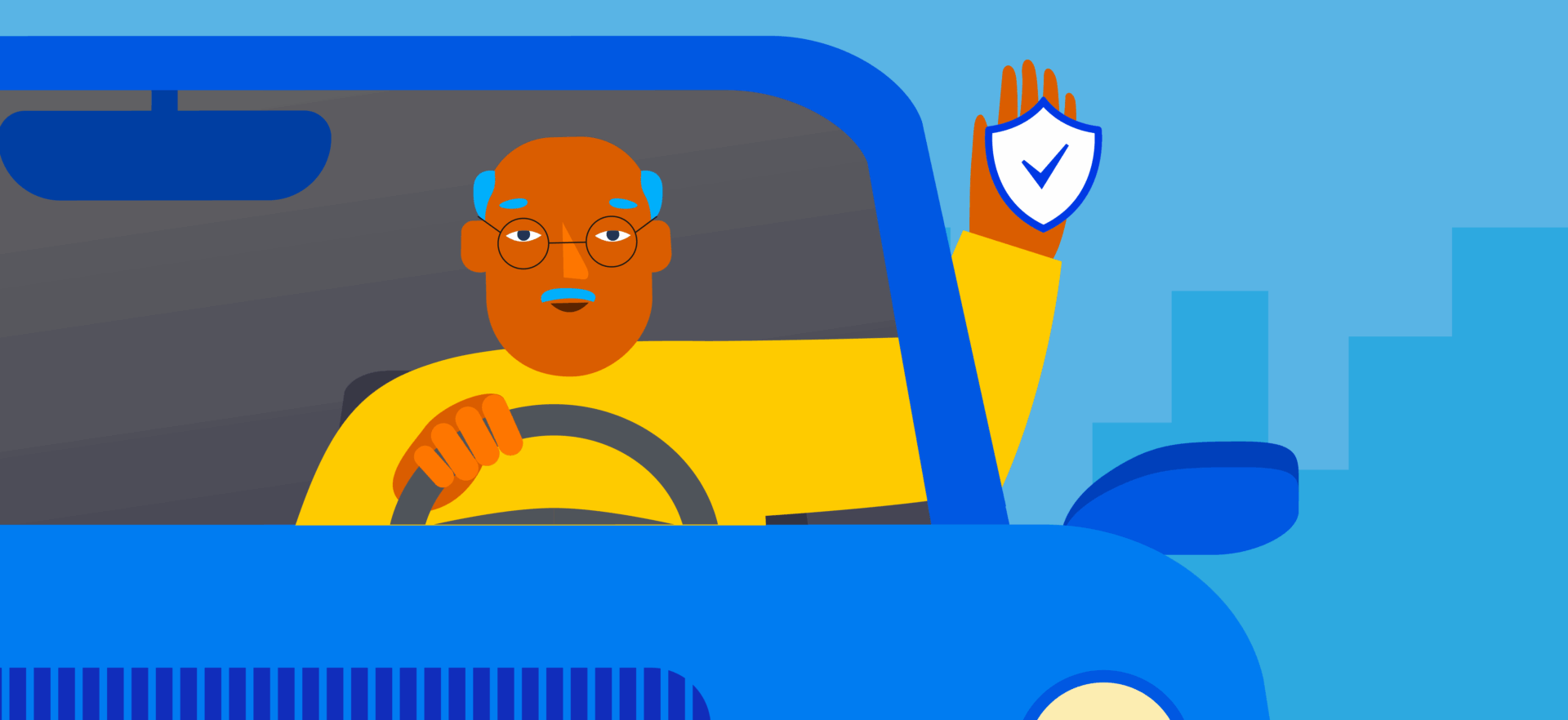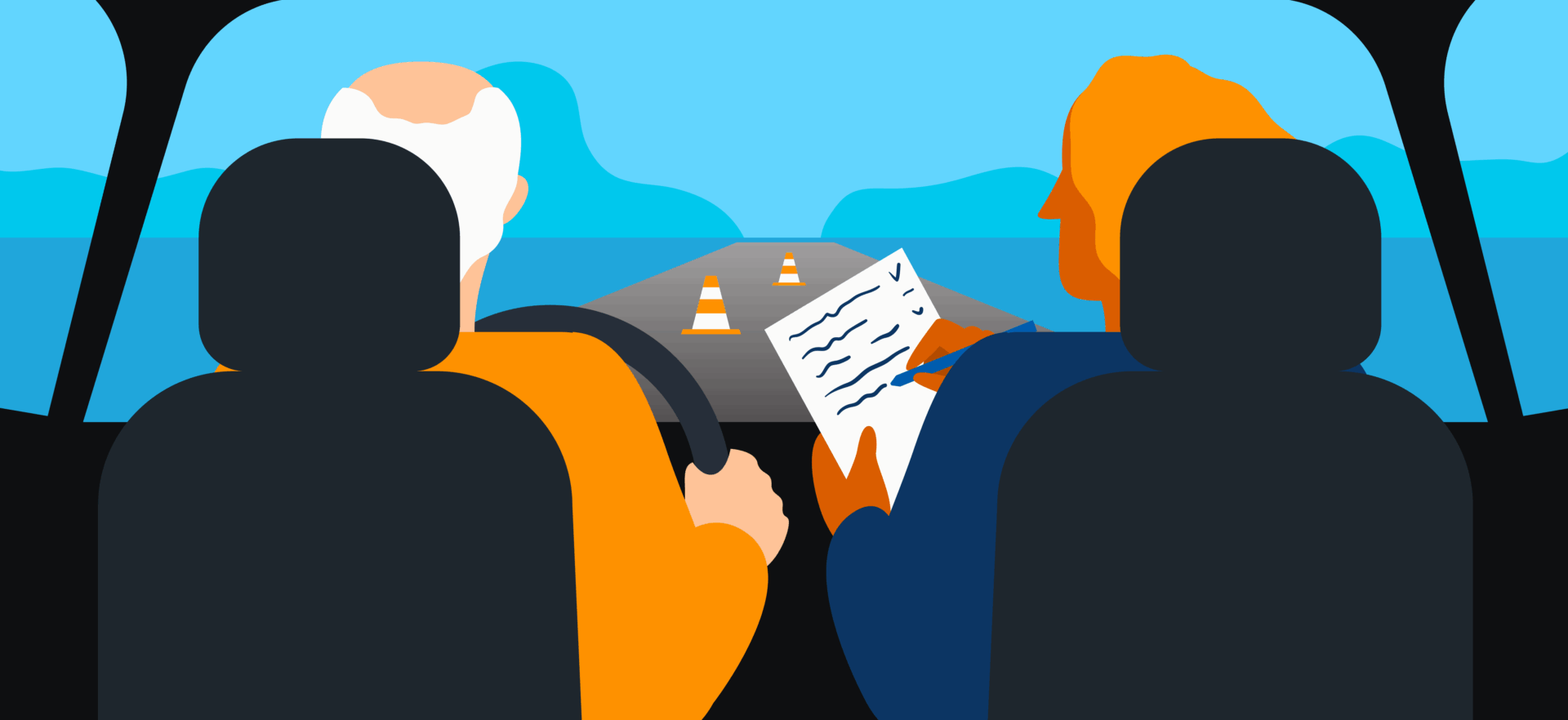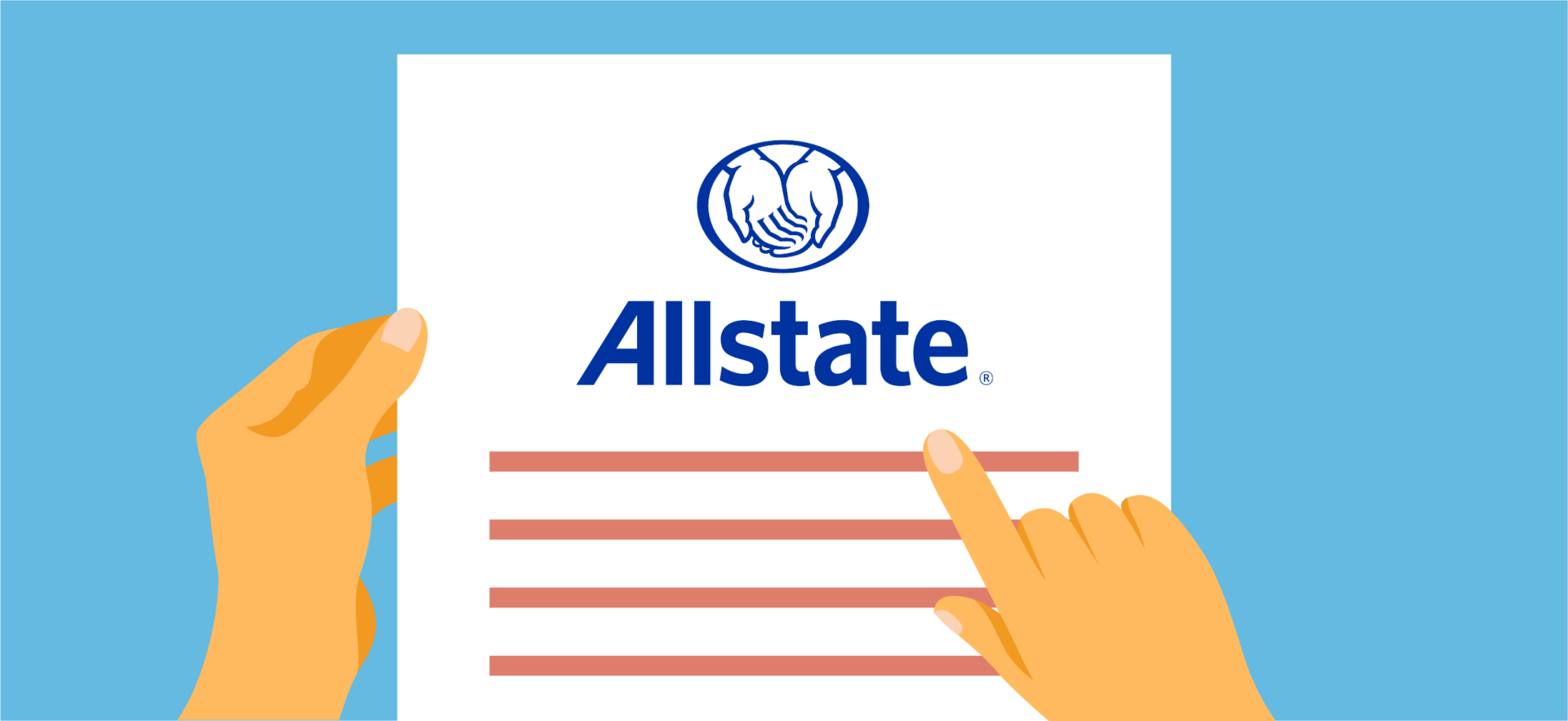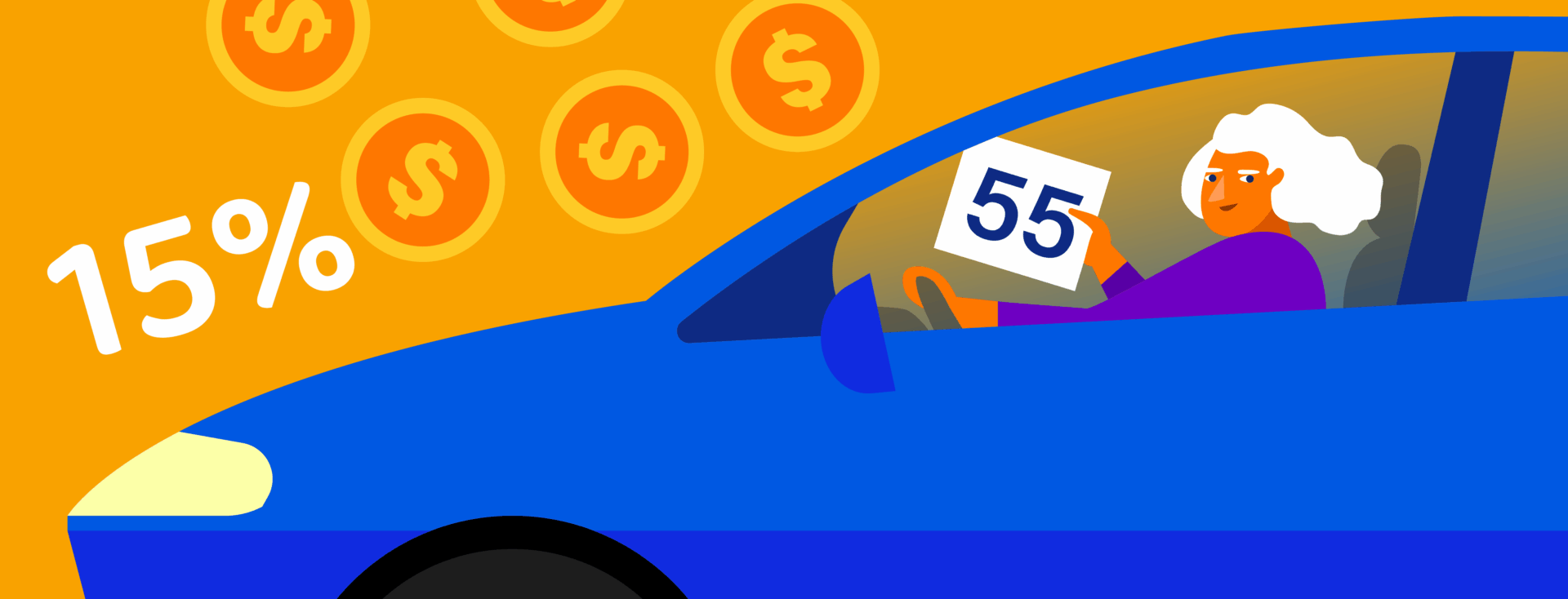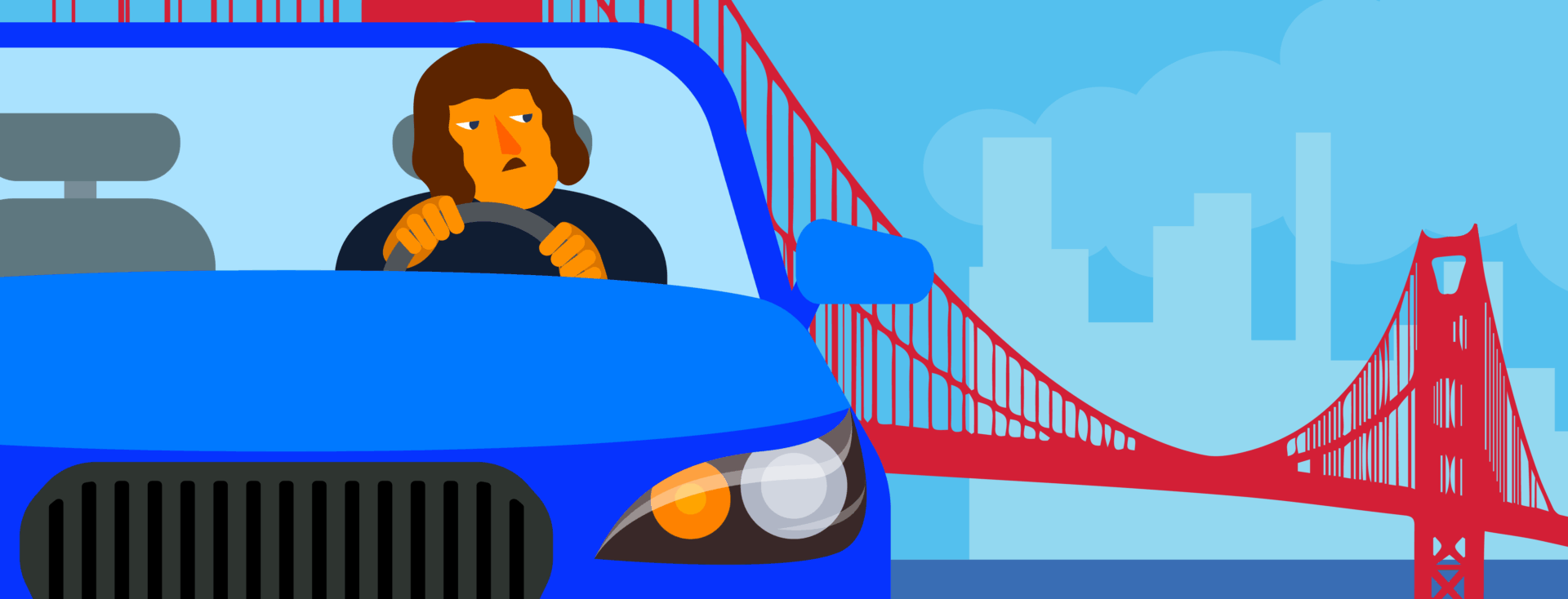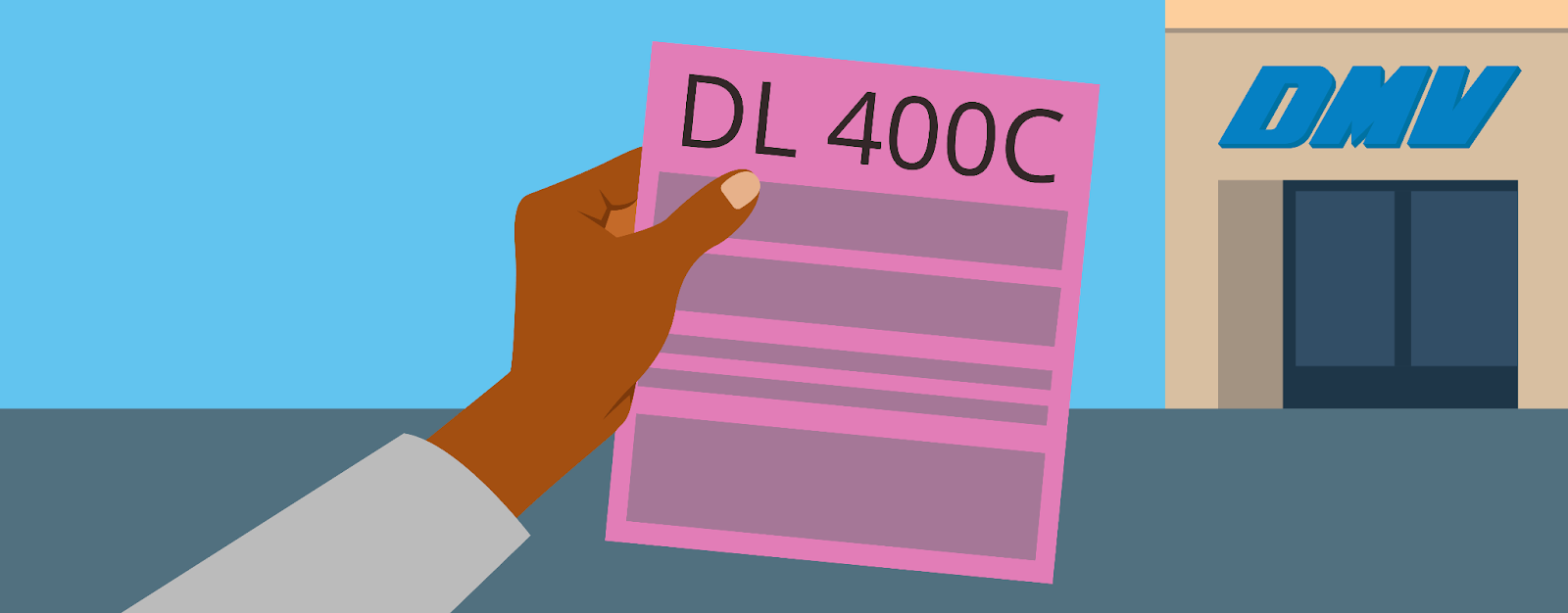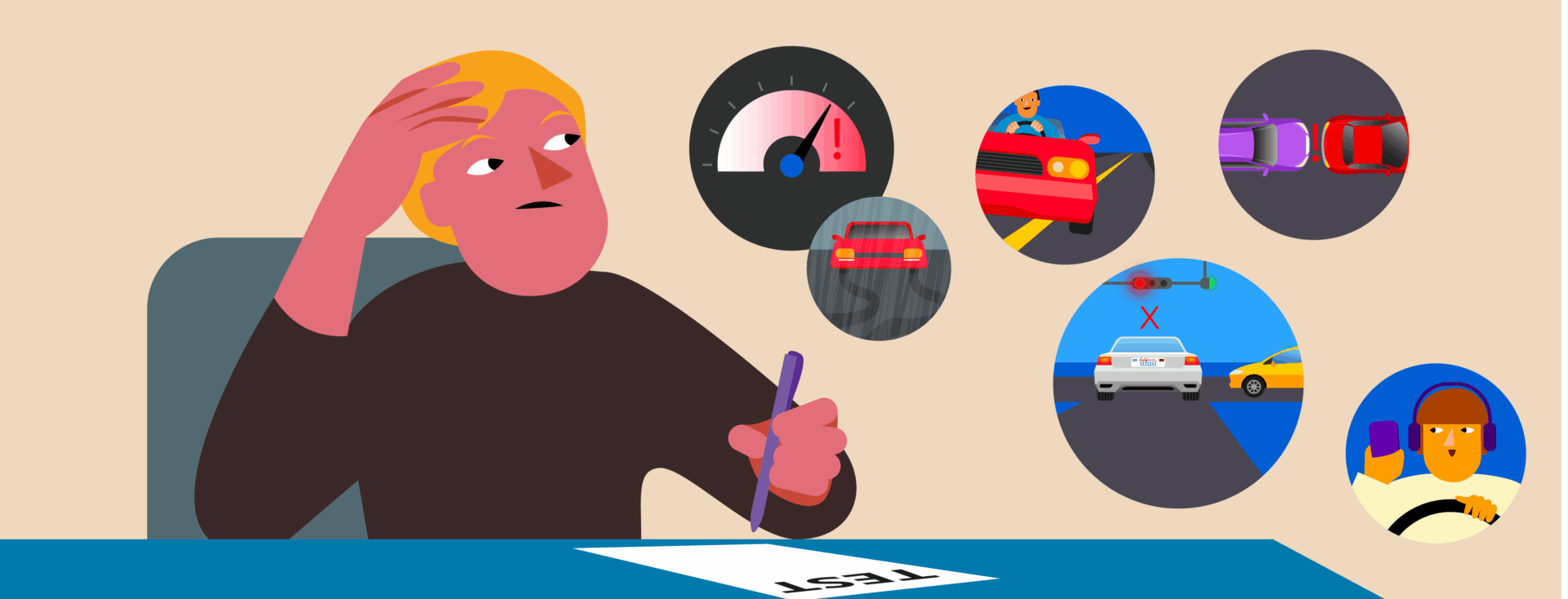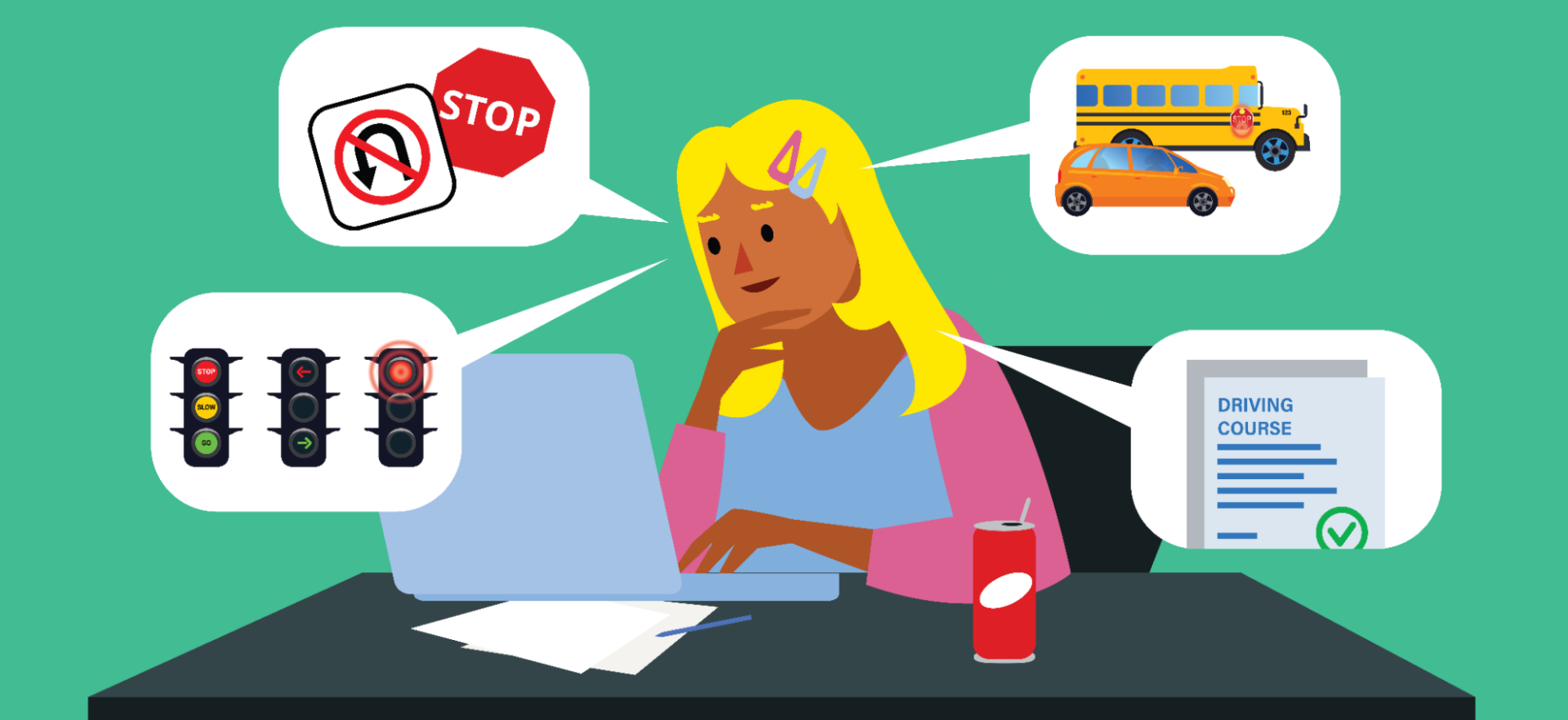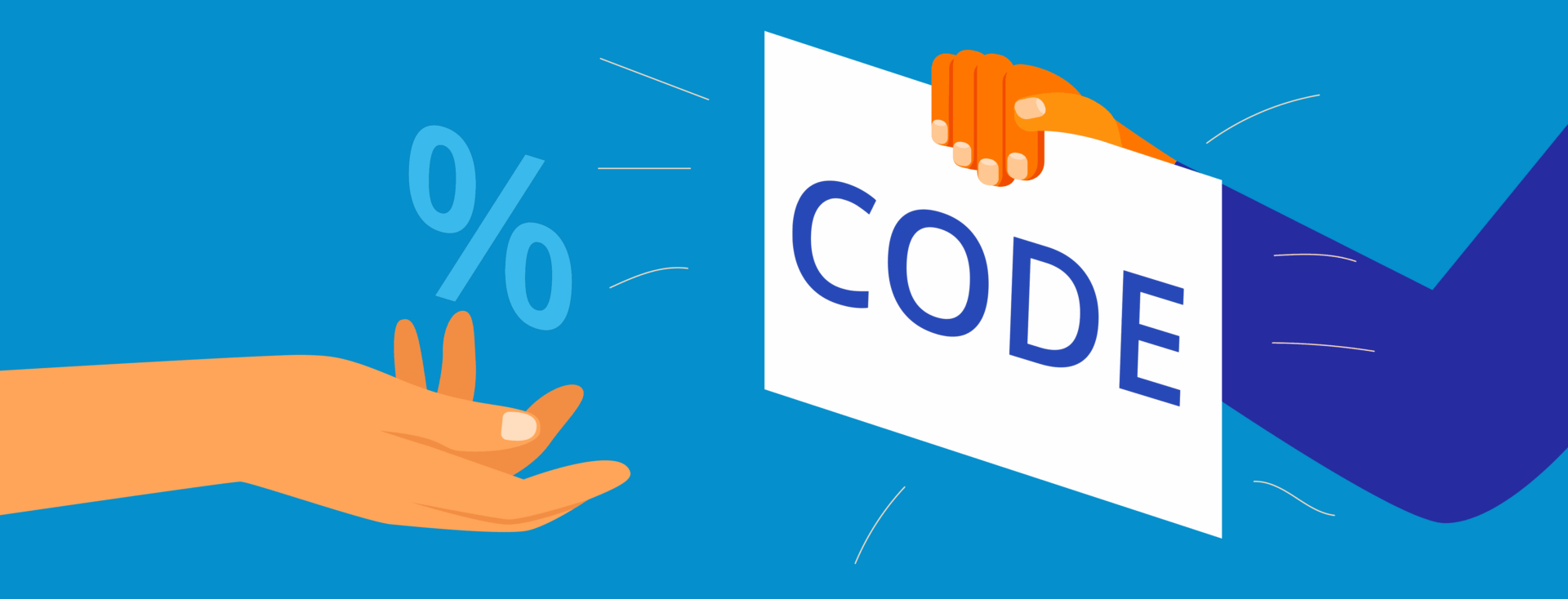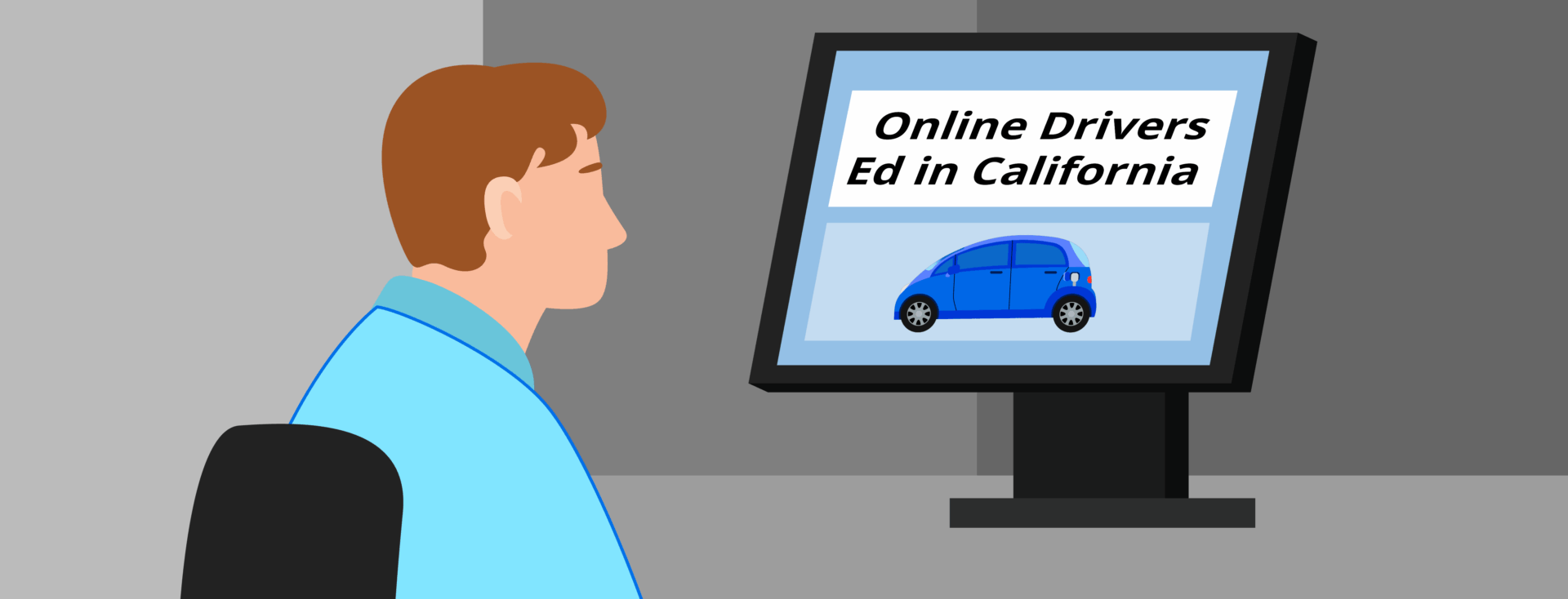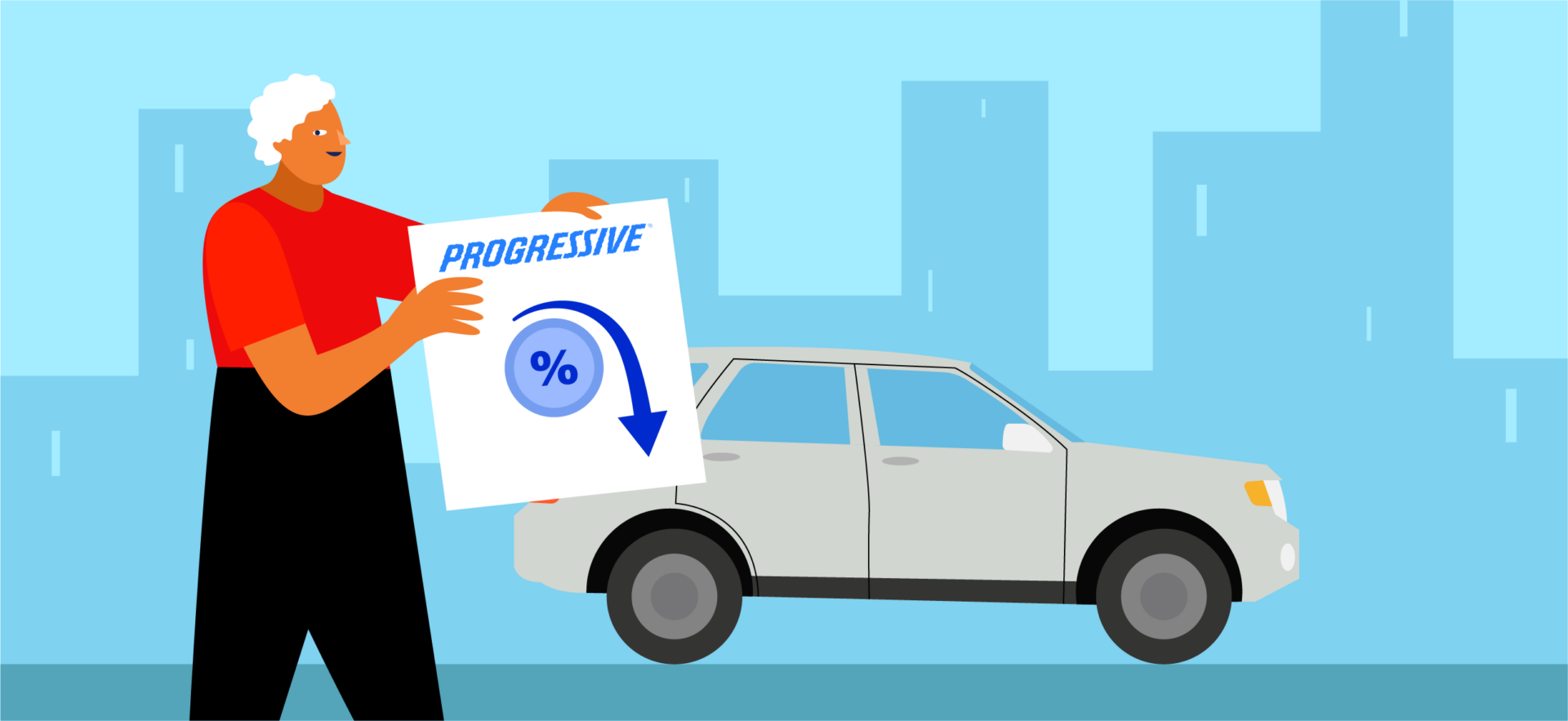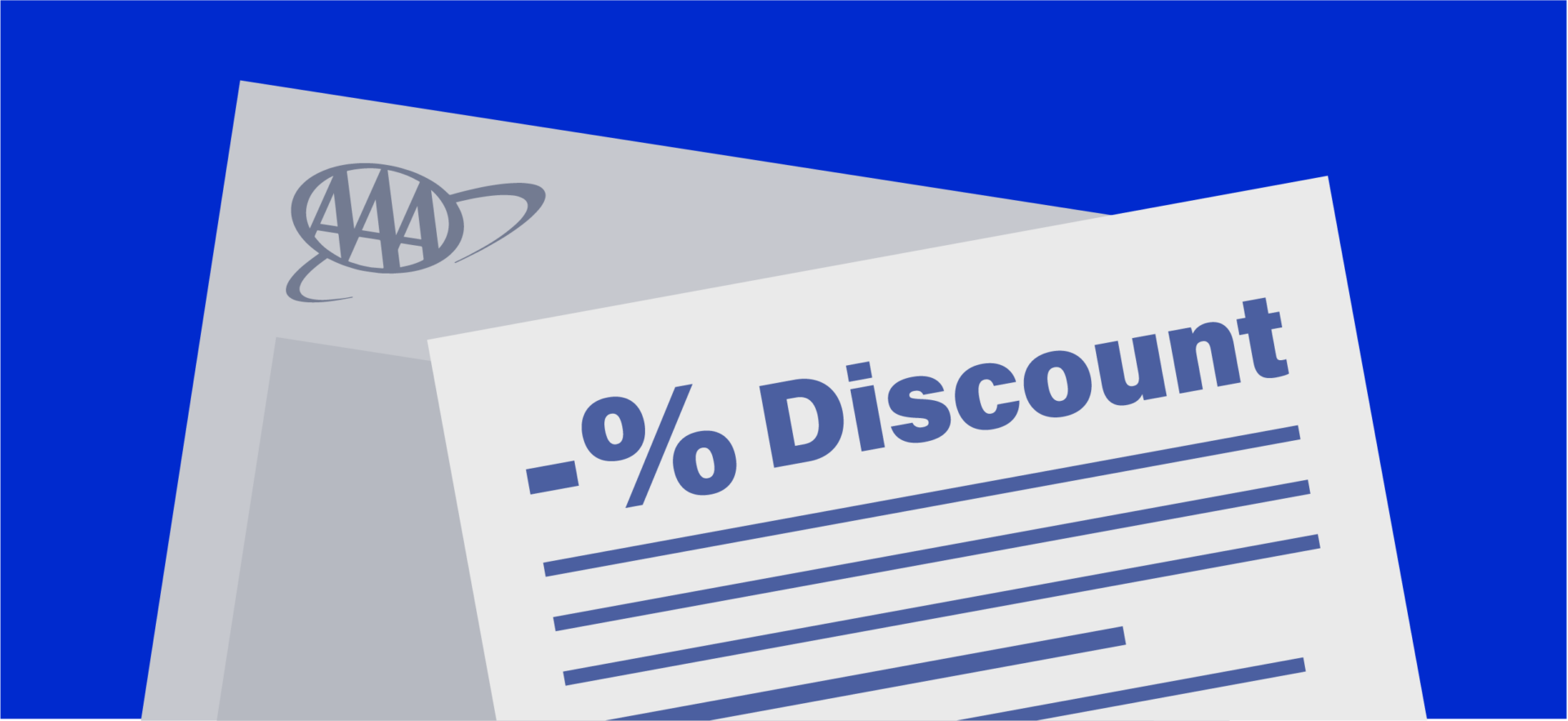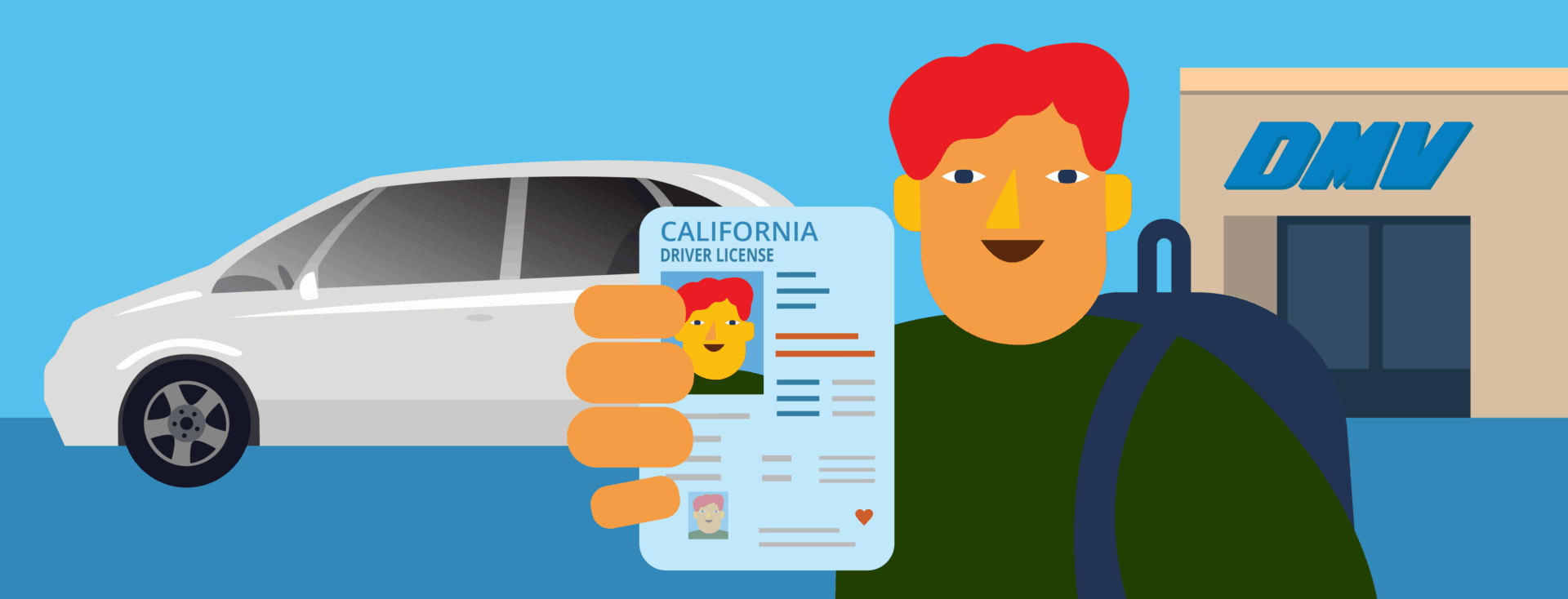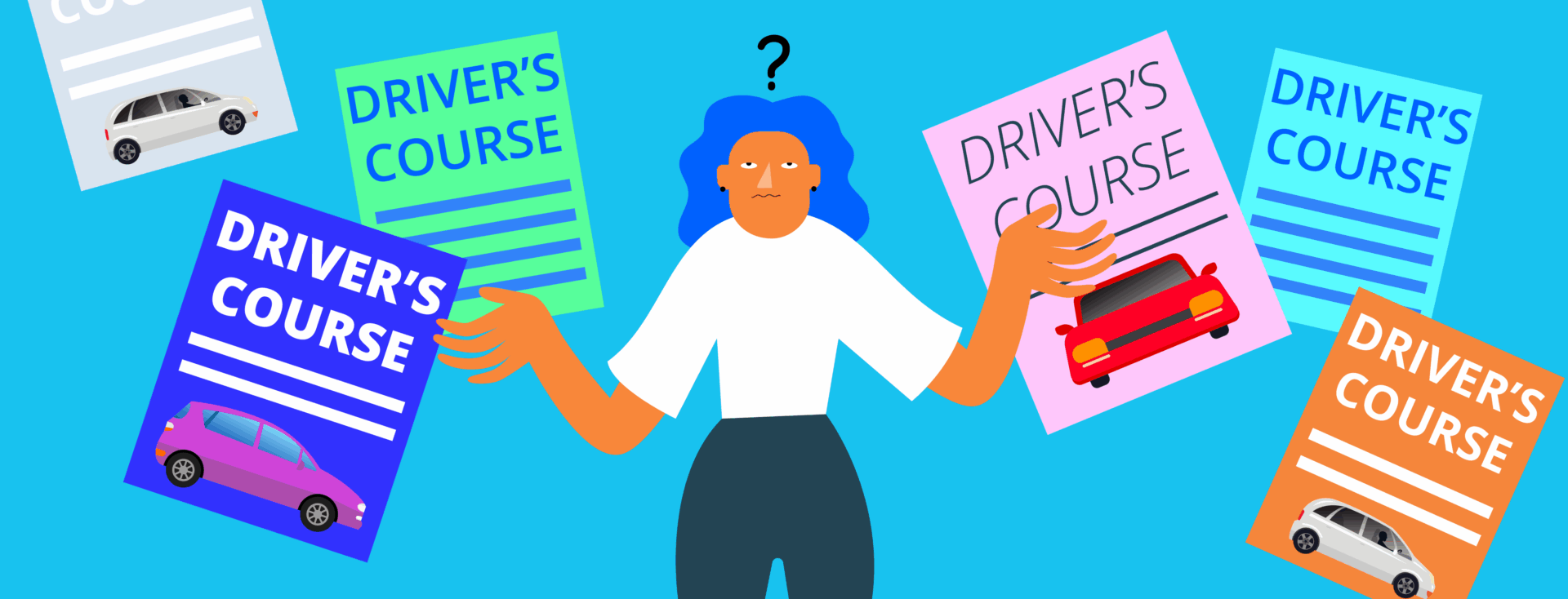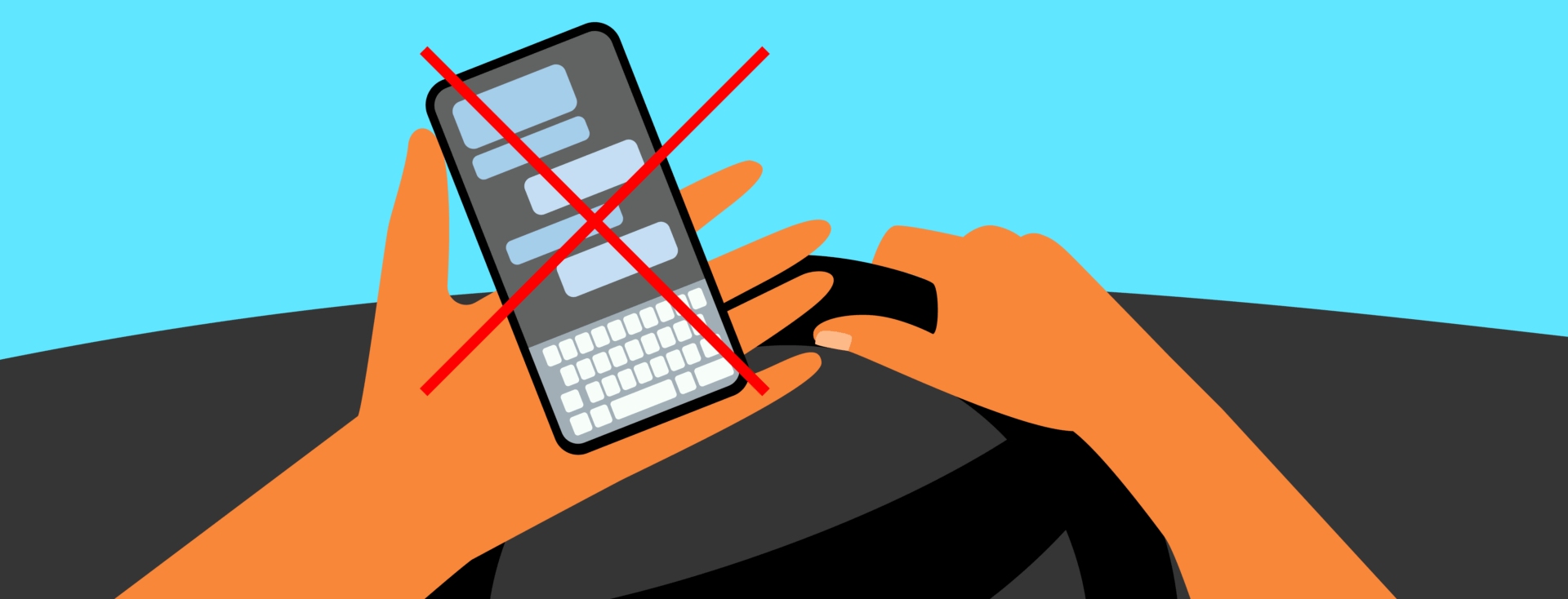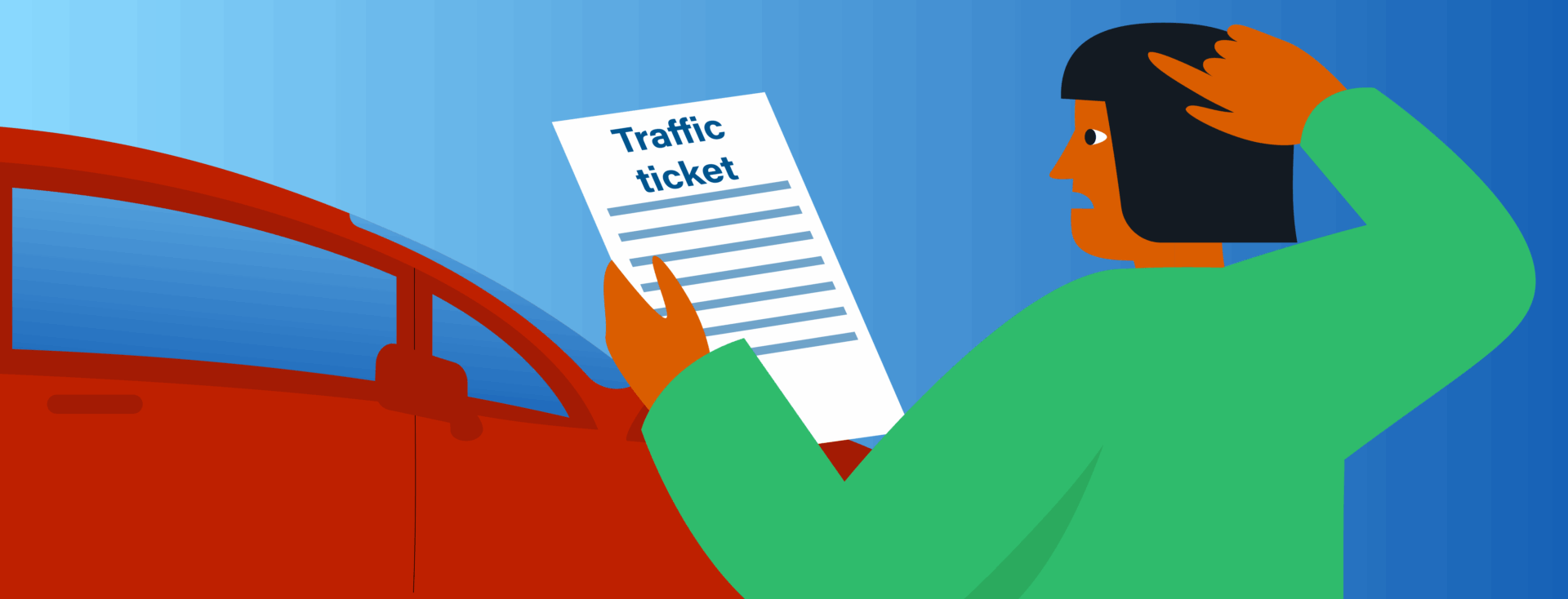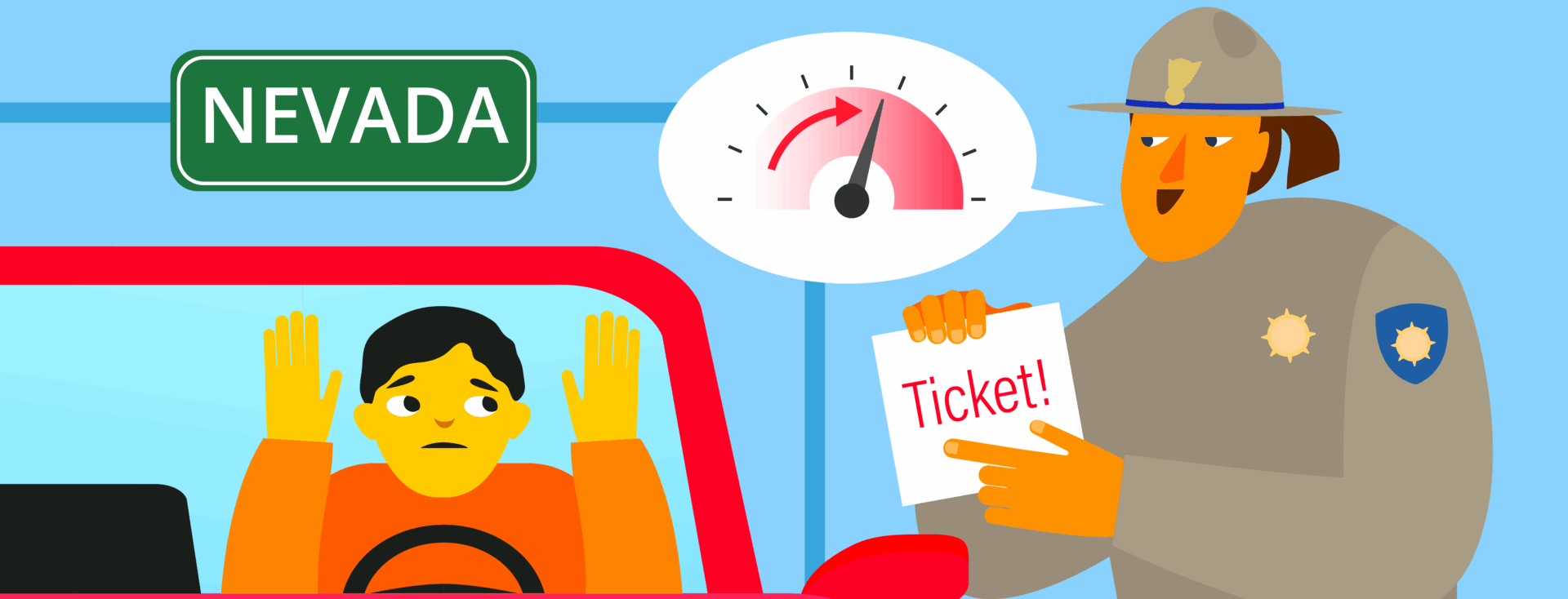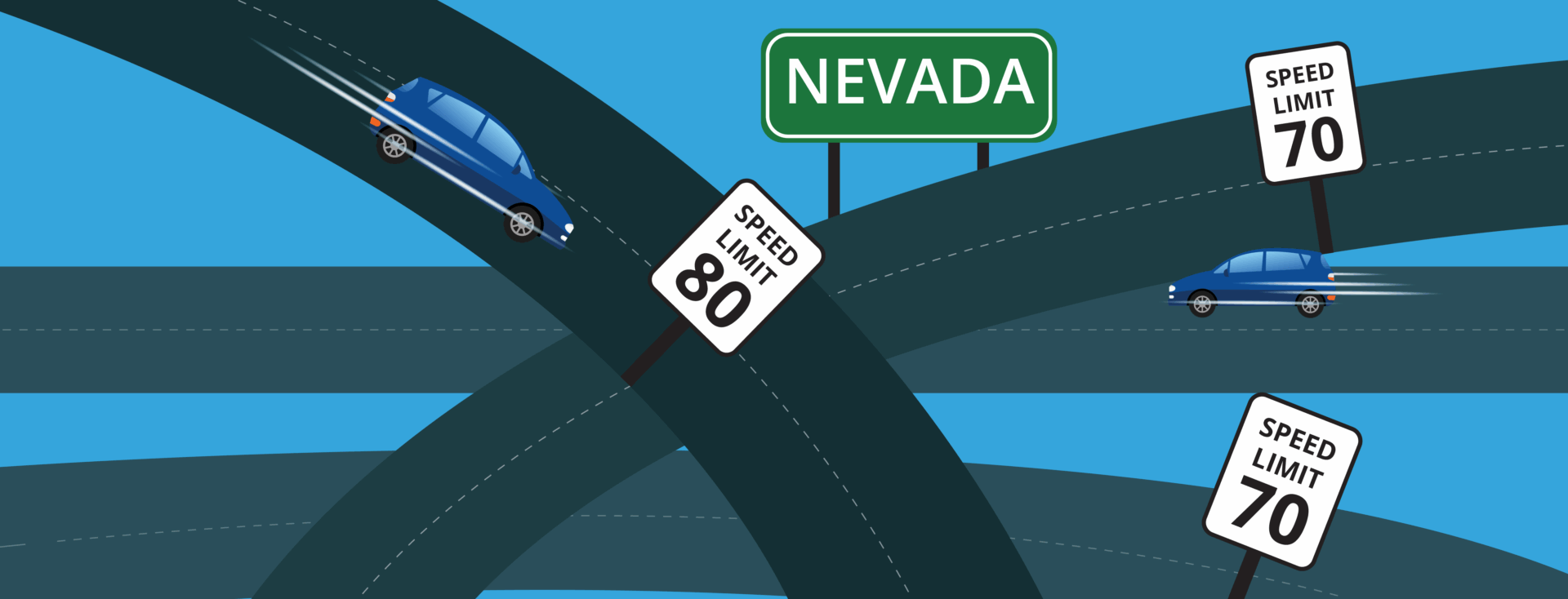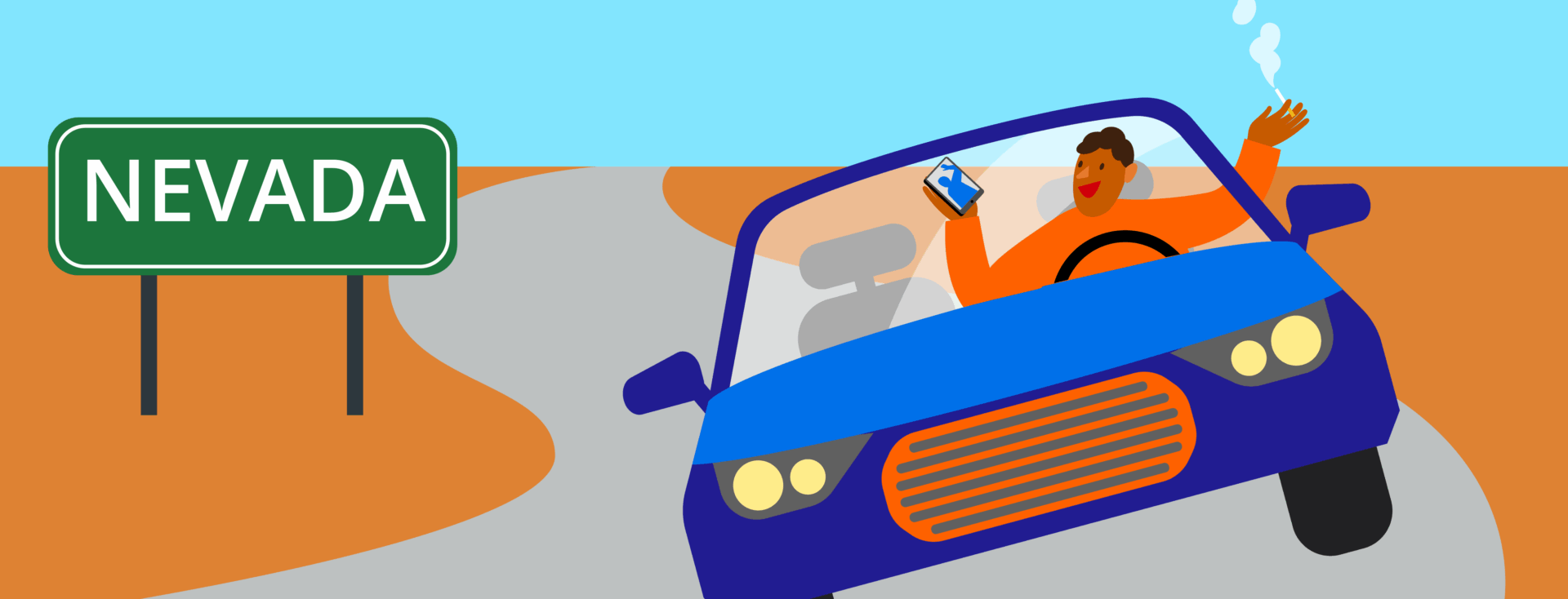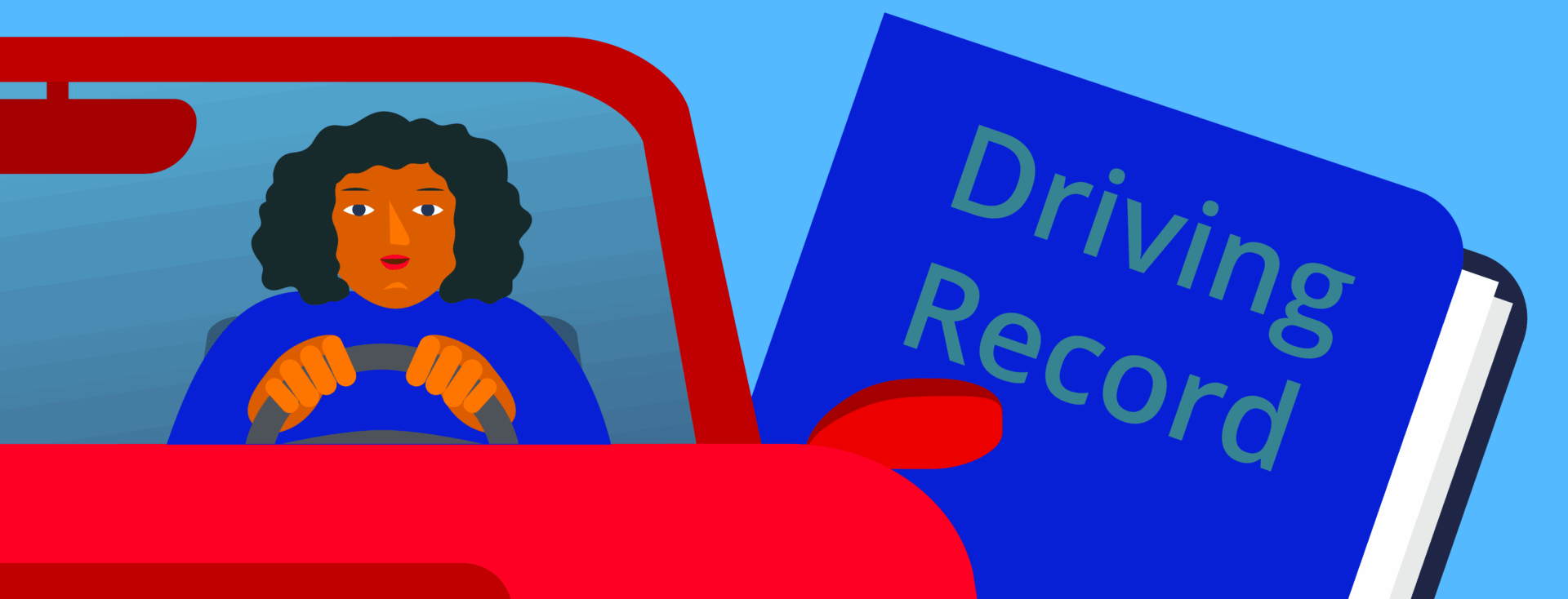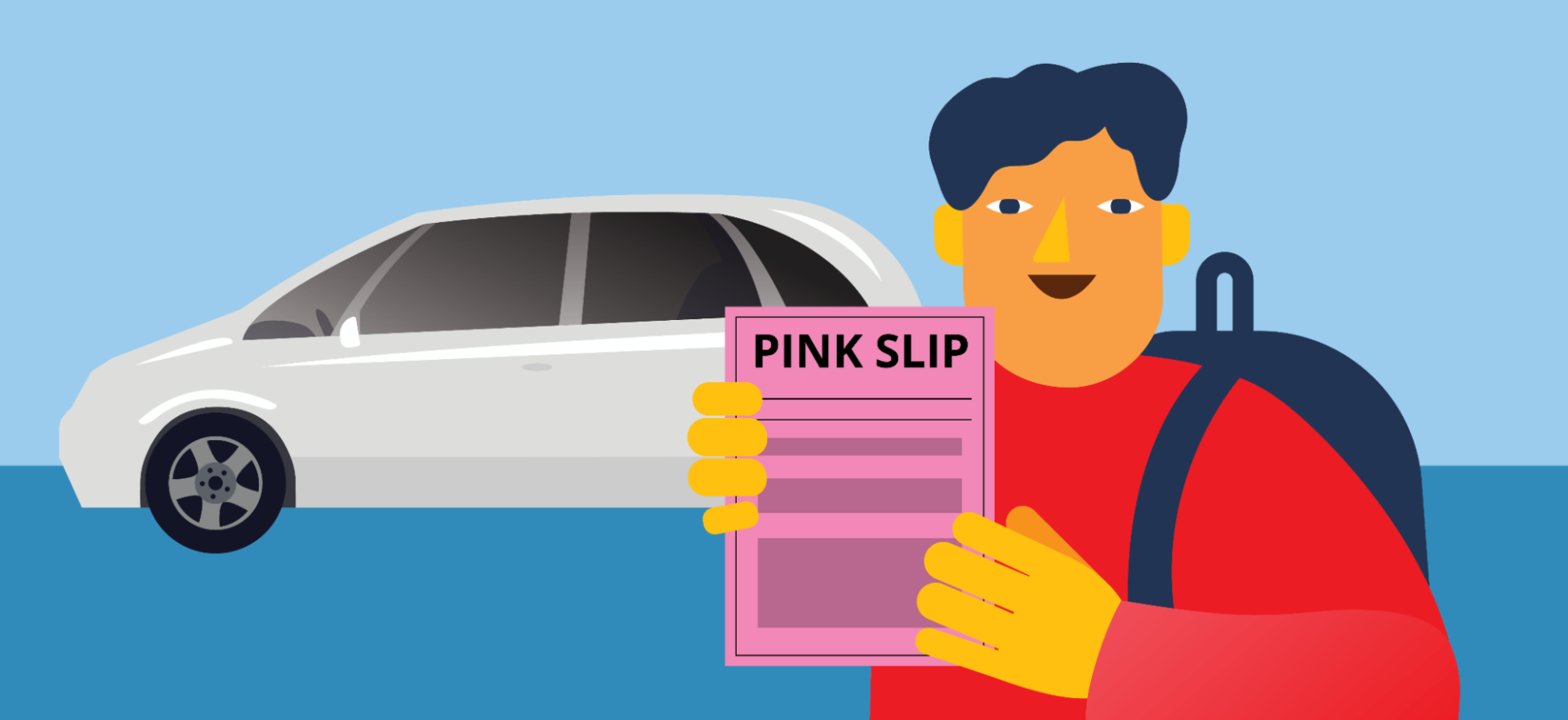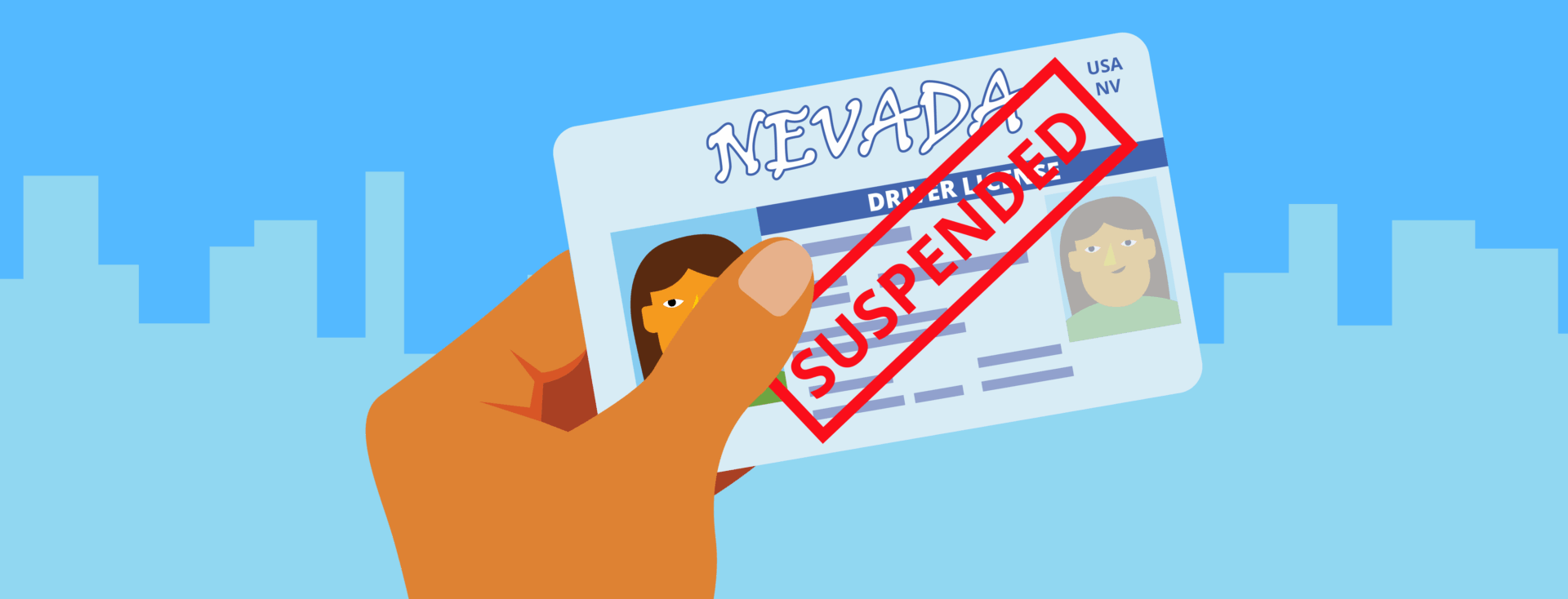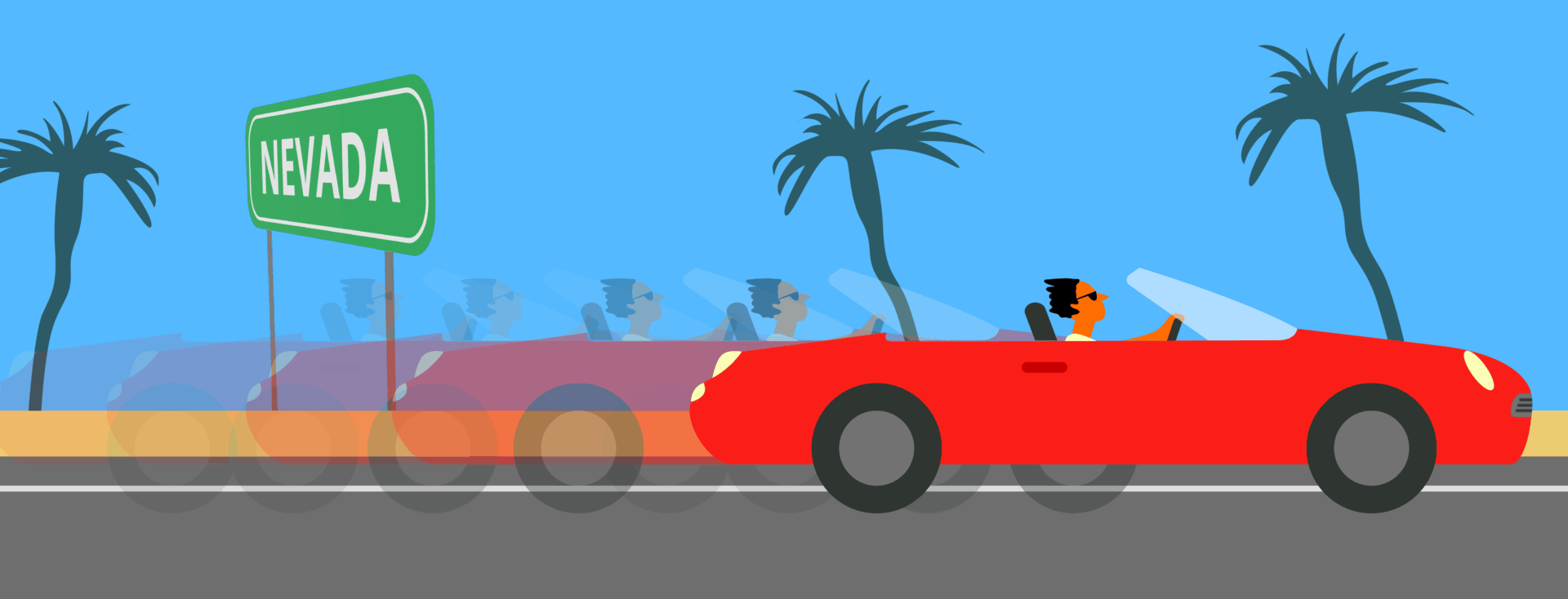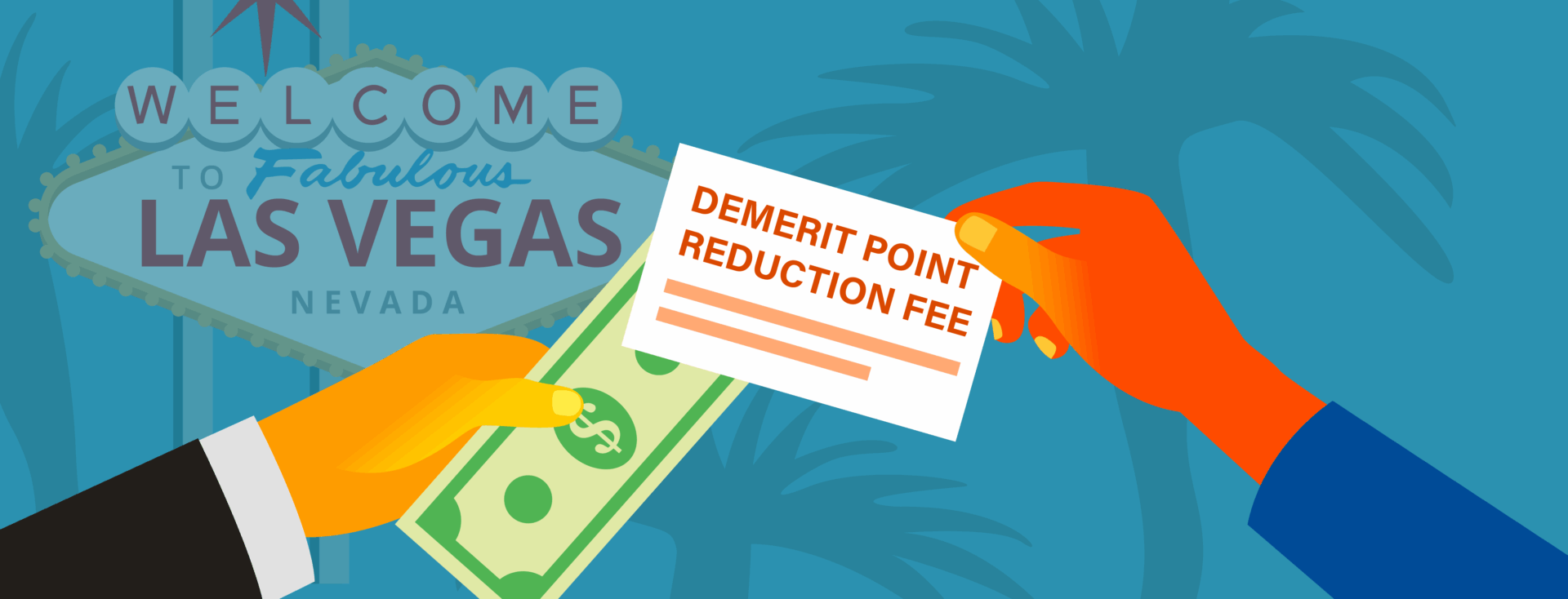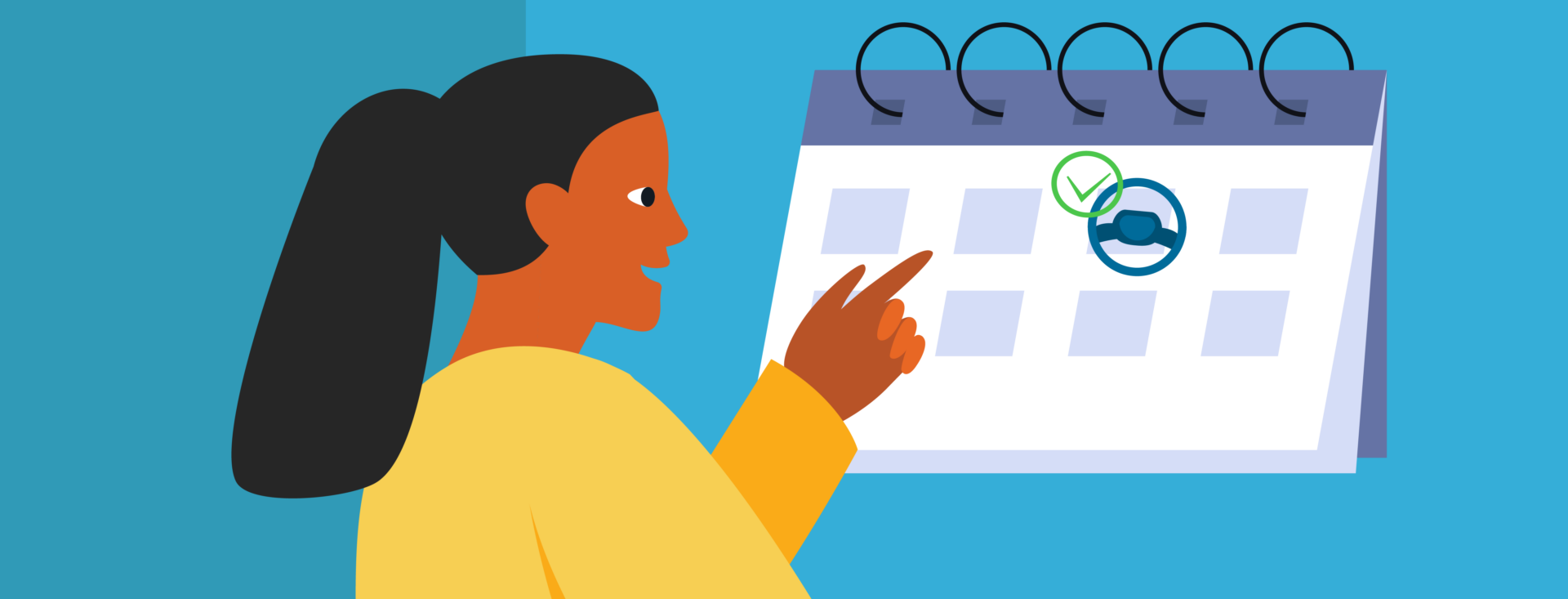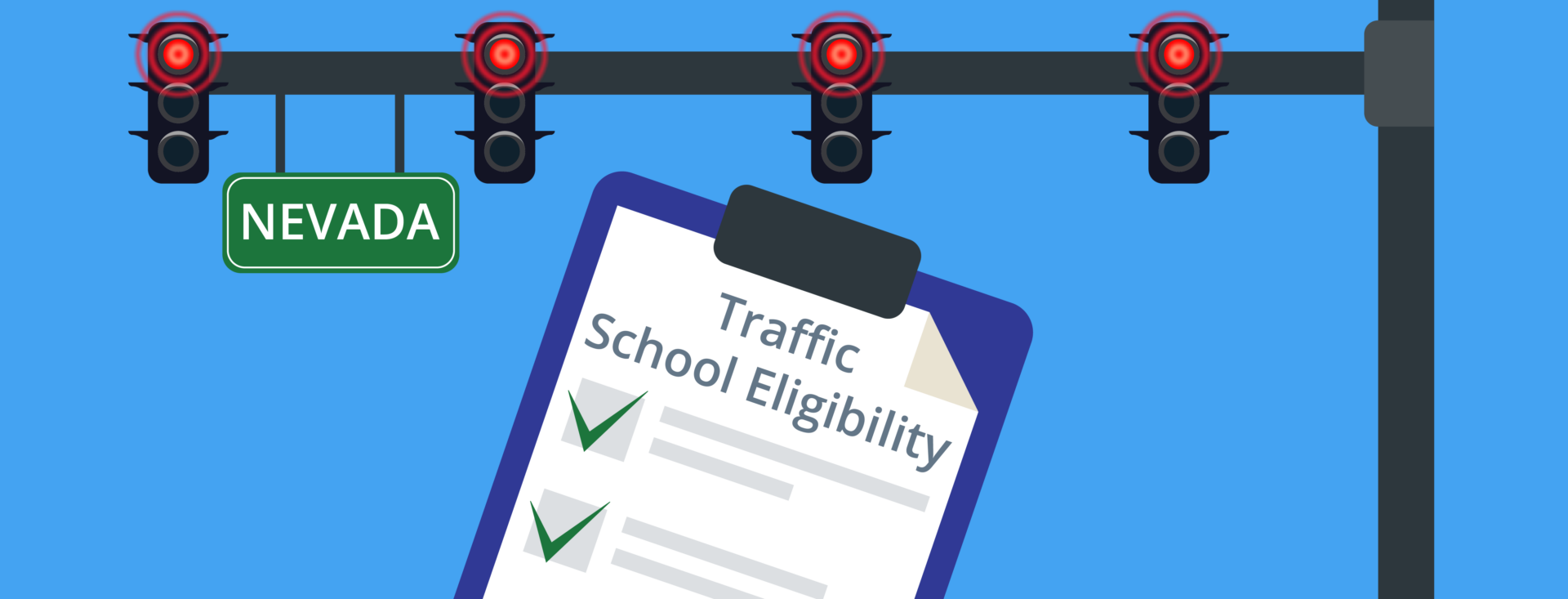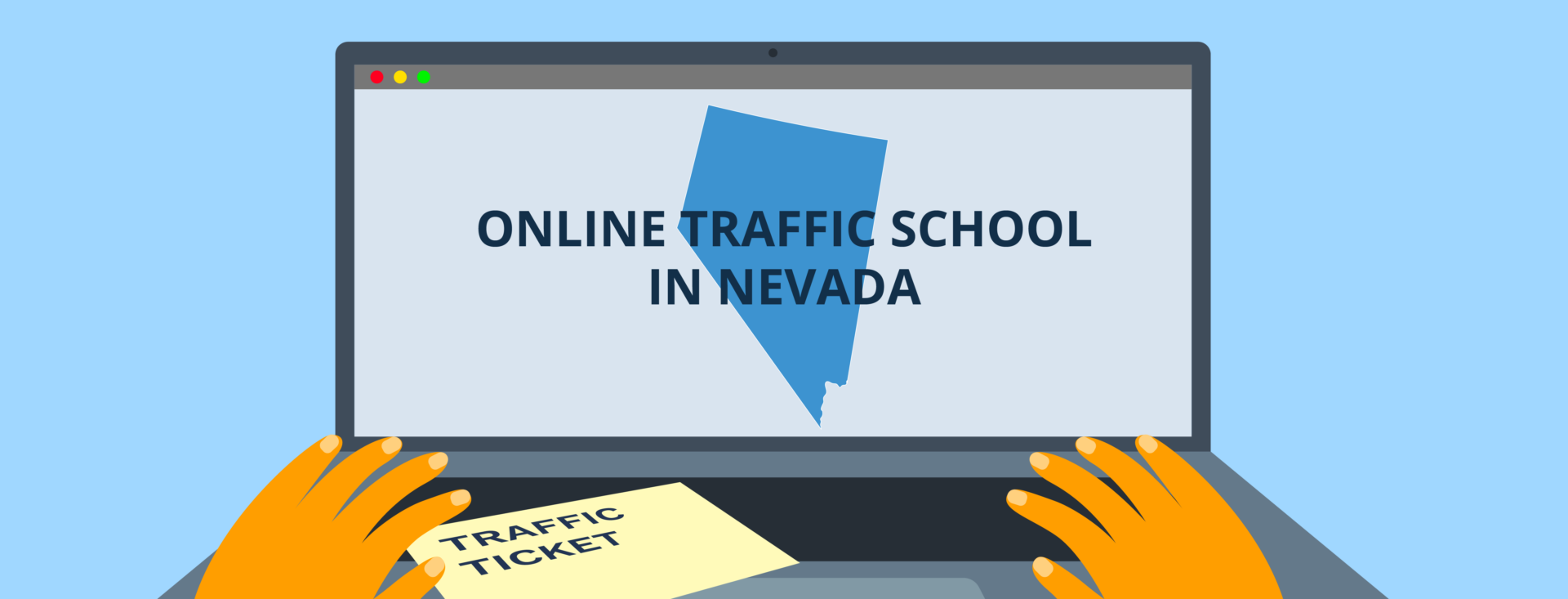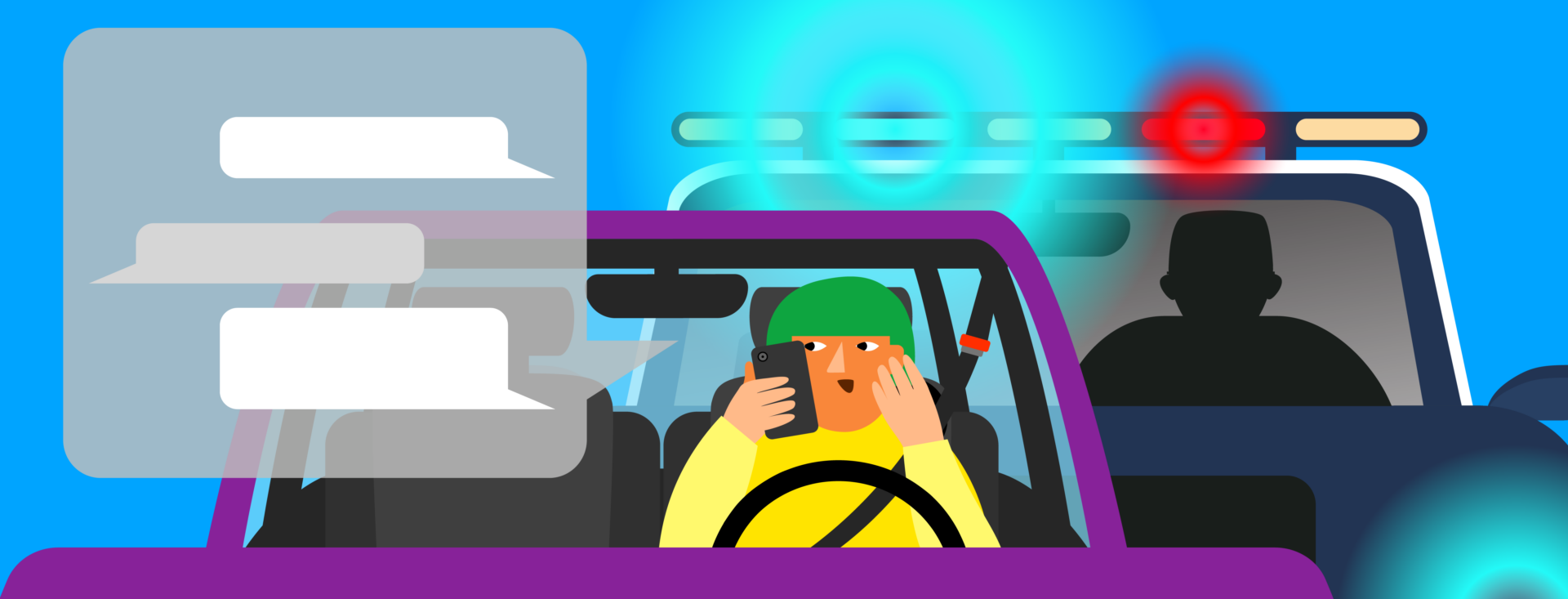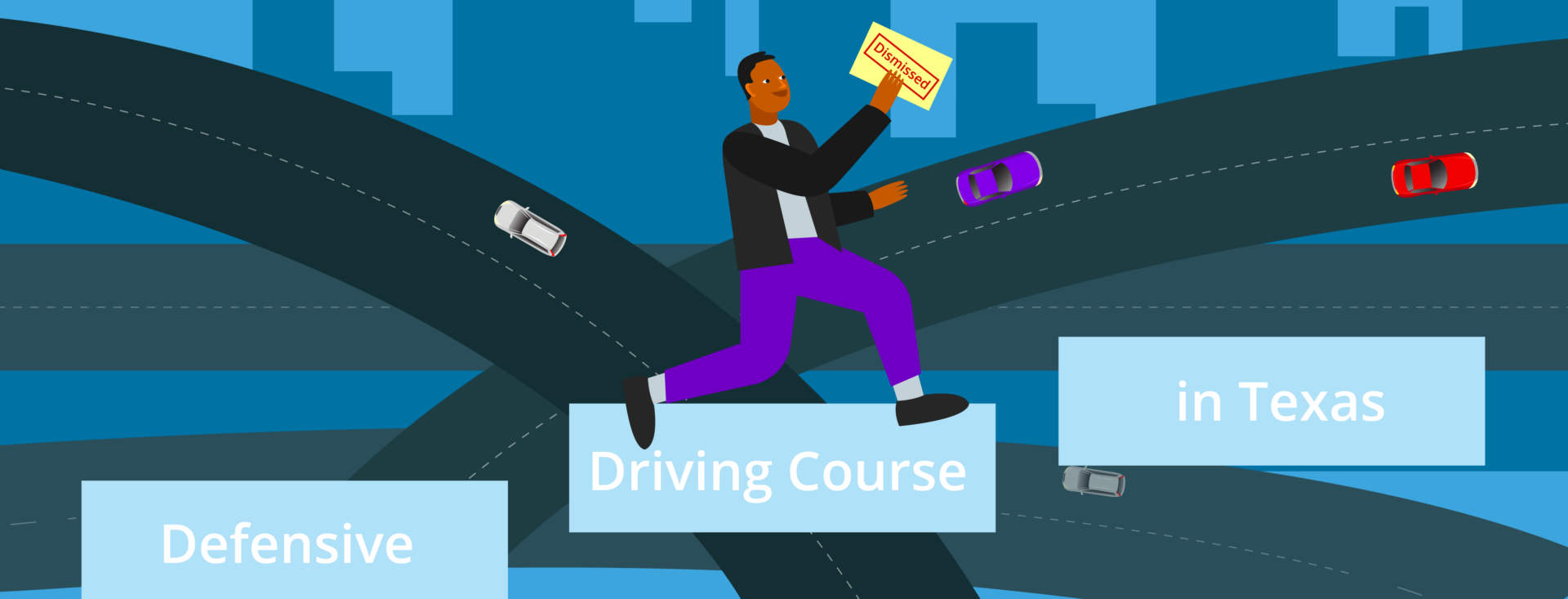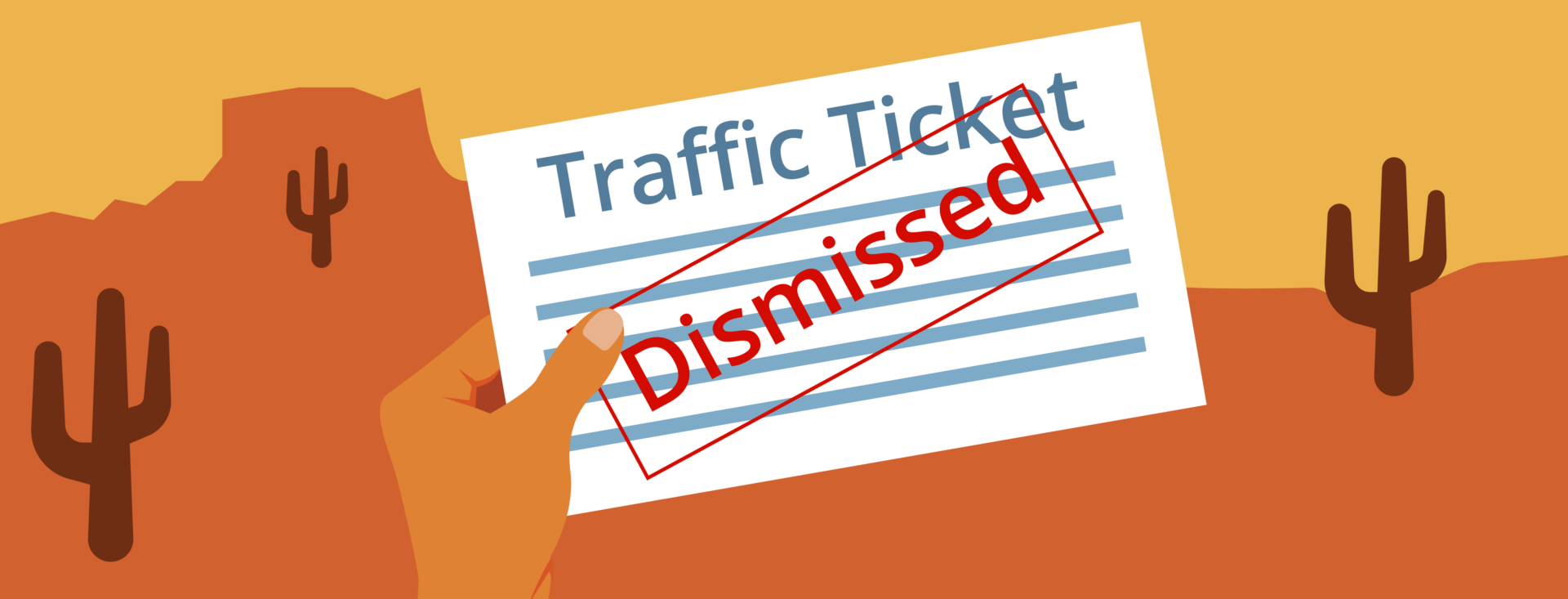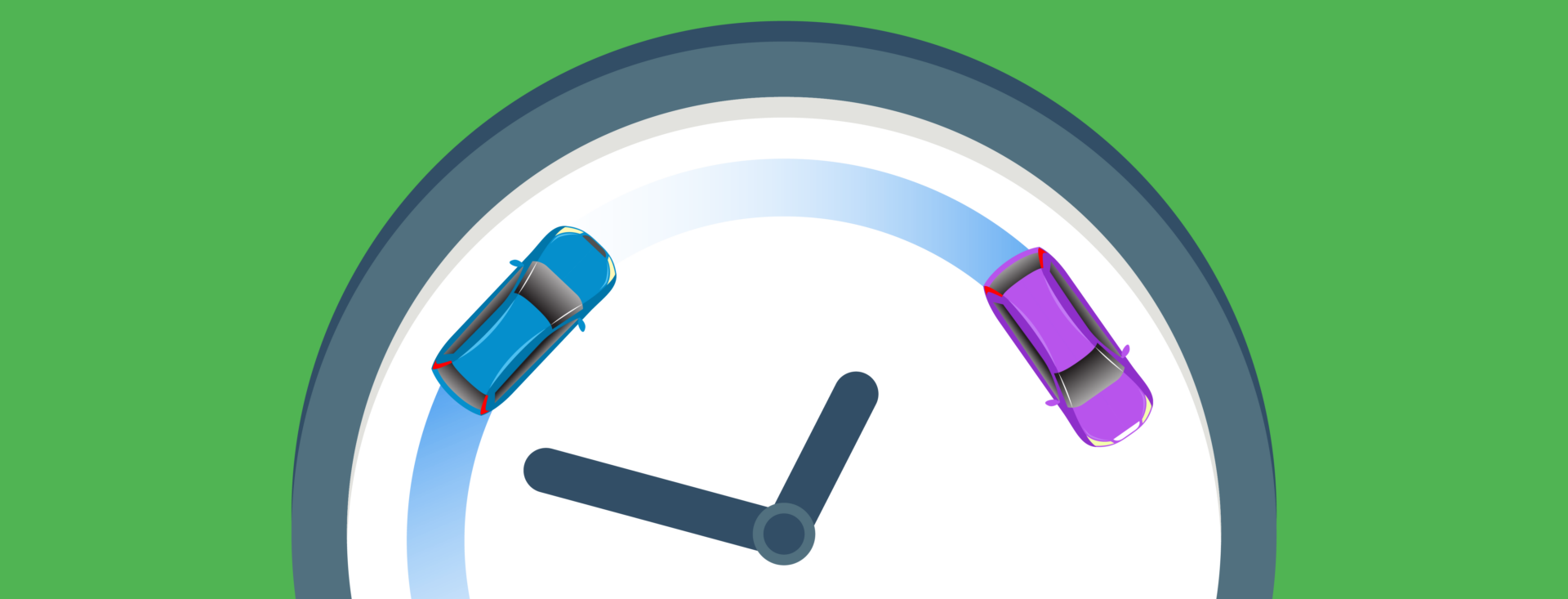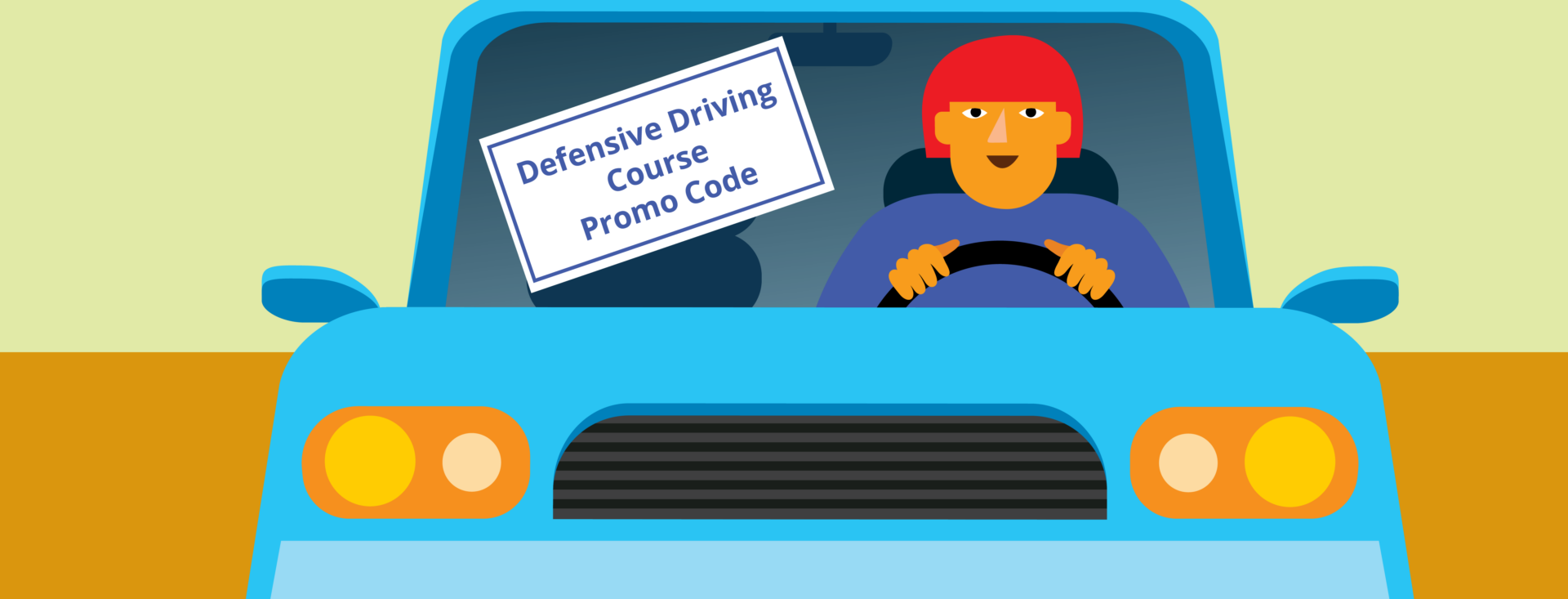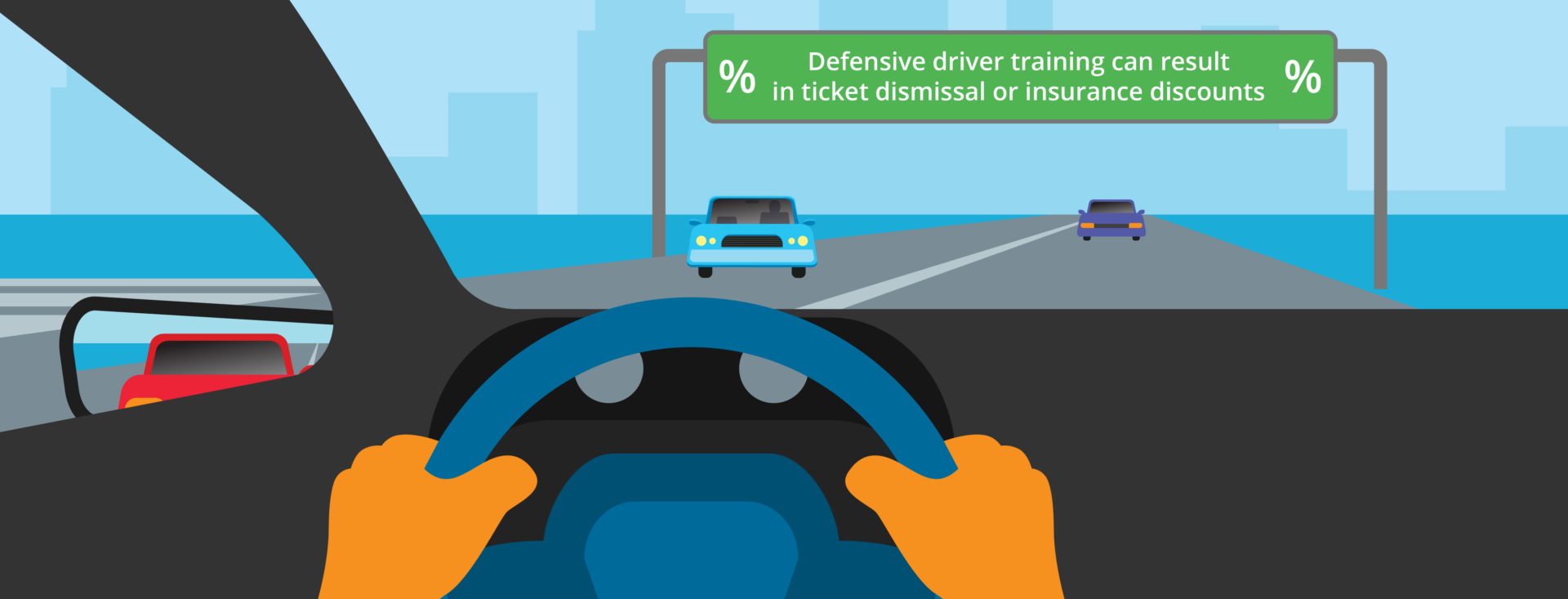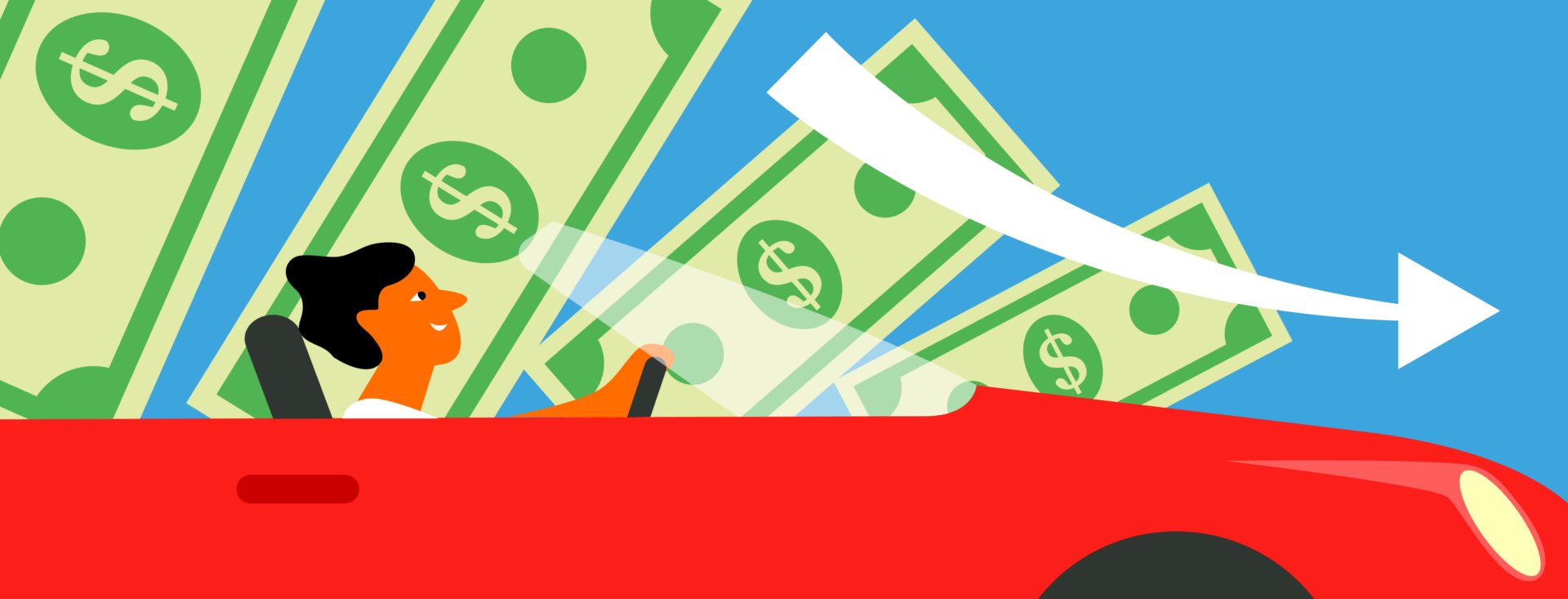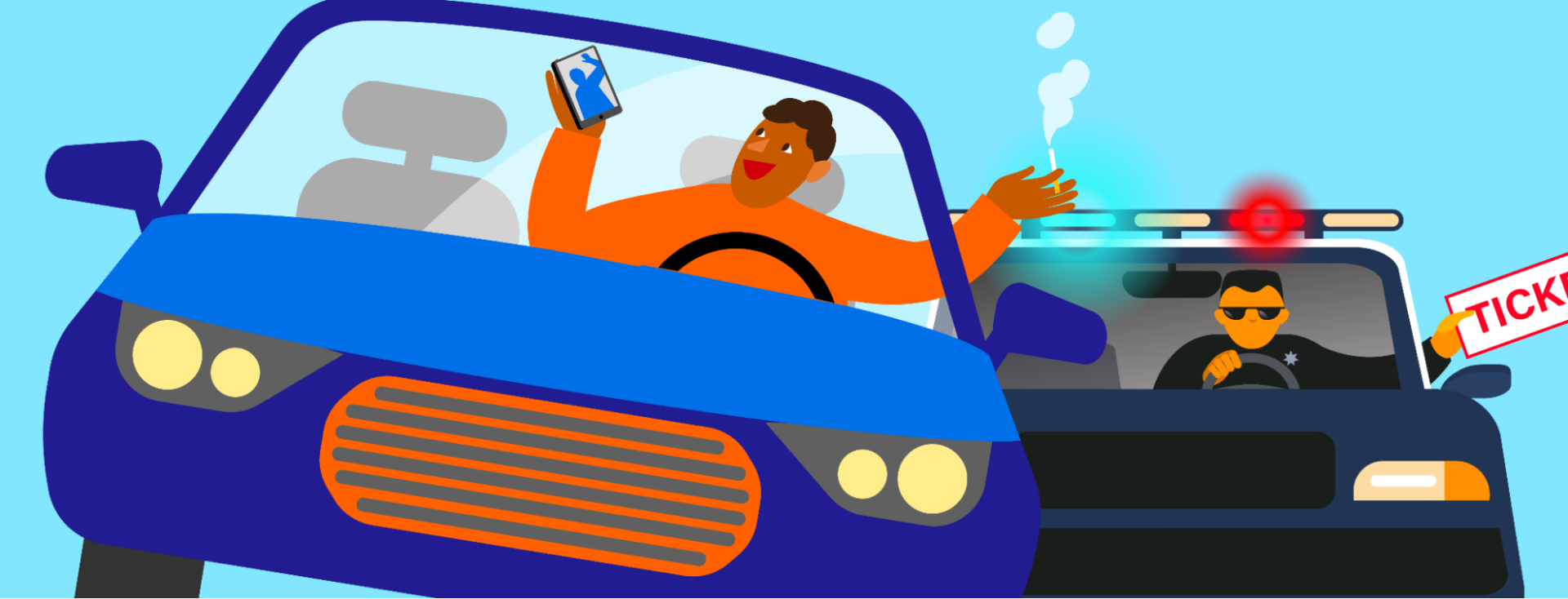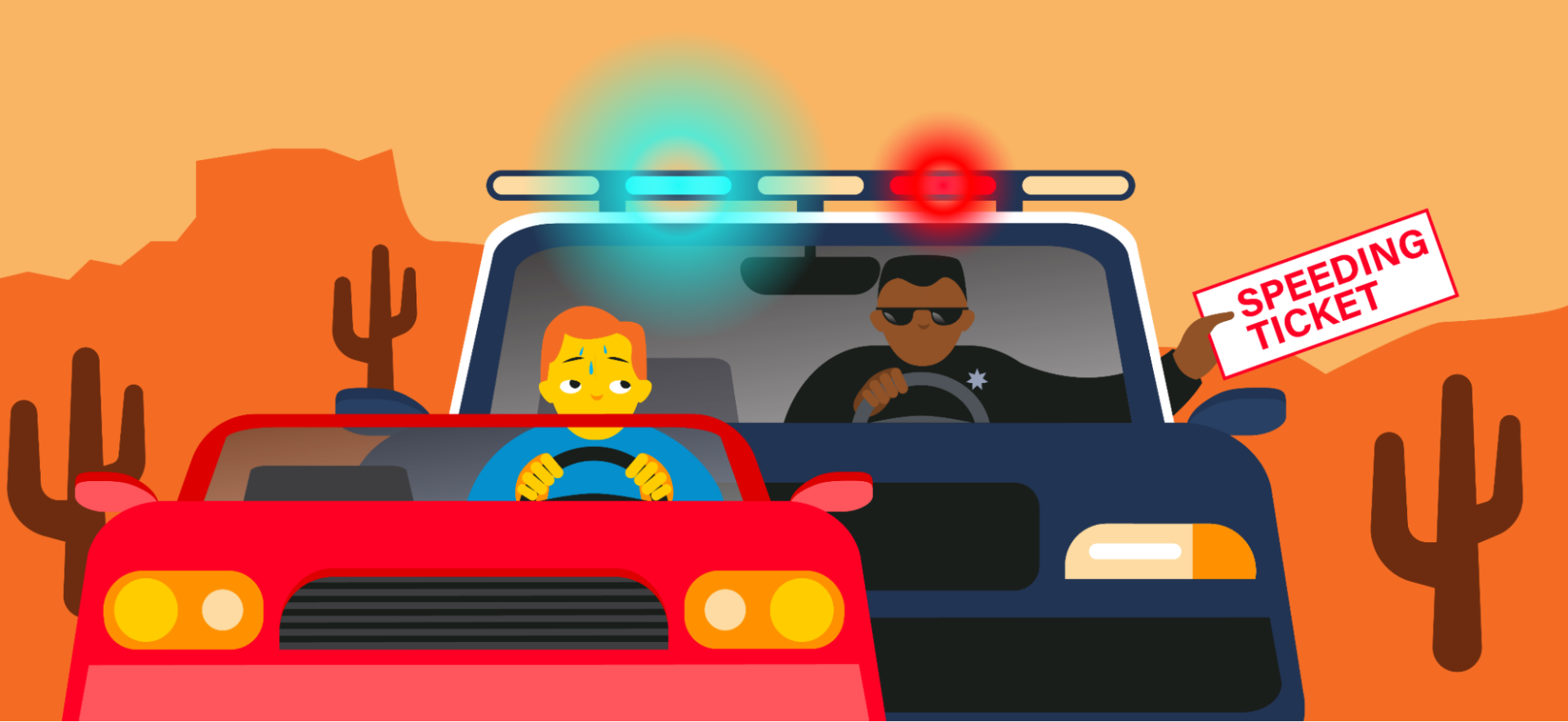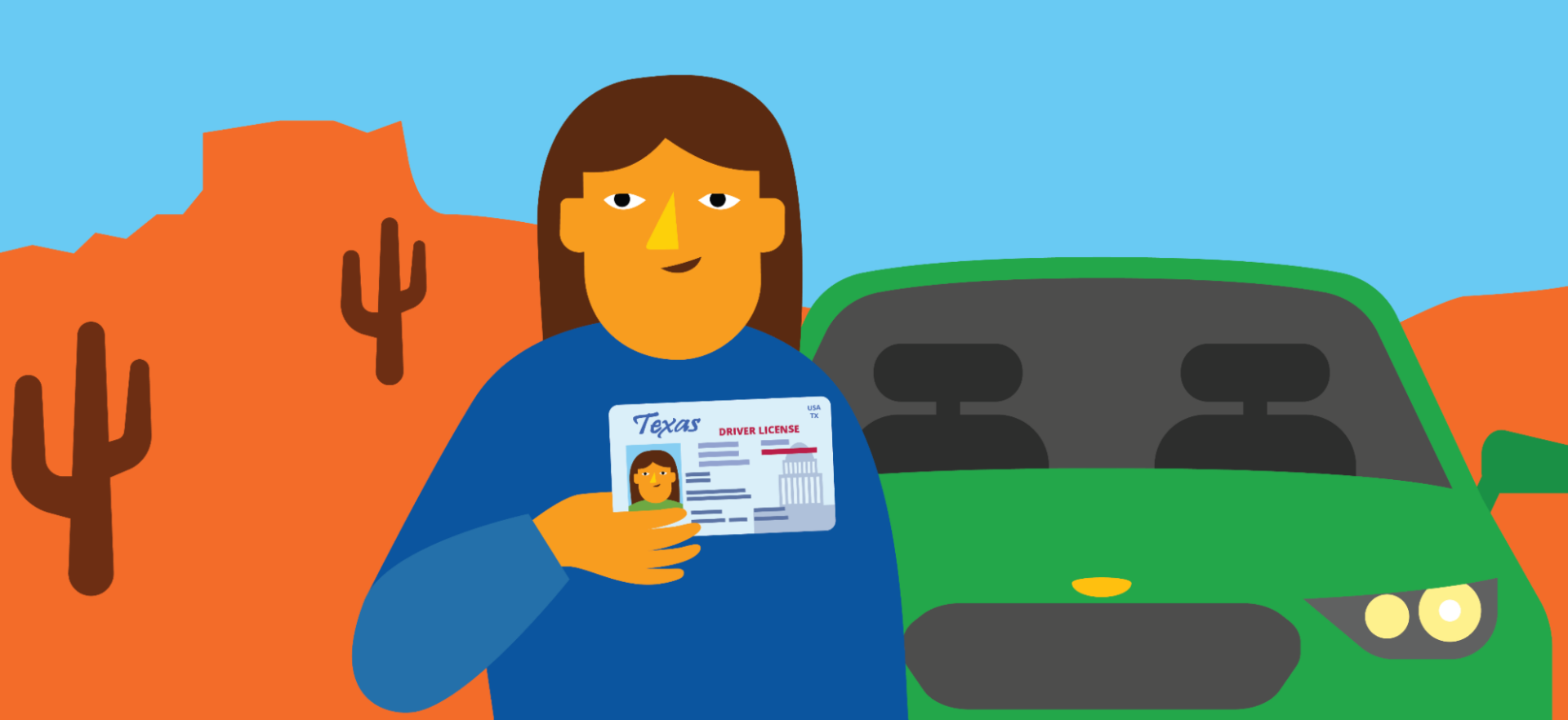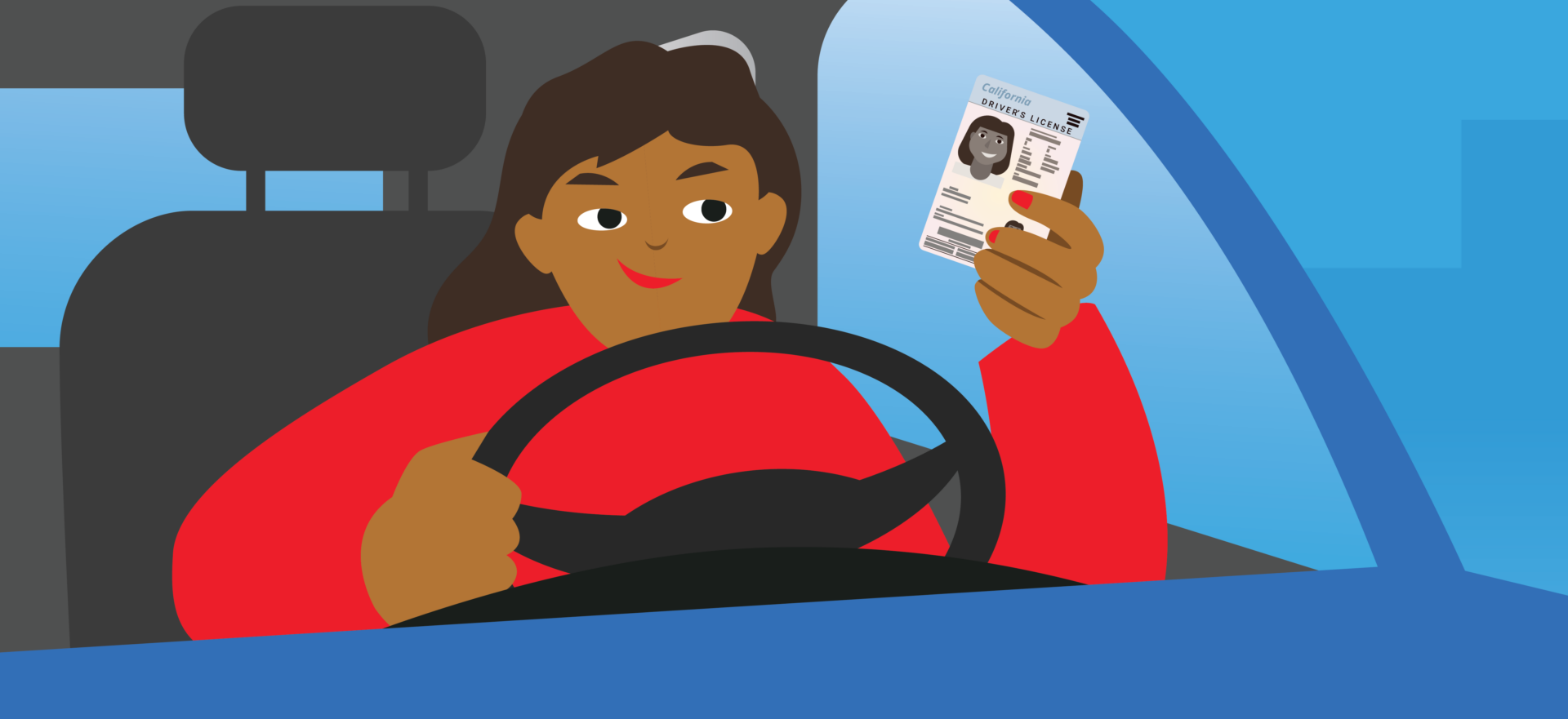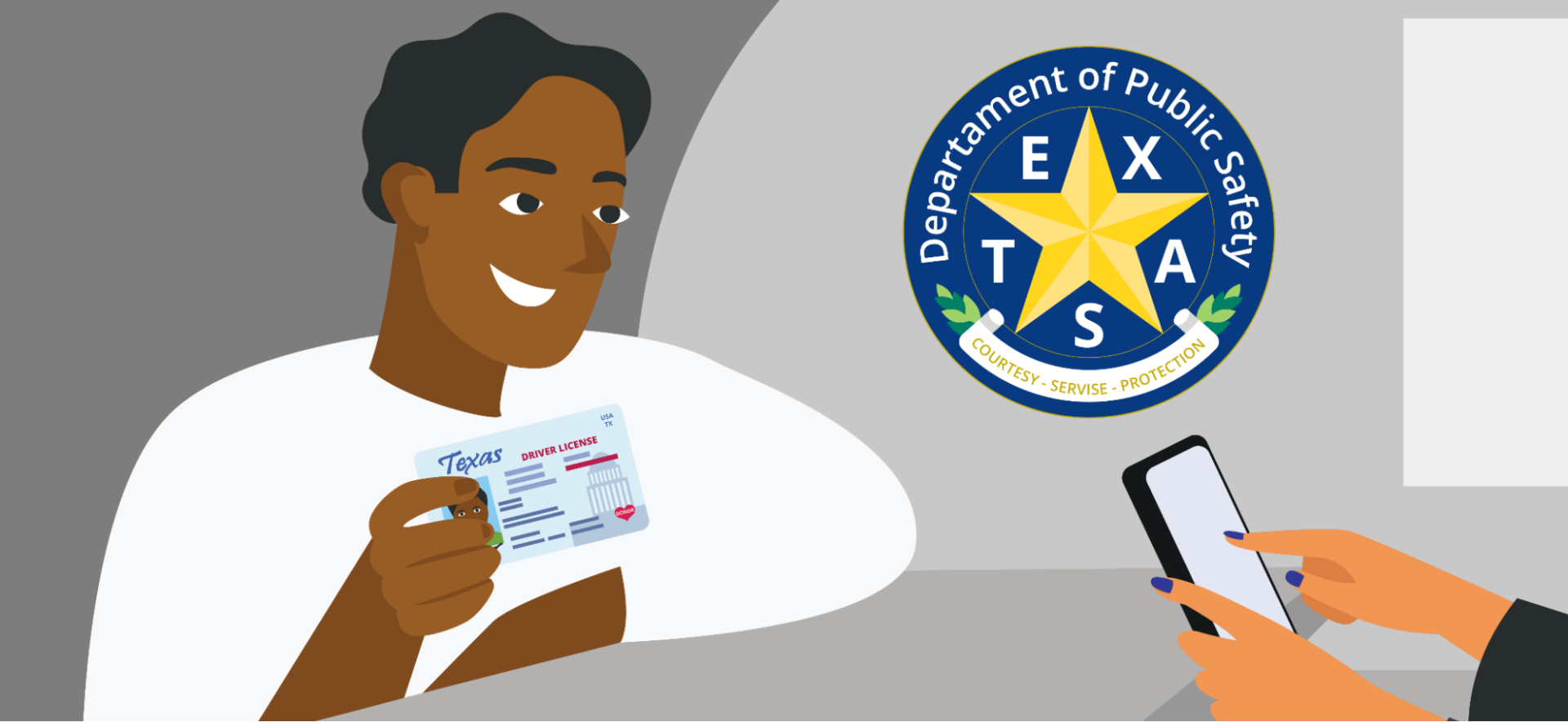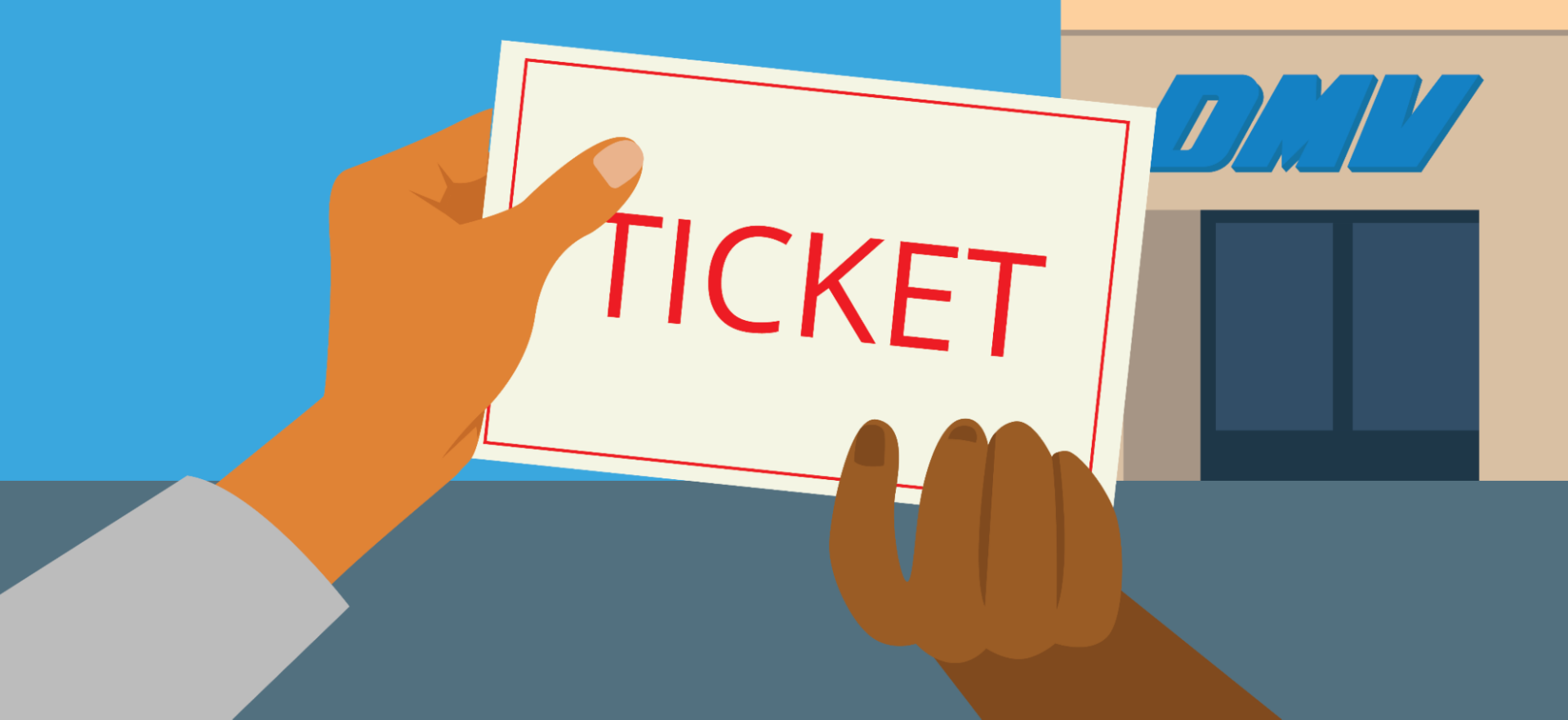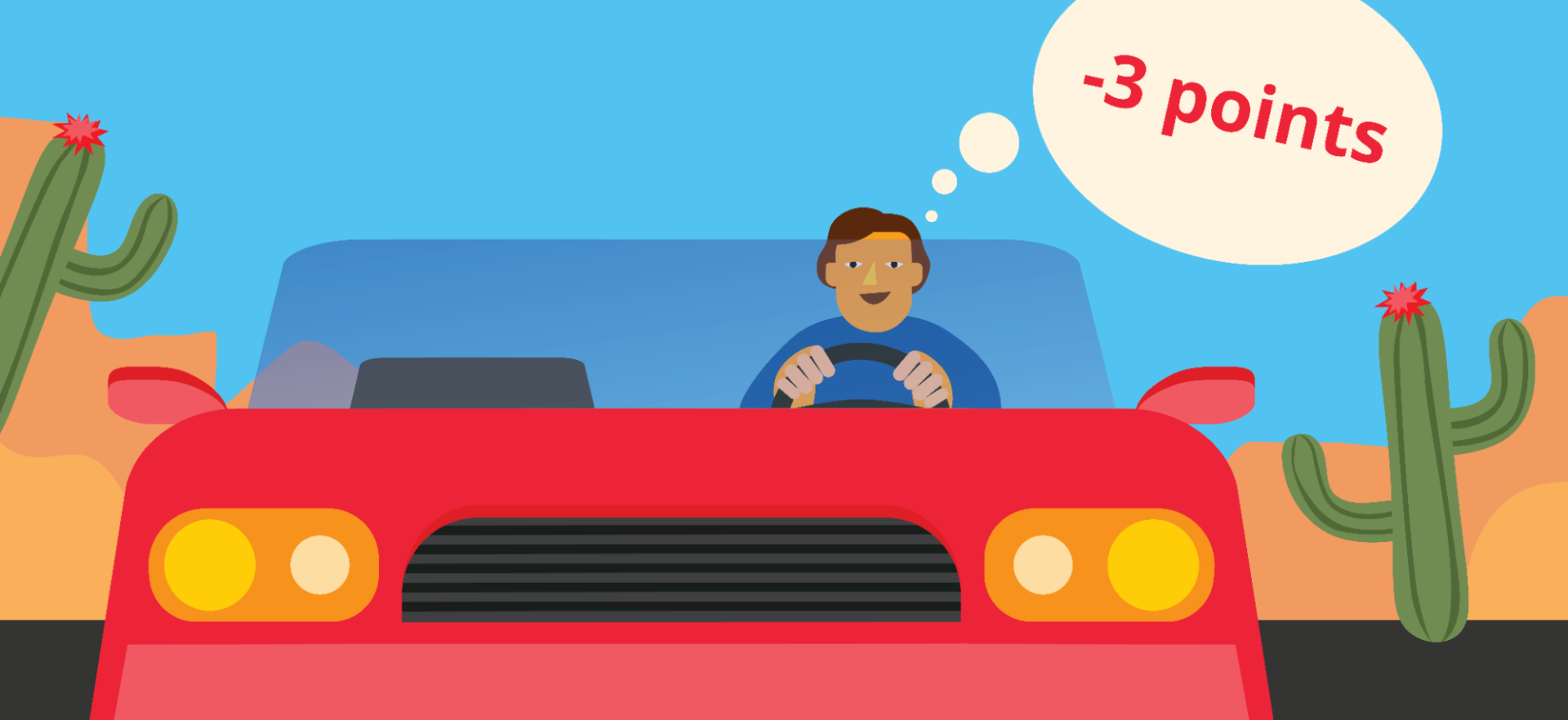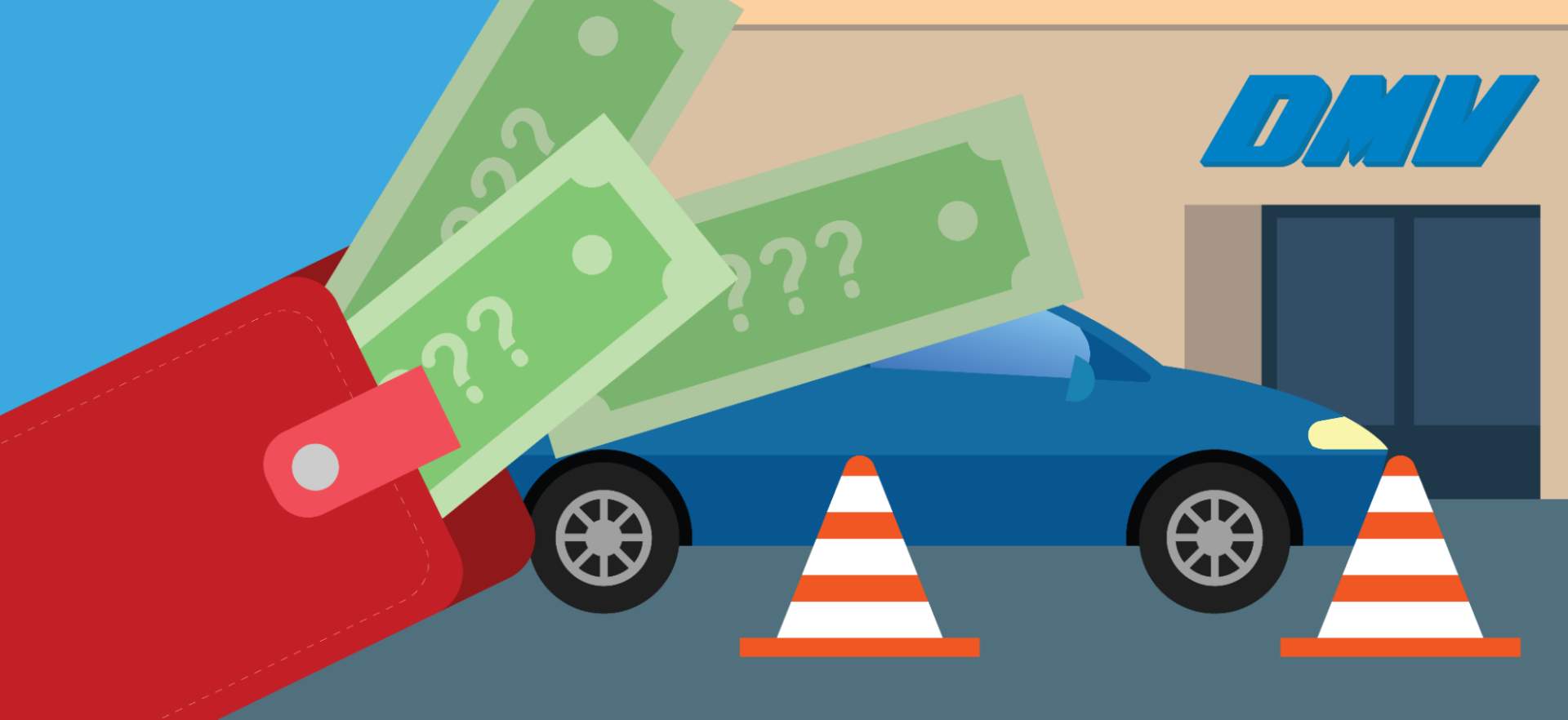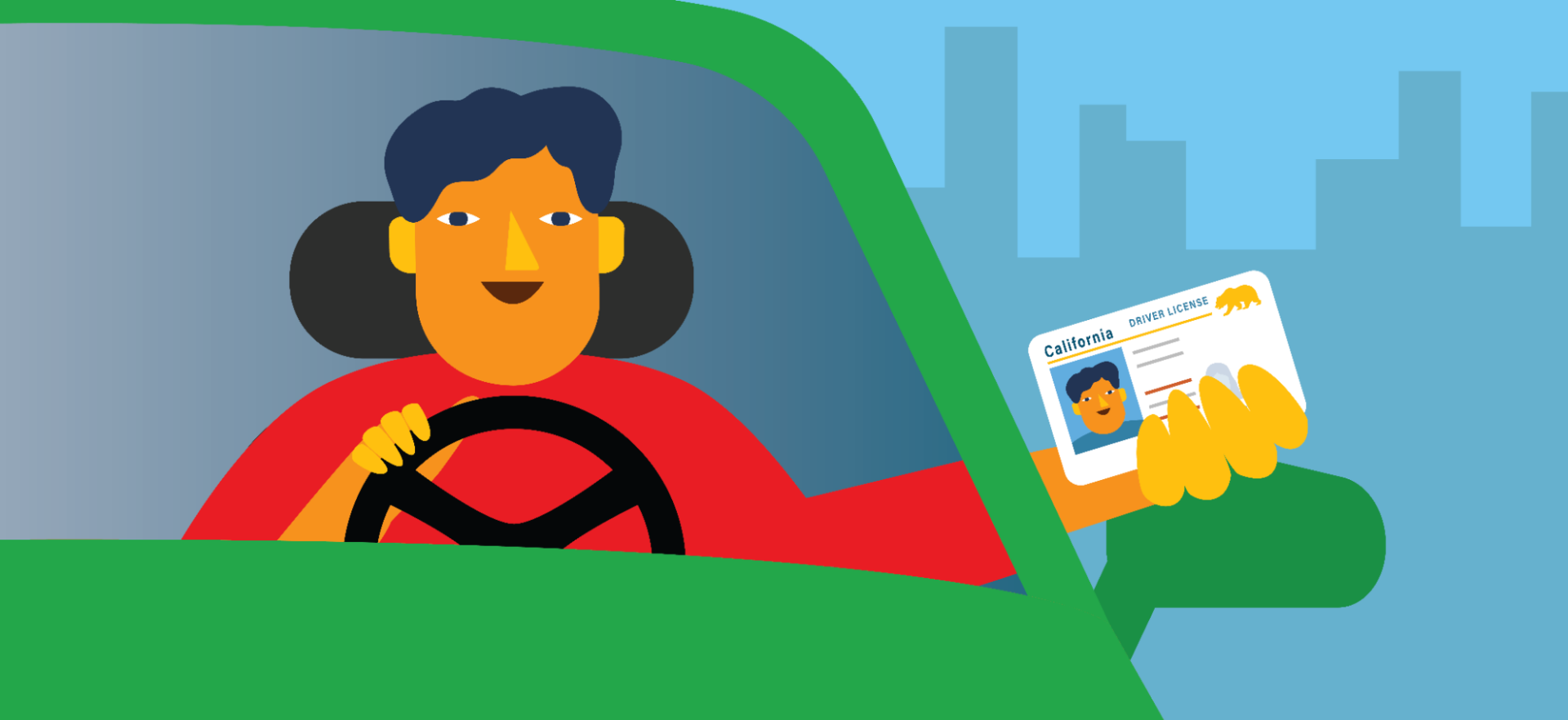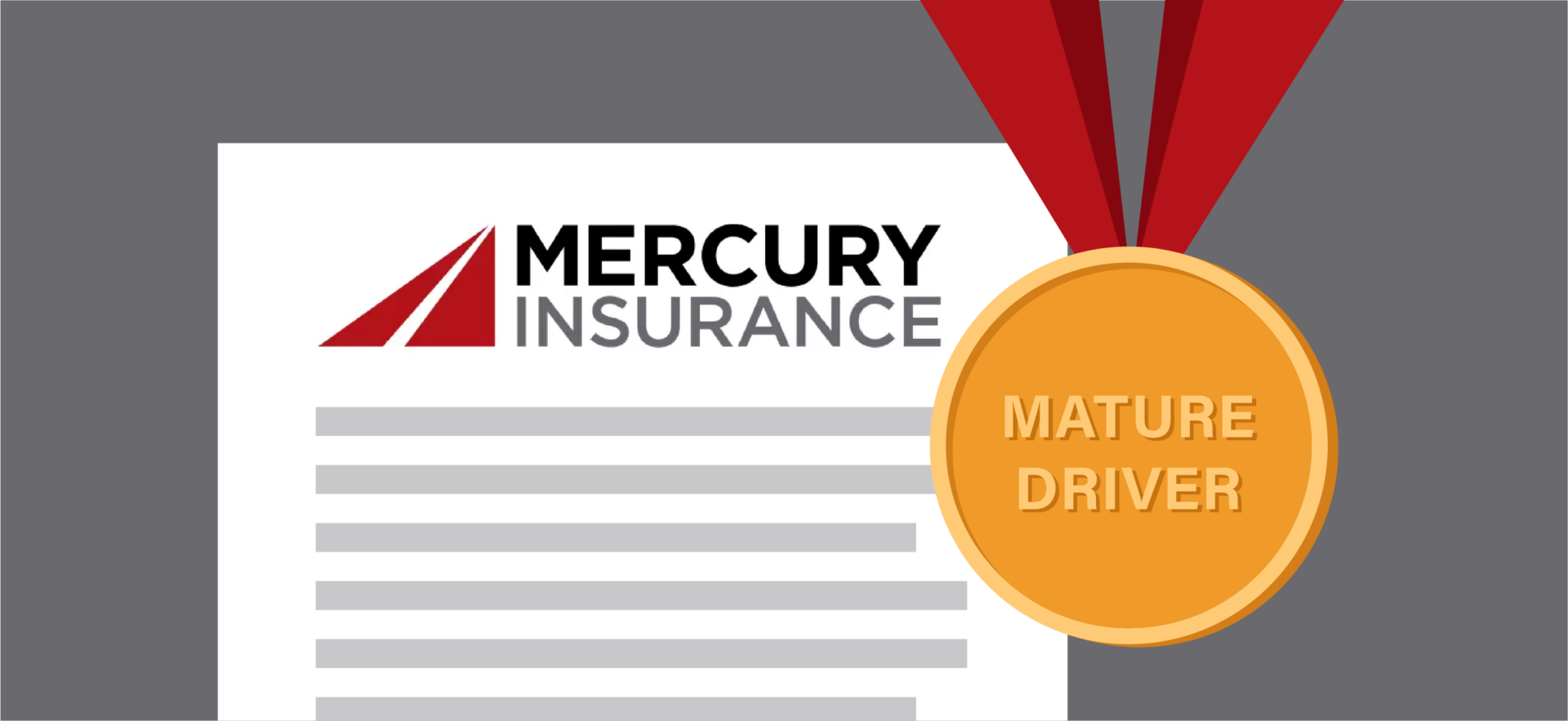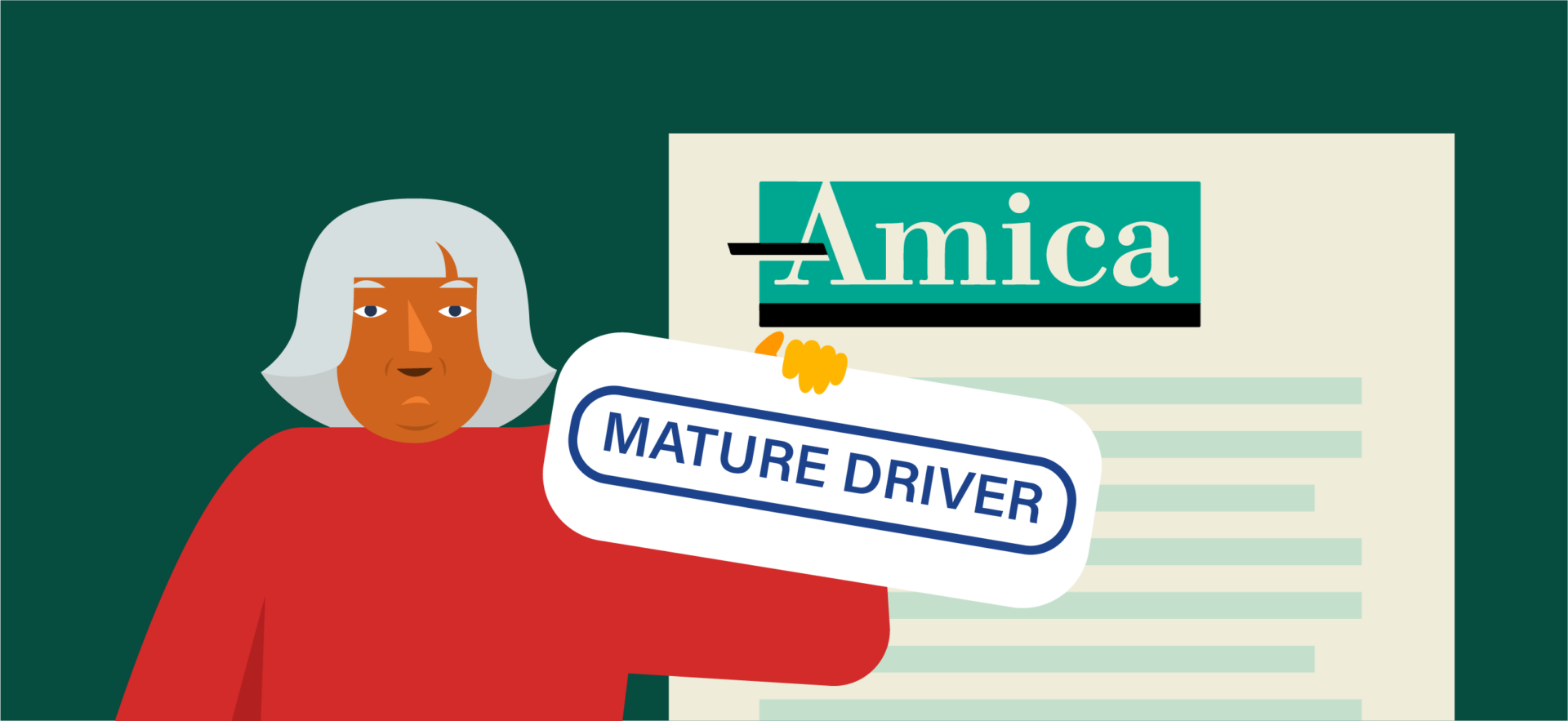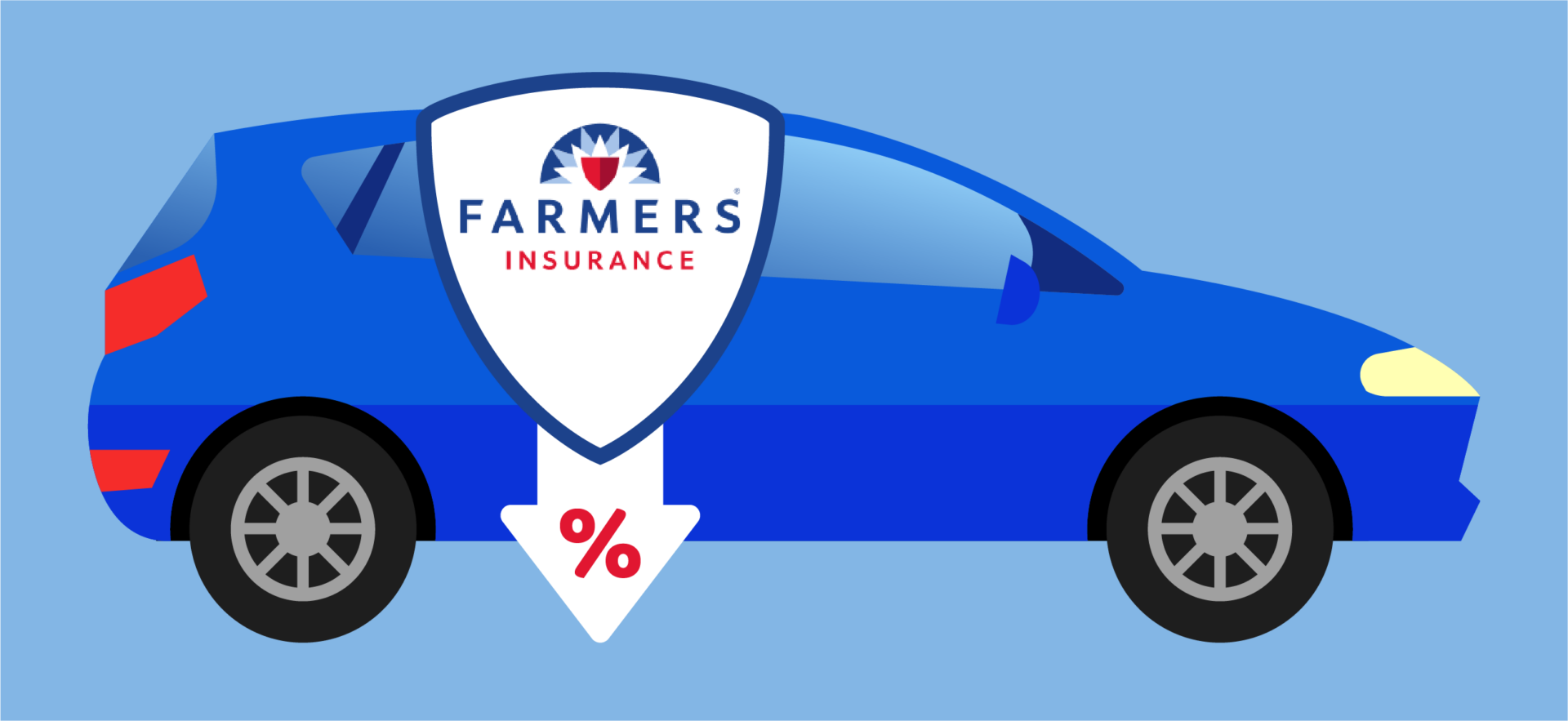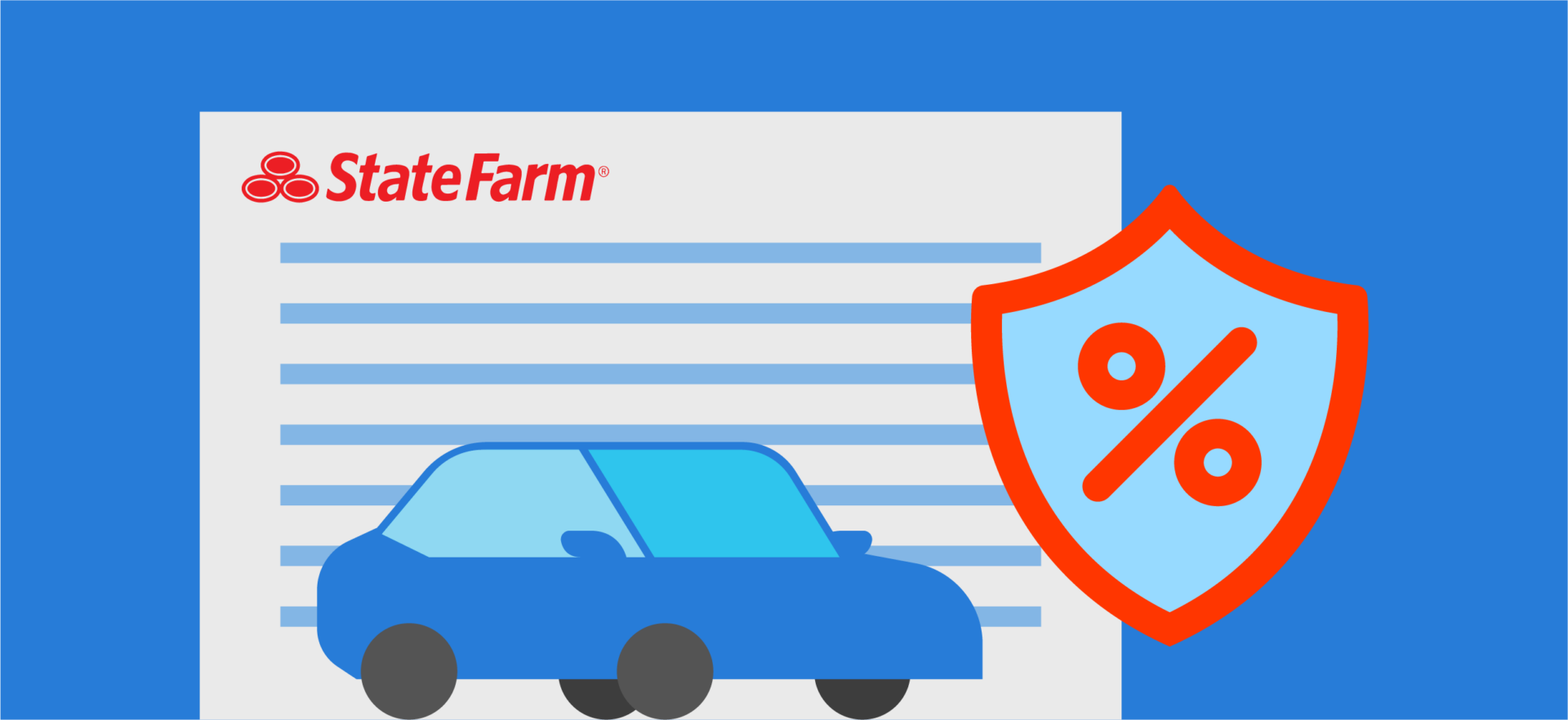No matter your age, you must pass a road test to get your driver’s license. This exam will assess your ability to control the car in traffic and perform various maneuvers, like U-turns and lane changes. It also covers the different types of parking, such as parallel and reverse-angle parking.
The behind-the-wheel test is difficult as is, but what makes it even more challenging is the examiner’s presence. Knowing that someone is watching your every move can leave you feeling stressed and anxious. As a result, you could end up making more mistakes than usual.
This guide will show you how to prepare for the road test to increase your odds of success. We’ll tell you what to expect on the big day, how to stay calm, what the results mean, and more.
Let’s get started.
Still need to pass your driver’s ed knowledge test? Learn more about the driver’s ed test questions.
Understanding the Behind-the-Wheel Test
The road test, or behind-the-wheel test, is a practical exam covering various scenarios you’ll encounter while driving. It lasts around 20 minutes, during which the examiner will assess your skills based on a score sheet.
This evaluation is meant to determine whether or not you’re ready to drive by yourself. The examiner will want to see that you can turn the car safely, react quickly in traffic, and park without hitting other vehicles or objects.
You must also prove you are able to:
- Stay centered in your lane at all times
- Use proper turn signals
- Adjust the speed as needed
- Yield the right-of-way to other road users
- Maintain a safe distance from the vehicle ahead
- Anticipate potential hazards and react accordingly
- Park uphill or downhill
- Do a three-point turn
- Steer smoothly
- Check for blind spots
- Observe all traffic signs and signals
Sure, 20 minutes is not enough to thoroughly test your driving skills. But it’s still enough time for the examiner to assess your fundamental abilities and knowledge of the traffic laws.
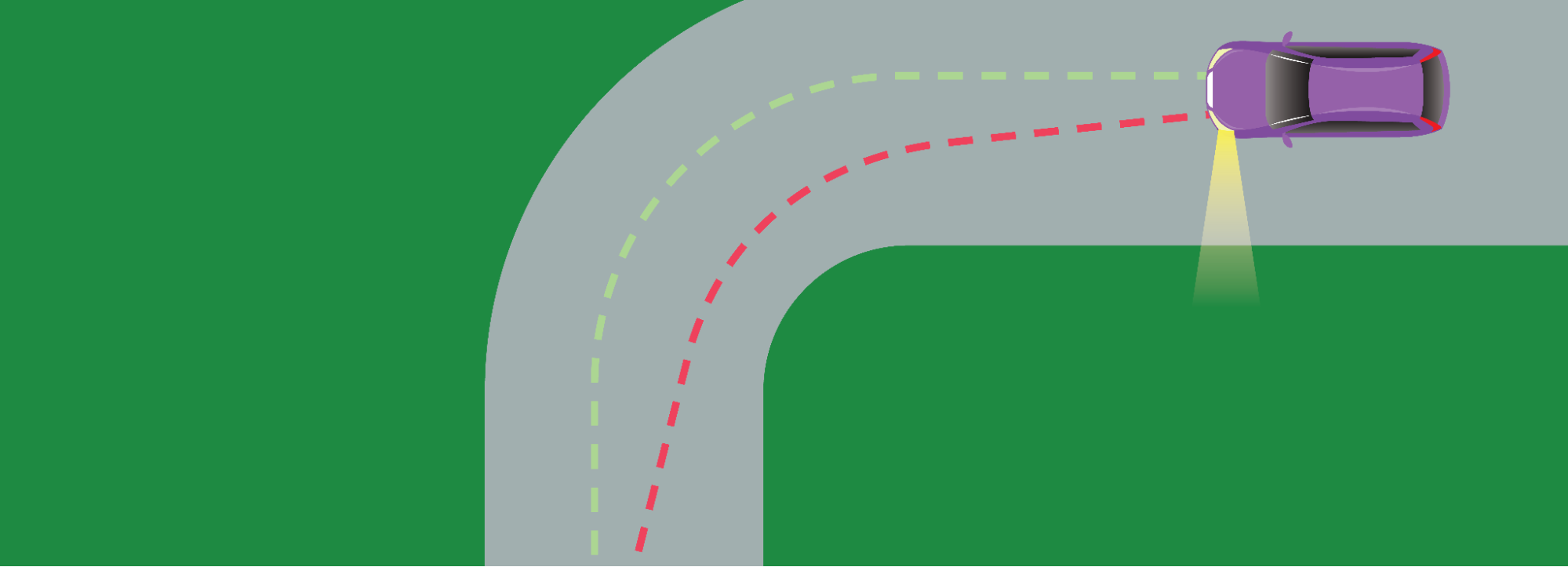
For example, cutting corners demonstrates poor control of the car. Other mistakes, such as making unnecessary stops, indicate poor situational awareness or a lack of confidence.
Structure of the Test
In California, road tests are administered by the Department of Motor Vehicles (DMV). First, you’ll be assigned a DMV examiner whose role is to assess your driving skills. Before starting the test, they’ll take you through a pre-drive checklist to ensure you’re ready to hit the road.
The checklist covers basic tasks, such as putting your seat belt on and locating the headlight switch. You must also demonstrate that you know the hand signals for left and right turns, stopping, and slowing down.
If everything goes well, the examiner will let you begin the test. They’ll give you clear directions, but without saying what lane you should be in or where to enter and exit roundabouts.
As you drive, you’ll be scored in several areas, such as:
- Parking lot driving
- Freeway or highway driving
- Intersections
- Backing
- Turns
During this time, the examiner will take notes and fill in the score sheet. If you make a major mistake, such as hitting an object or entering the wrong lane, they’ll stop the car and disqualify you.
The test shouldn’t take longer than 20 to 30 minutes. Its duration depends on the traffic, weather, and your driving abilities. For instance, some students drive slower or need more time than others to park their cars.
Get your California driver’s license with our comprehensive driver’s education course!
How to Prepare for Your Road Test
If you’re over 18 years old and live in California, you may apply for a driver’s license without going to driving school. However, you should still consider taking a driver’s education course to refresh your knowledge.
This step will ensure you’re up-to-date with traffic laws and regulations, which can increase your chances of passing the road test. Plus, it’s an opportunity to practice driving under the guidance of an experienced instructor.
For example, you can ask the instructor to show you the most common test routes in your area. This is a bit more difficult if you live in a big city, but it should give you an idea of what to expect during the test.
That said, here are some tips to help you prepare for your road test appointment:
- Get plenty of practice: If you have a learner’s permit, use it to practice driving under various weather and road conditions. Learn to drive in fog, at night, and in peak traffic.
- Watch video tutorials: Look for tutorials on how to park, change lanes, do a two-point turn, and more. Or sign up for a driver’s ed (ED) course so you have access to online videos, simulations, and interactive resources.
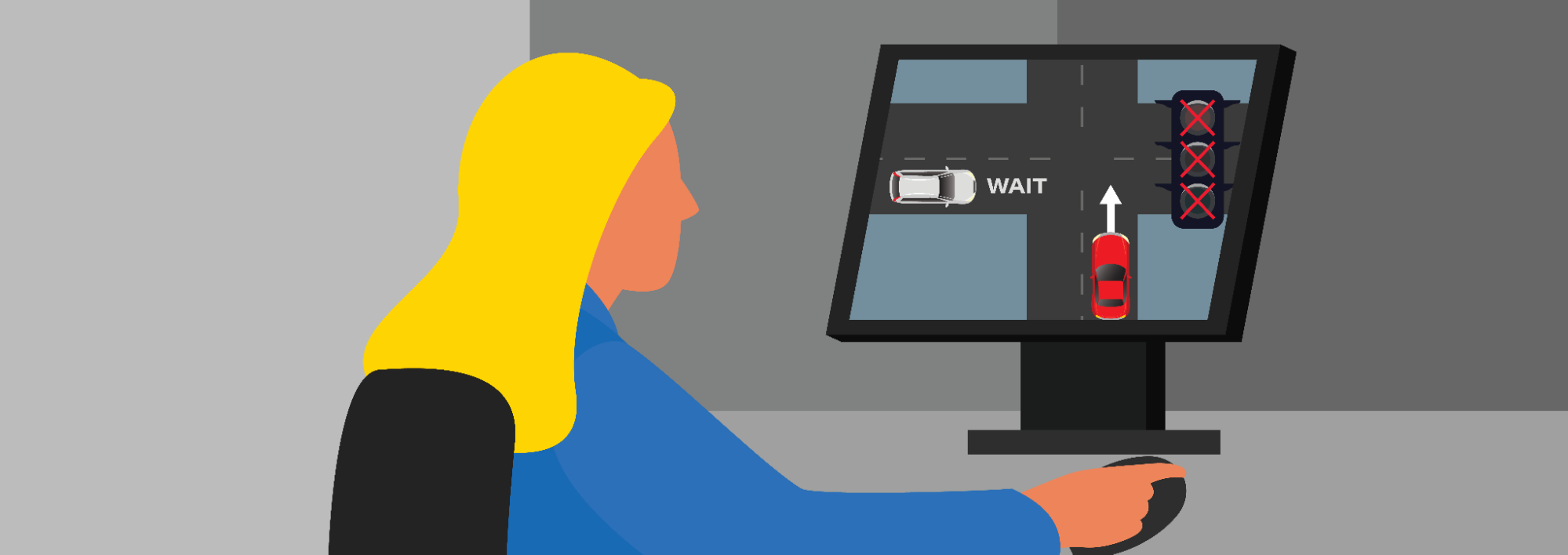
- Test your knowledge: Take practice tests that include DMV-like questions. Go over the questions you struggle with until you get the answers right.
- Pay attention to your surroundings: Familiarize yourself with the different road signs and their meanings. Look for them while walking, driving, or cycling—and try to understand what they’re telling you. Also, pay attention to road lines and markings.
- Get to know your car: Become accustomed with the car you plan to use for your road test. Practice until you’re able to steer it smoothly, and familiarize yourself with its dashboard and buttons.
- Take a mock test: Book a mock road test with your driving instructor or someone else. They’ll act as examiners, assessing your skills on the road.
Last but not least, practice more difficult driving maneuvers, like parallel parking, reverse parking into a bay, and three-point turns. Make sure you’re able to safely reverse around a corner, perform a hill start, and do an emergency stop.
Helpful Resources
Listed below are some resources you can use to prepare for the behind-the-wheel test. Set aside at least one or two hours every day to take practice tests, watch video tutorials, and learn the traffic laws.
- California Driver’s Handbook
- 2024 California DMV Permit Practice Test
- Parent-Teen Training Guide
- DMV’s Driving Test Criteria
- Safe Driver Checklist
- Driver Education Videos
What to Expect on the Day of Your Test
The big day is finally here, so make sure you have everything ready for your behind-the-wheel test.
Bring the Necessary Documents
For starters, book an appointment with the California DMV and bring the following:
- Your learner’s permit or driver’s license*
- A car that meets the DMV’s requirements
- Proof of vehicle registration
- Proof of financial responsibility (e.g., an auto insurance policy or a rental vehicle contract)
- Proof of residence
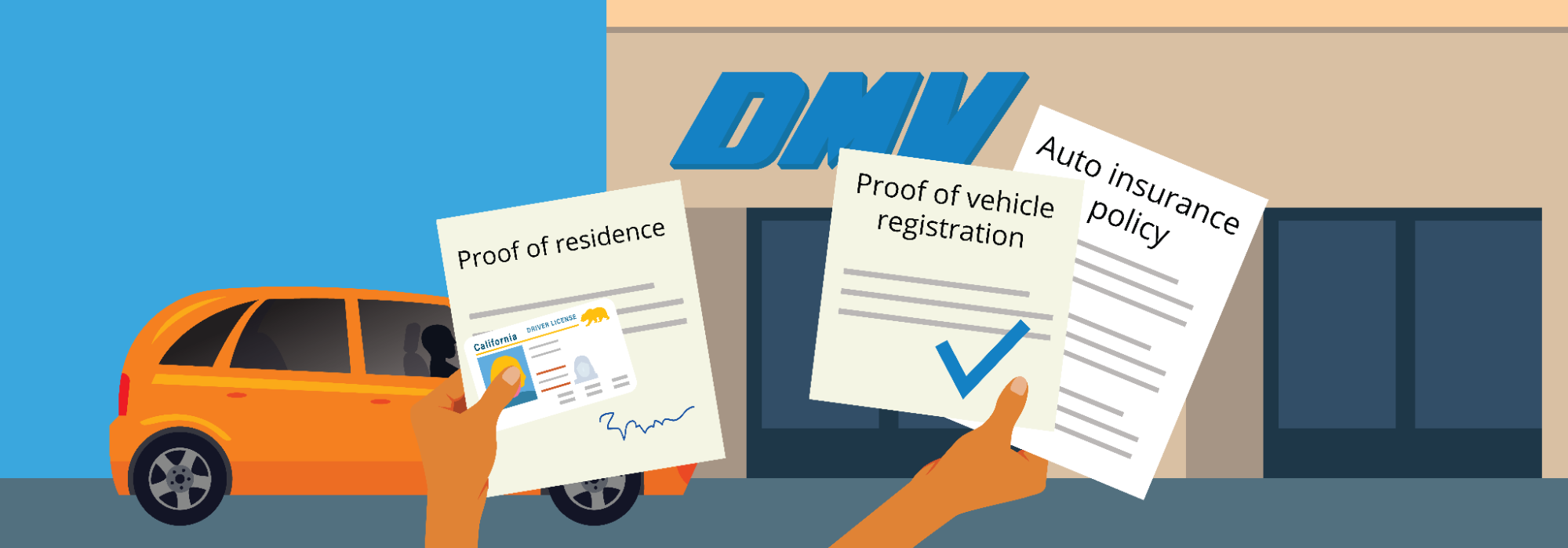
*The road test isn’t just for those who are applying for a driver’s license. It’s also mandatory for licensed drivers with vision problems or certain health conditions and other groups, such as people holding a license from a foreign country.
Apart from that, it’s necessary to be accompanied by a driving instructor. If you don’t have one, bring an adult driver licensed in the Golden State. Underage candidates must be accompanied by a California-licensed driver who is at least 25 years old.
Make Sure Your Car Is Safe to Drive
The car you’ll be driving must meet certain criteria, or you’ll not be allowed to take the test.
Your examiner will check for:
- A working horn, an emergency brake, and safety belts
- A windshield in good condition
- A passenger seat
- Tires with no bald spots
- Functioning brake lights and turn signals
- Two rear-view mirrors
- Two license plates
- Proper brake pressure
Also, make sure the window on the driver’s side rolls down and the glove box stays closed. Remember to check the fuel level, too.
Keep Your Calm During the Test
While it’s normal to feel anxious before a road test, you shouldn’t let your nerves set you up for failure.
Here are some tips to help you out:
Get Enough Sleep
Try to get at least eight hours of sleep prior to your test. Go to bed earlier than usual and read a book or meditate for 10-15 minutes to calm your mind.
Not only does sleep deprivation increase stress and anxiety, but it also affects cognitive performance, reaction time, and alertness. Plus, it affects your mood and decision-making skills.
Practice Meditation
Meditate for 10 minutes or longer on the days before your road test.
This practice relaxes your mind and body, leading to better emotion regulation. It can also improve mental focus, reduce psychological stress, and enhance sleep quality.
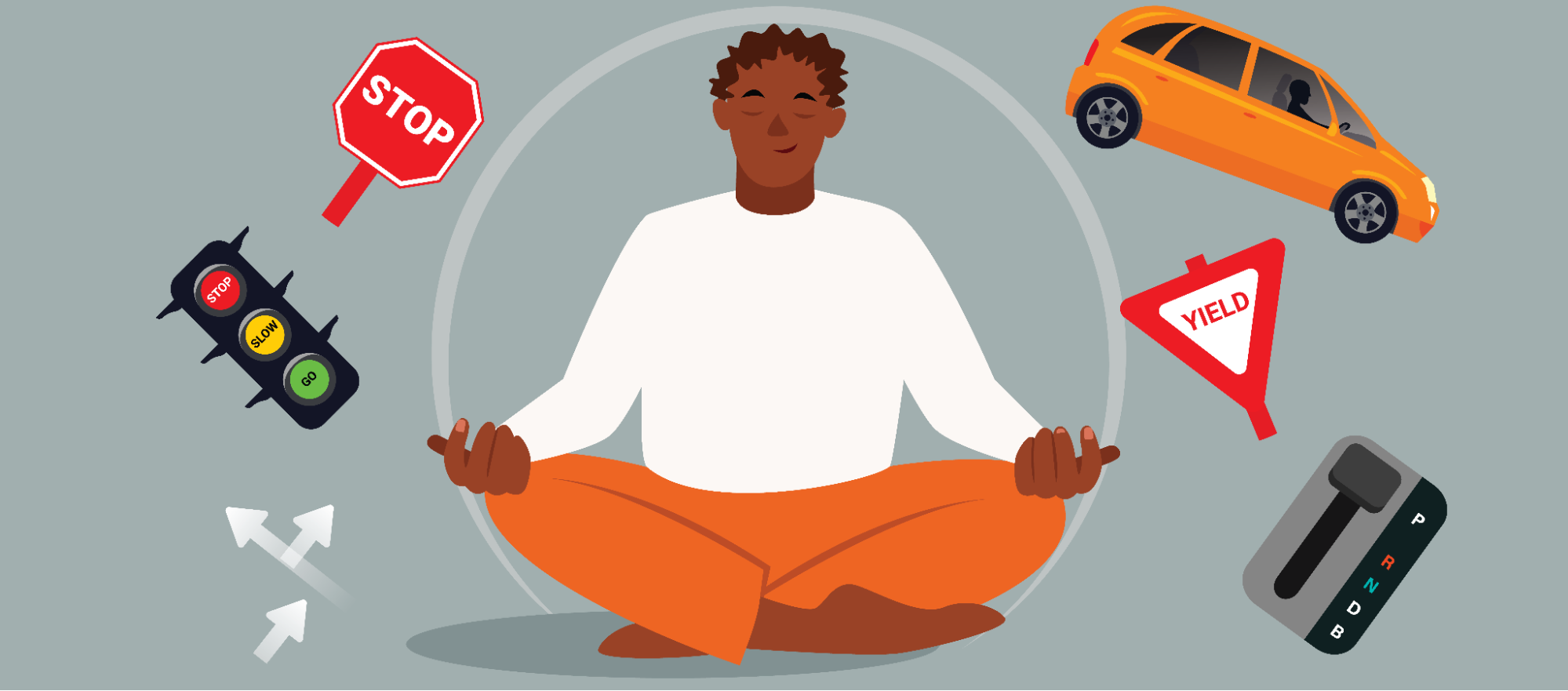
Do Breathing Exercises
Just like meditation, deep breathing can relieve stress and give you a sense of calm. At the same time, it lowers your heart rate, which can further help you relax.
To reap the benefits, do it for at least five minutes at a time. Simply follow these steps:
- Lie down or sit on a chair or sofa, away from noise and other distractions. Keep your back straight.
- Close your eyes while breathing in and out through your nose.
- As your body begins to relax, inhale deeply to the count of four.
- Now hold your breath for a count of four.
- Next, exhale through your mouth to the count of four.
- Hold your breath again for a four-count, and then repeat.
Also, it’s okay to just take a few deep breaths for five to 10 minutes or longer. Focus on the air filling your belly and lungs, and imagine the stress leaving your body with every breath.
Stick to Your Normal Schedule
The more you think about your road test, the more likely you are to get stressed out. So, try to maintain your normal routine before and on the test day.
Hit the gym, watch a movie or TV series, and engage in activities that make you feel good. If, say, you always work out in the morning, schedule the test around 10 or 11 AM so you can get some exercise beforehand.
Keep It a Secret
Refrain from telling everyone about your road test. Otherwise, you may end up putting too much pressure on yourself.
Sure, you can share the news with your family and close friends, but try not to make a big deal out of it.

Stay Positive
Keep a positive attitude, trust yourself, and be open to whatever comes next. If you pass the test, that’s great. If you fail, learn from your mistakes and retake the test when you are ready.
Still feeling stressed? Think of your behind-the-wheel test as a mock test or driving lesson. Visualize yourself driving confidently on a busy road, with the instructor saying, “Keep going, you’re doing a fantastic job!”
Remember, the examiner isn’t there to fail you. Their role is to ensure you can drive safely.
Avoid These Common Mistakes
No one expects you to be a perfect driver during the road test. Chances are, you’ll make more than one mistake due to stress, anxiety, or a lack of experience.
However, some mistakes will cost you more points than others.
For example, failure to obey traffic signals is considered a critical error and will disqualify you on the spot. The same will happen if you hit an object, drive against the traffic, or lose control of your vehicle.
You’ll also want to avoid these mistakes to increase your odds of passing the test:
- Following too closely
- Failure to yield
- Not bringing the car to a full stop at a red signal or stop sign
- Not using turn signals when changing lanes
- Not checking your mirrors as needed
- Missing the speed limit
- Driving too fast or too slowly
- Braking too hard
- Understeering or oversteering
- Making unsafe lane changes
For instance, It’s a good idea to exaggerate your mirror checks so the examiner can tell you’re taking precautions. Move your head to the left or right as needed, even if you see out of the corner of your eye.
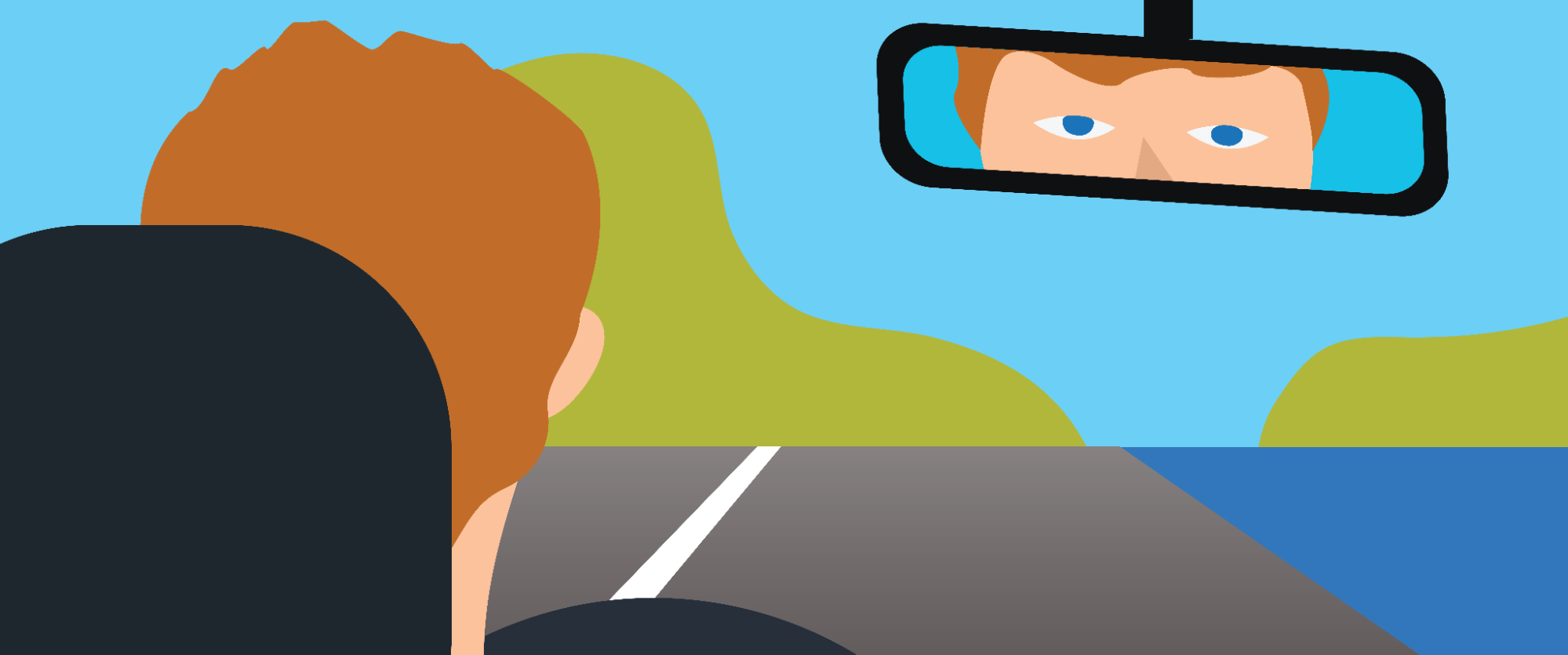
As far as speed goes, stay within 10 to 15 miles per hour below the speed limit in that area. Driving too fast or too slow can cost you points.
Another common mistake is the failure to come to a full stop at a red signal or stop sign. Or when the examiner tells you to do so. While it’s more convenient to slow down, you must stop the vehicle completely.
The examiner will also deduct points for improper parking. However, you should pass the test even if your parking skills are not top-notch. Just make sure you don’t hit another car or object or run over the curb.
Note that you’re not allowed to use assistive technologies, like automated parallel parking. Also, you may not record the test.
Know What Your Examiner Wants
During the road test, your examiner will use terms like “right turn,” “two-point turn,” and “shoulder check,” so make sure you know their meaning. If, for some reason, you don’t understand his directions, ask for clarification.
Maintain a calm and respectful tone throughout the test, even if you’re stressed out. Also, let the examiner know your intentions before starting a maneuver (e.g., “I’m going to change lanes so I can exit the road”). If you realize you made a mistake, acknowledge it to him.
Most importantly, make the examiner feel safe with you as a driver. Leave enough space between you and other cars, slow down at pedestrian crossings, and stick to the speed limit. Always check your surroundings when making a turn or changing lanes, as well as in school zones.
Apart from that, ask any questions before the test begins. Keep conversation to a minimum during the test so you can focus on driving.
What to Expect after the Road Test
The examiner will deduct points for every mistake you make. Certain errors, like speeding or hitting a curb, will lead to an automatic fail. However, you can accumulate up to 15 points for small mistakes and still get a passing score.
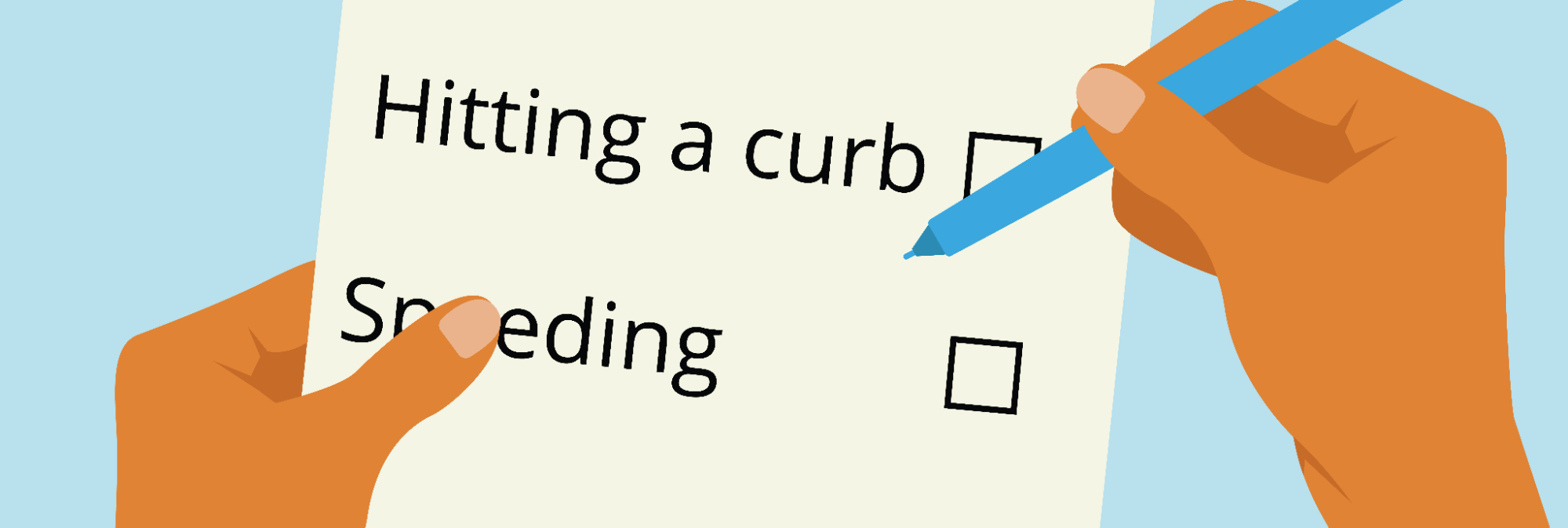
After the test, you’ll receive feedback on what you did well and what you could do better. This is a good time to ask additional questions, such as “What could I do differently to take better turns?”
The evaluation results are listed on the score sheet and depend on the number and severity of errors. Based on these factors, you’ll get a “passing” or “unsatisfactory” score.
What Happens If You Pass the Test
If you’re successful, you’ll be issued a temporary driver’s license, which is valid for 90 days.
In the meantime, you should receive your permanent license by mail.
What to Do If You Fail
Drivers who fail the road test must wait 14 days to retake it. The California DMV allows up to three attempts. If you fail three times, you must pay the license application fee ($45) again and then schedule a new test.
Don’t beat yourself up for failing the test. Instead, learn from your mistakes and use the time between tests to practice.
Focus on the areas where you need the most improvement. If, say, you struggle with U-turns, practice until you get them right. If you’re nervous about roundabouts, drive through them more frequently (at less busy times) to build confidence.
Now let’s assume you have difficulty parallel parking. One solution is to practice in an empty parking lot using cones to simulate cars.
Similarly, you can practice reversing and backing up in low-traffic areas. Do the same for hill starts, left turns, emergency stops, and other driving maneuvers. Some of these are tricky even for experienced drivers, so you have nothing to be ashamed of.
Frequently Asked Questions (FAQs)
1. What should I bring to the behind-the-wheel test?
Bring the following documents to the DMV on the day of your test:
• Your learner’s permit or driver’s license
• Proof of residence in California
• Proof of vehicle registration
• Proof of financial responsibility, such as an auto insurance policy
Also, make sure your car is safe to drive and meets the DMV’s requirement
2. How long does the behind-the-wheel test take?
The behind-the-wheel test takes around 20 minutes, but its duration may vary based on the weather conditions, amount of traffic, and other factors.
3. Can I refuse to perform a driving maneuver?
Yes, you can do that, but it may lead to an automatic fail. Do your best to demonstrate the maneuver, even if you don’t get it perfect.
4. Will I fail the road test if I stall?
Stalling during your road test won’t necessarily disqualify you. However, you may fail the test if you panic and make a critical mistake when the car stalls.
5. Can my driving instructor sit in the back during the test?
Unfortunately, not. The DMV doesn’t allow additional passengers in the car during a road test. Only the examiner can accompany you.
6. Can I take the road test in a language other than English?
If you don’t speak English, you can request an interpreter for the pre-drive inspection. They can also assist you with demonstrating the use of certain controls, such as the windshield wiper switch and turn signals.
Unfortunately, the interpreter cannot accompany you during the test.
7. May I use a rental car for the behind-the-wheel test?
Yes, you can use a rental car, but you must bring a rental agreement and proof of insurance. This option is only available if you already hold a driver’s license, as most rental agencies require one.
8. How long do I have to wait to retake the test if I fail?
If you fail the road test, you must wait at least 14 days to retake it. Use this time to practice and correct the mistakes you made on the previous attempt.
9. What are some common reasons for failing the road test?
Many candidates don’t pass the test due to improper lane changes, poor control of the vehicle, or inappropriate speed. Certain mistakes, such as not giving way to emergency vehicles, will result in an immediate fail.
10. Should I drive slowly during the test?
Driving too slowly can contribute to traffic congestion and, in some cases, lead to dangerous situations. Ideally, stay within 10 to 15 miles per hour below the speed limit.
